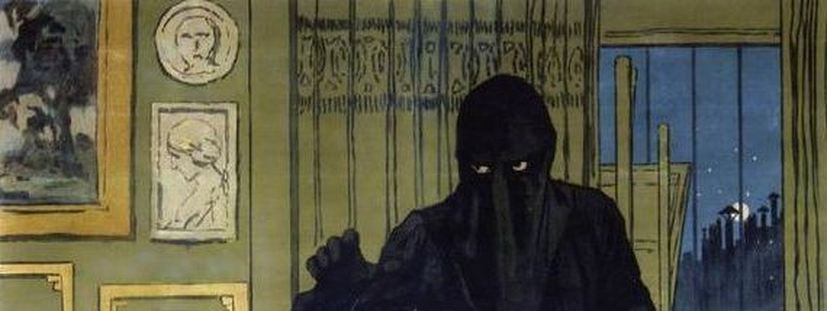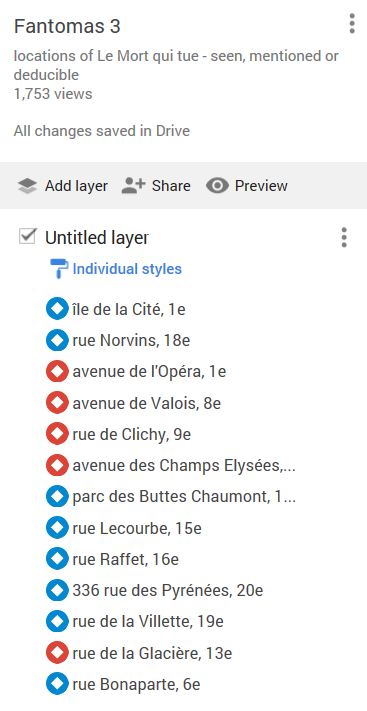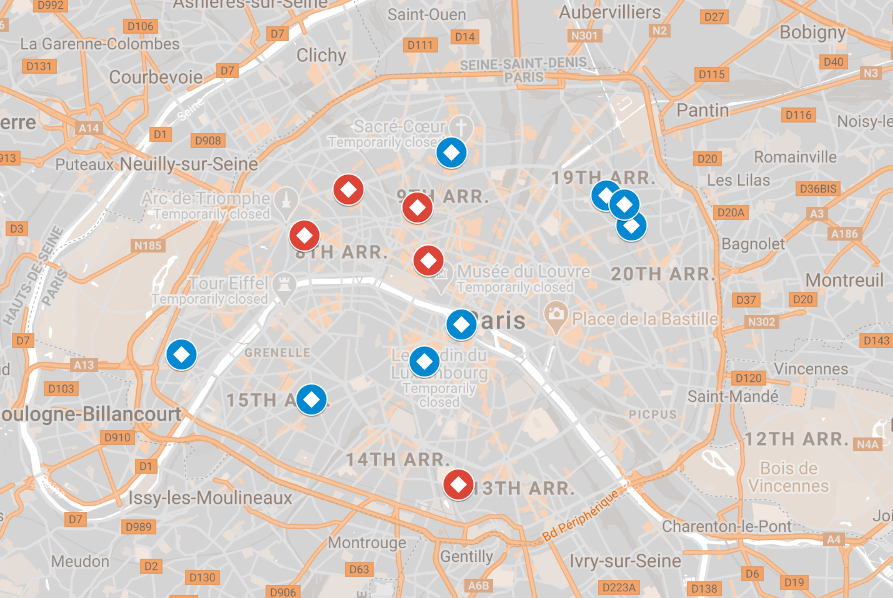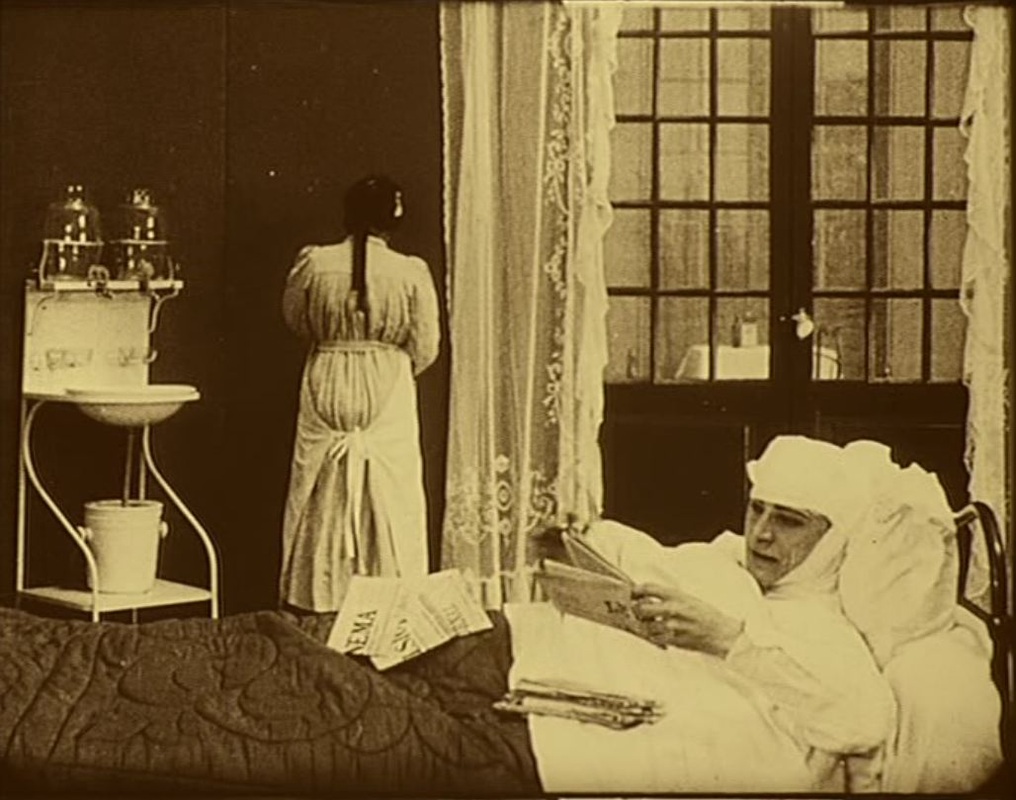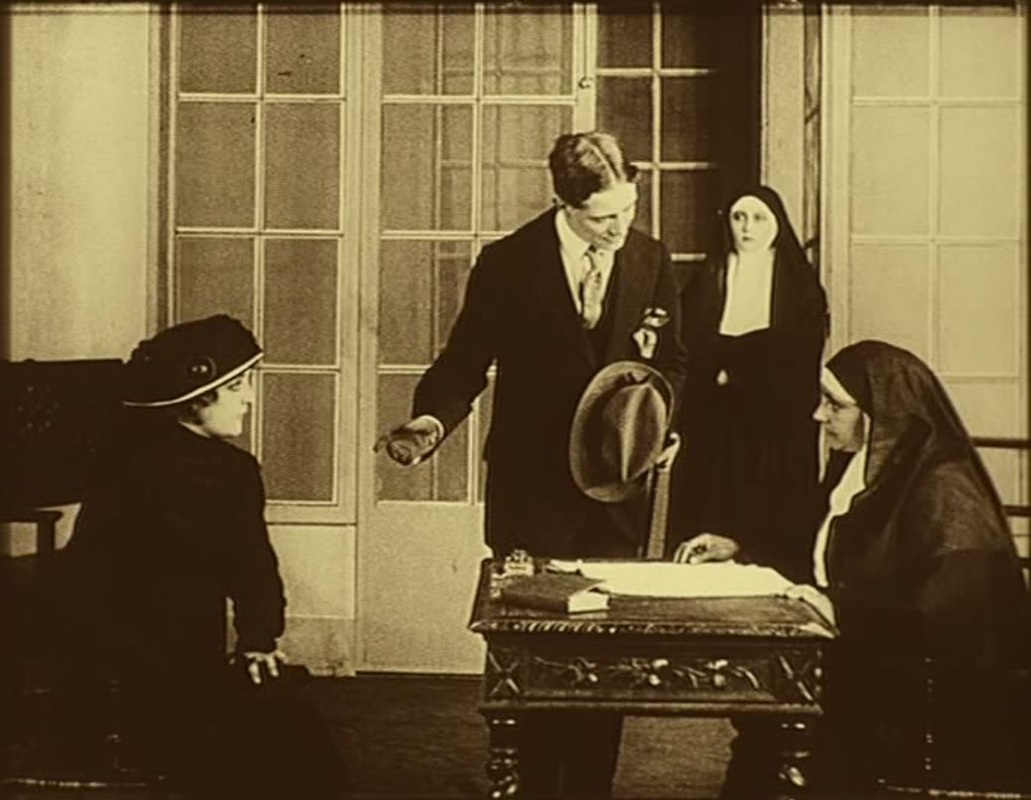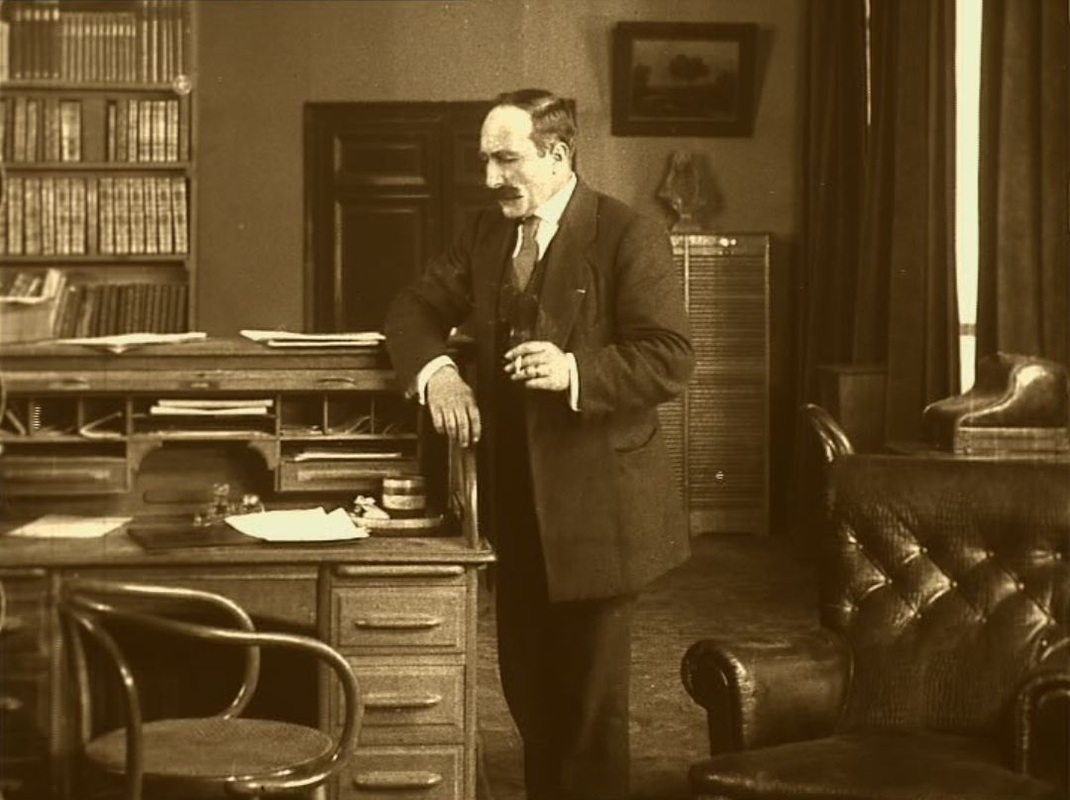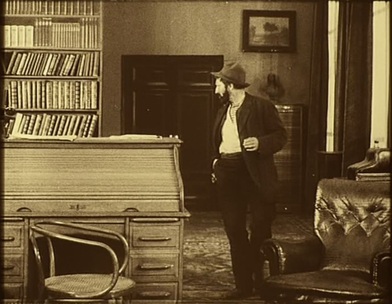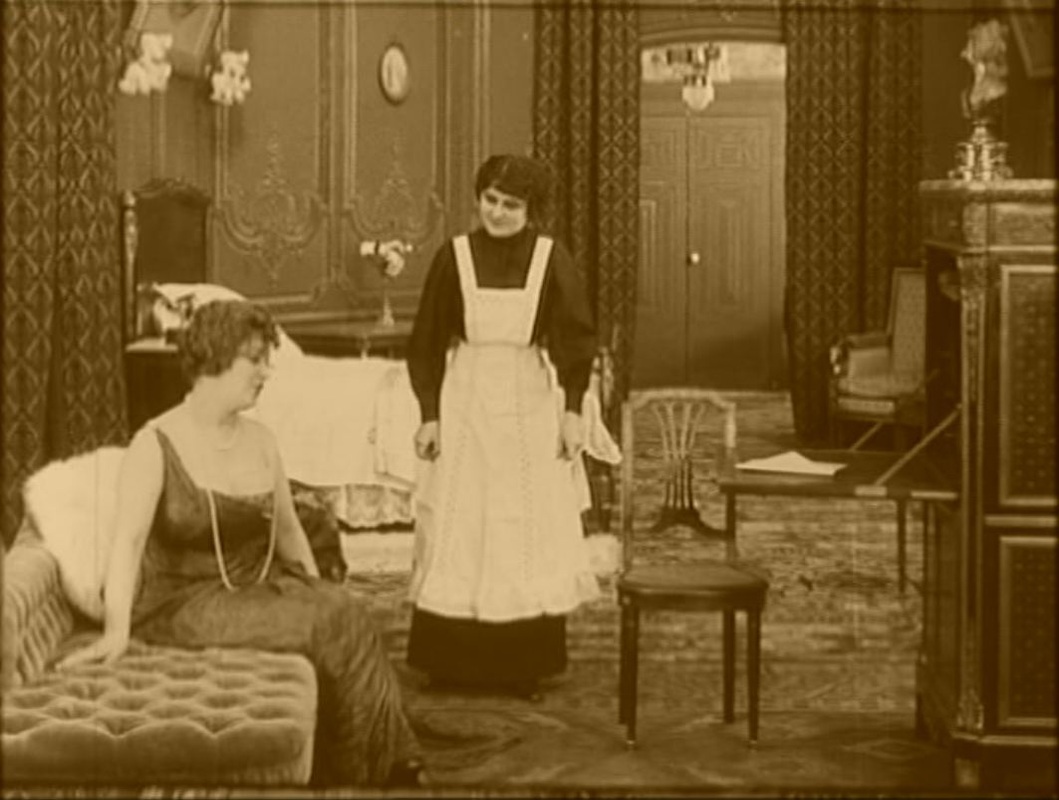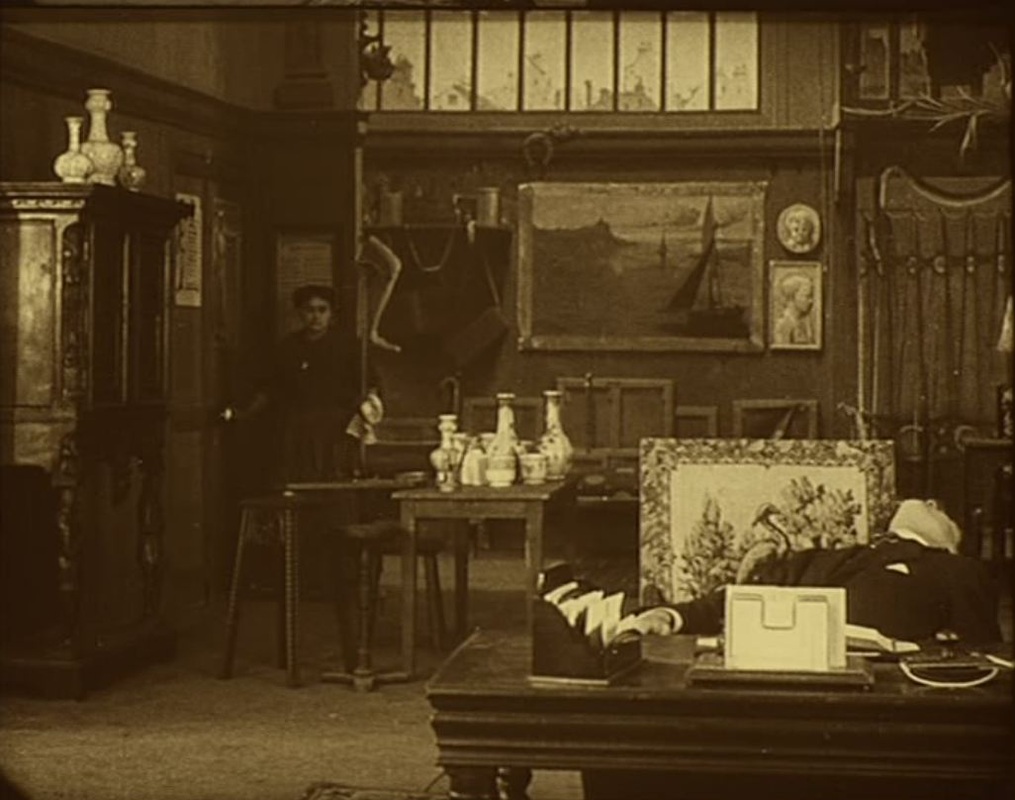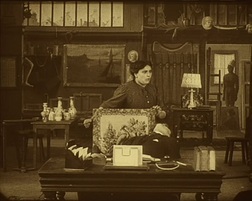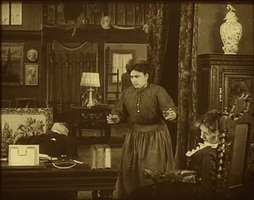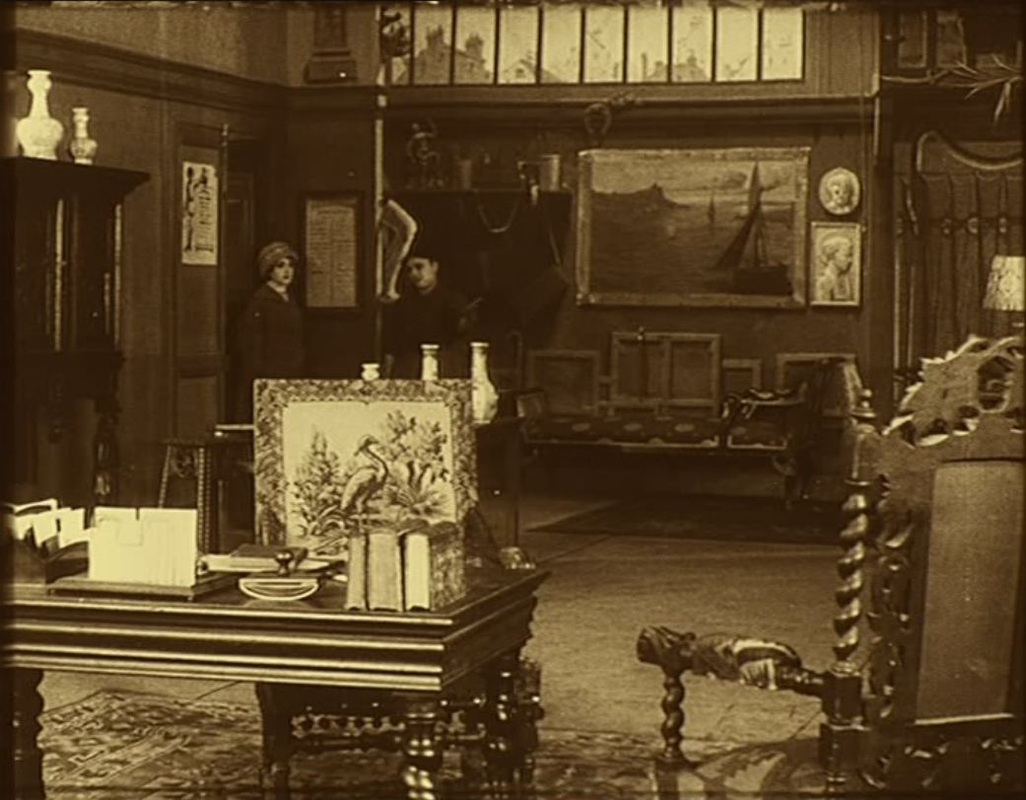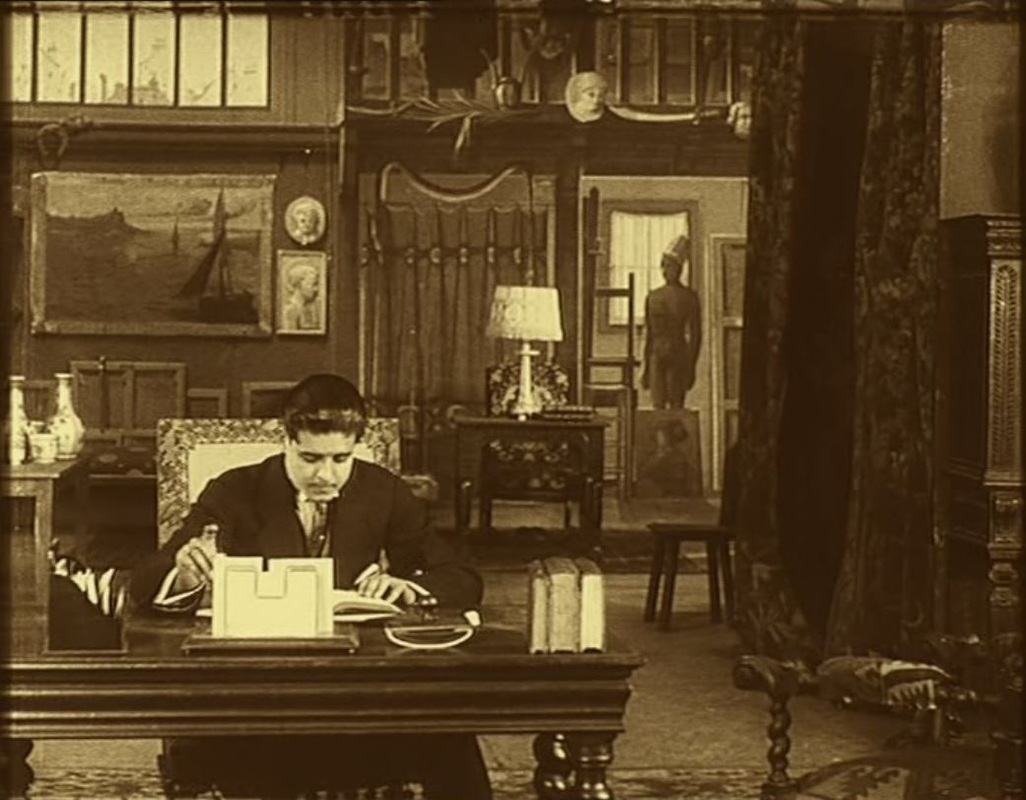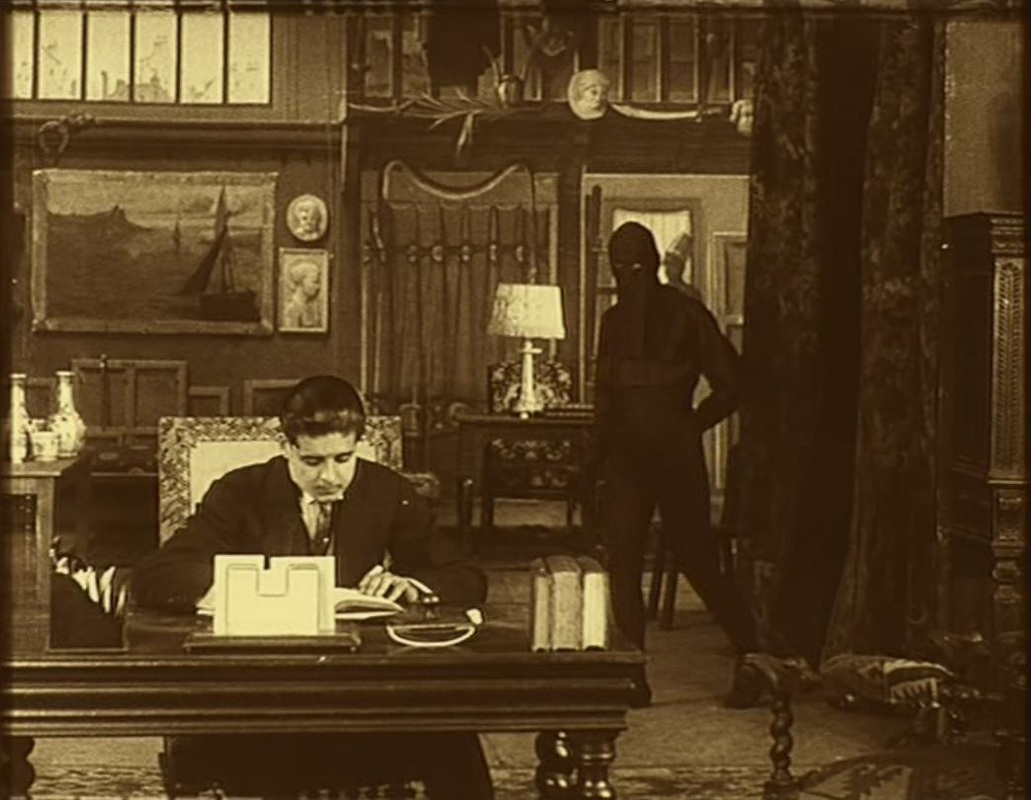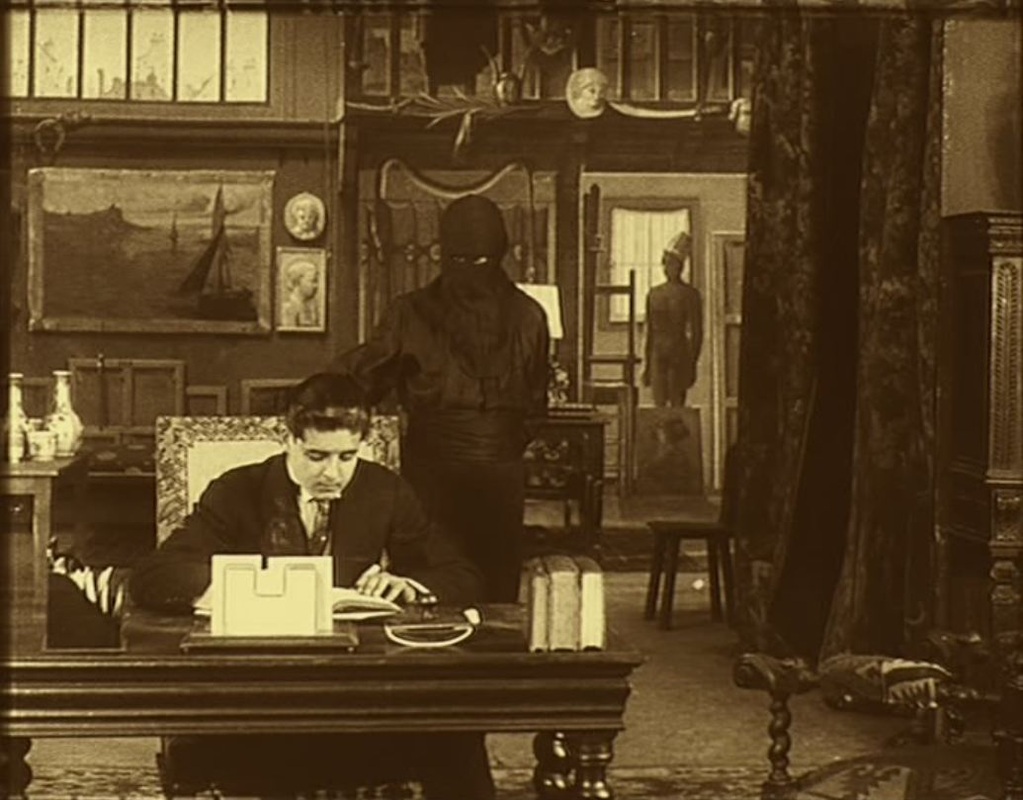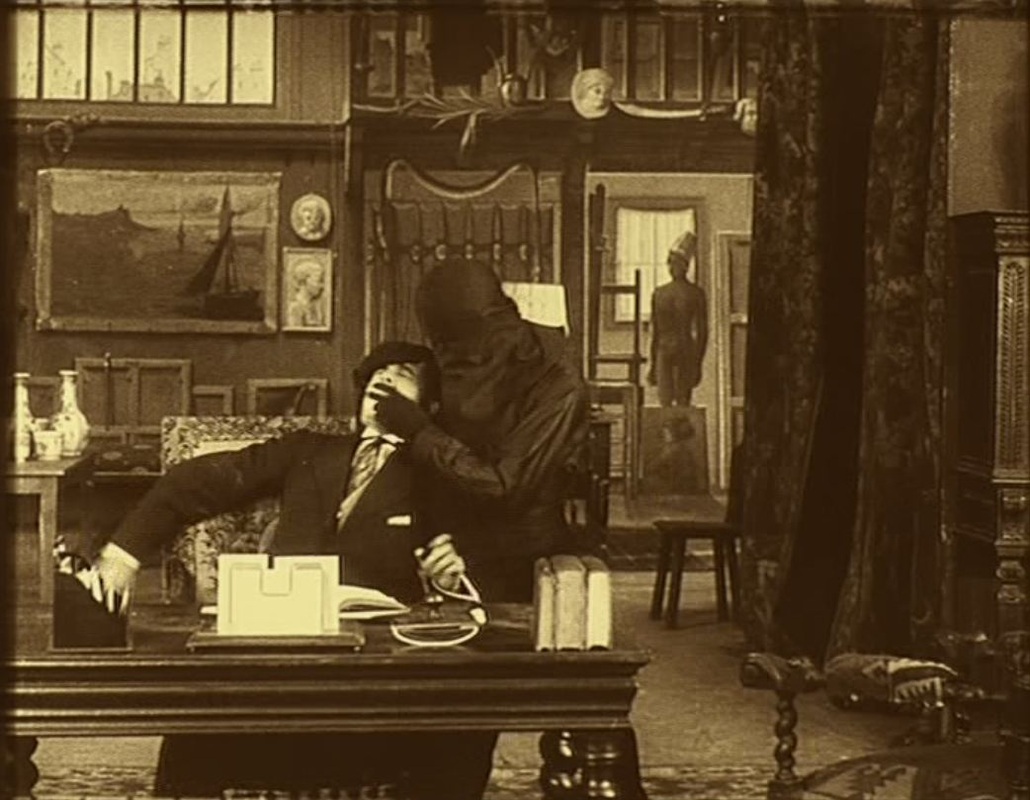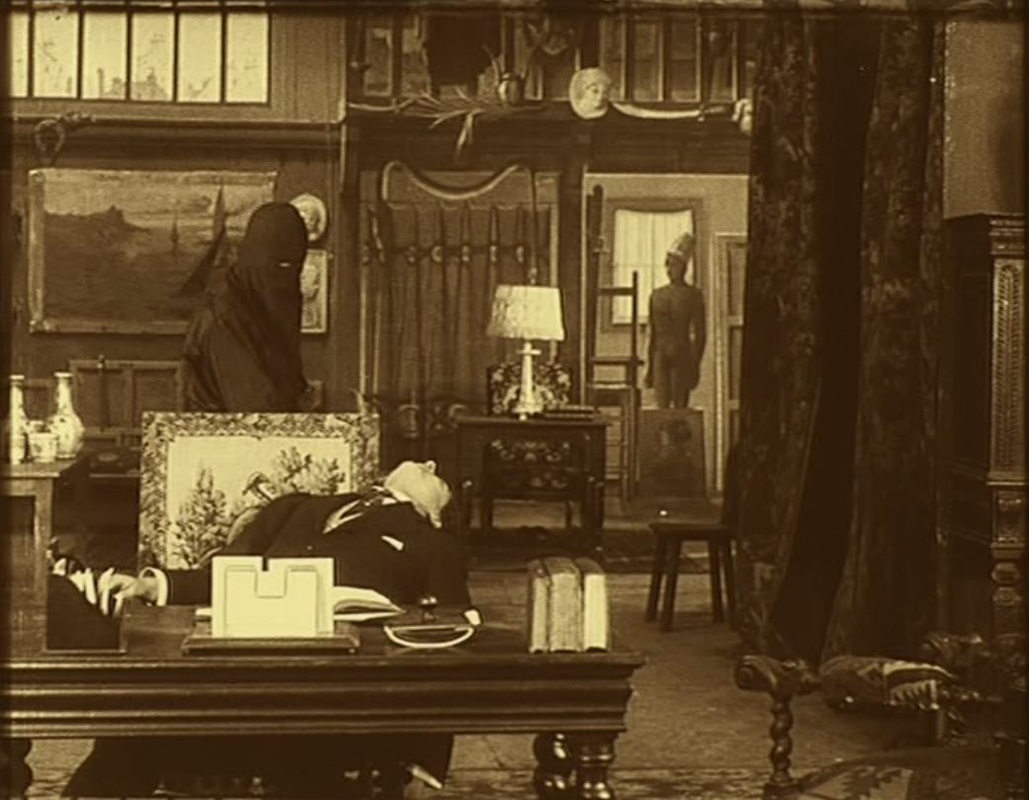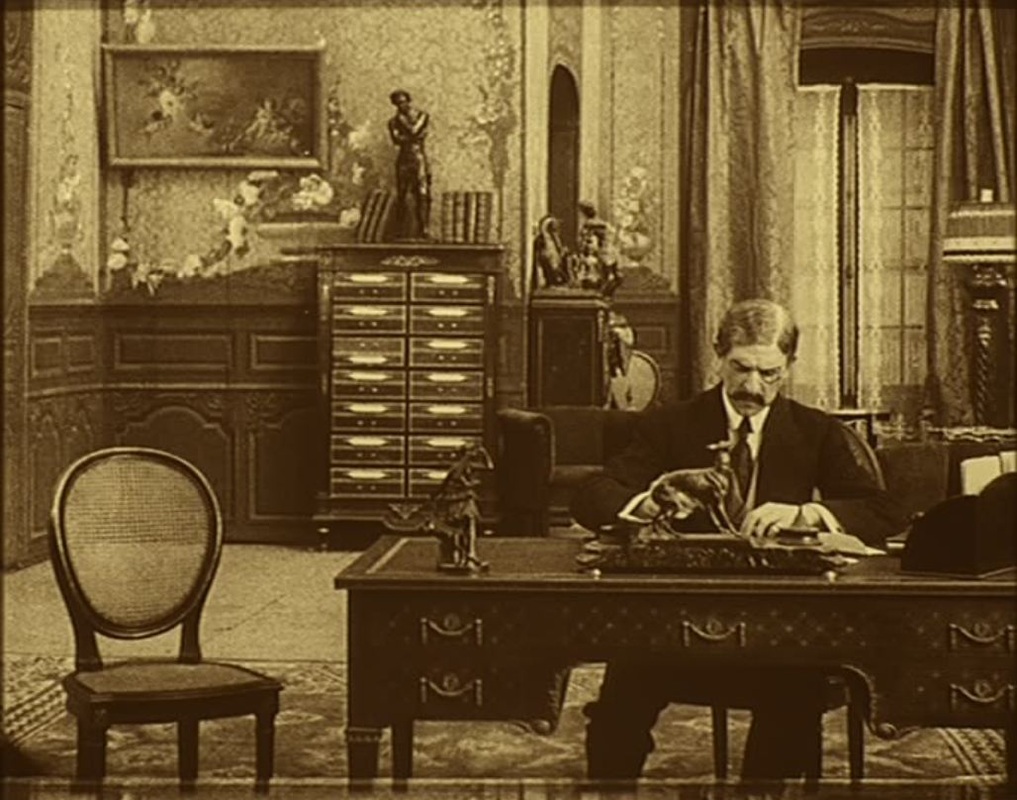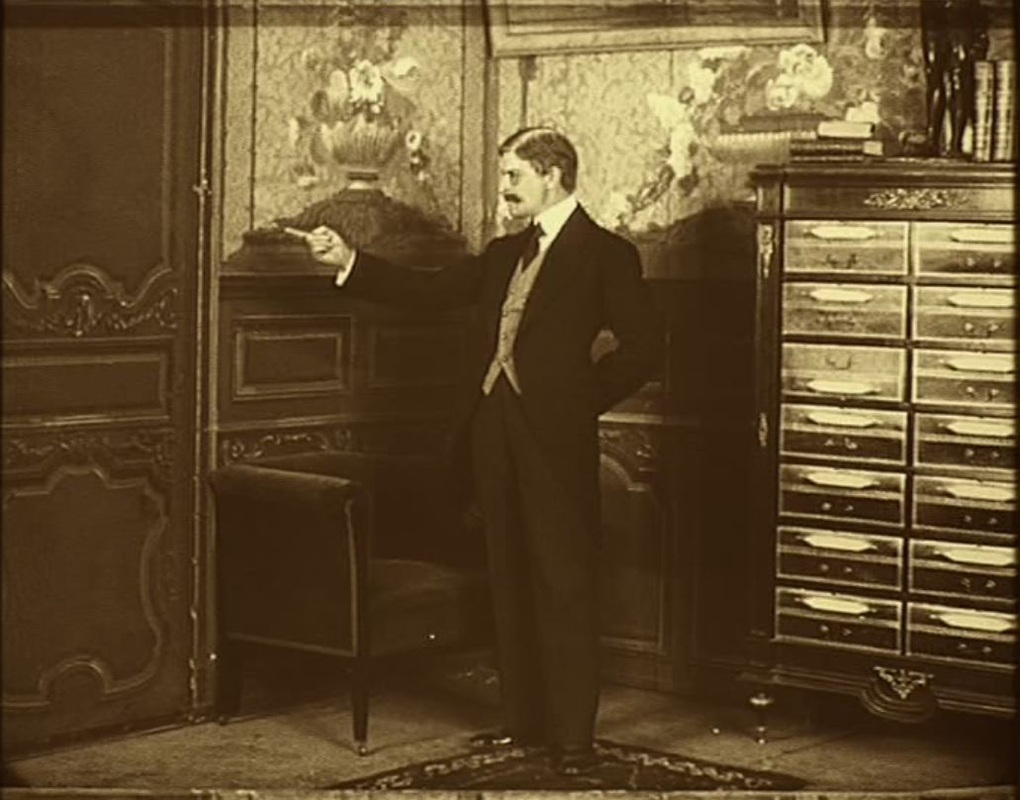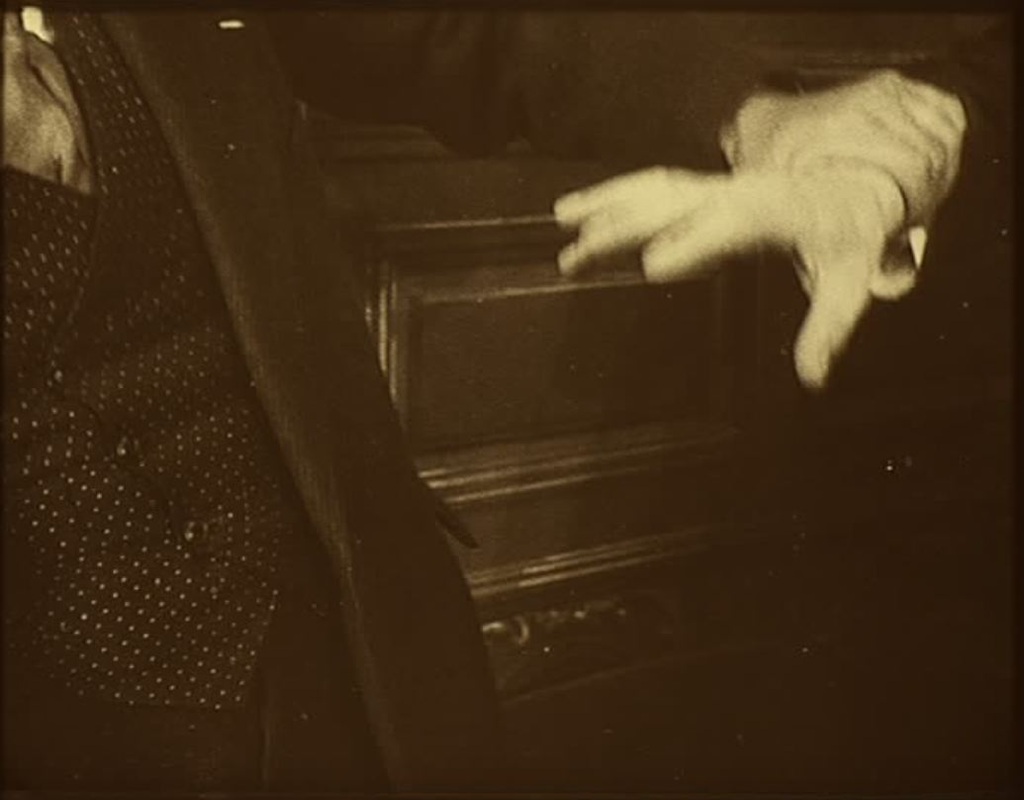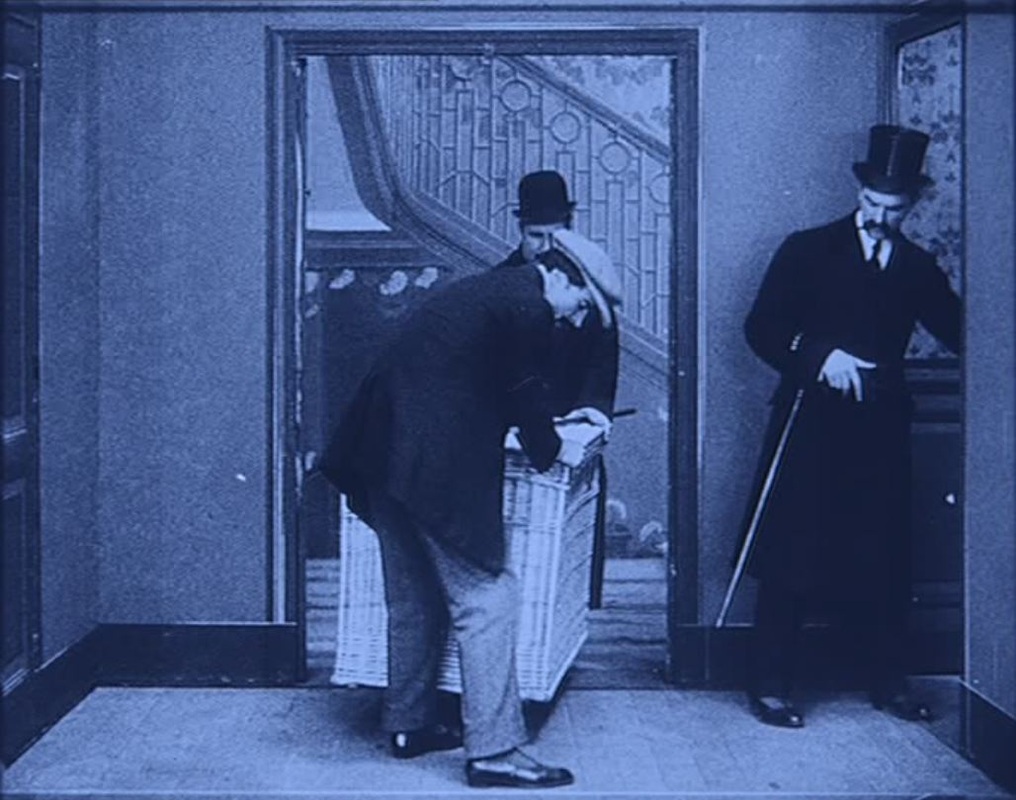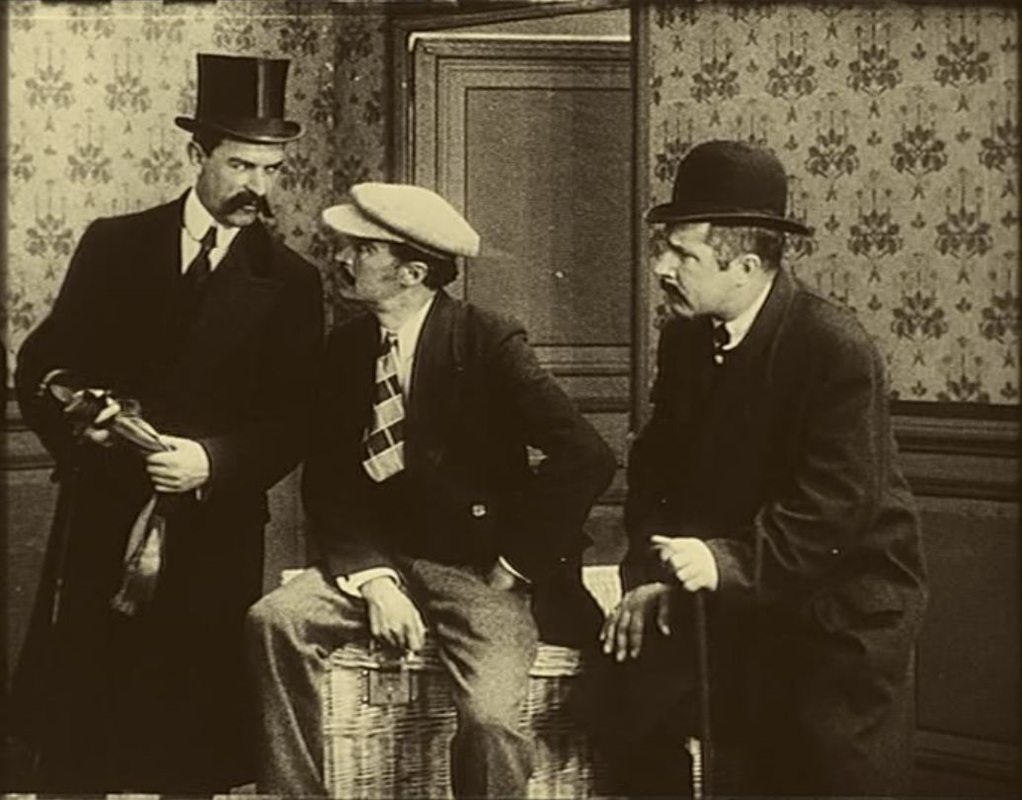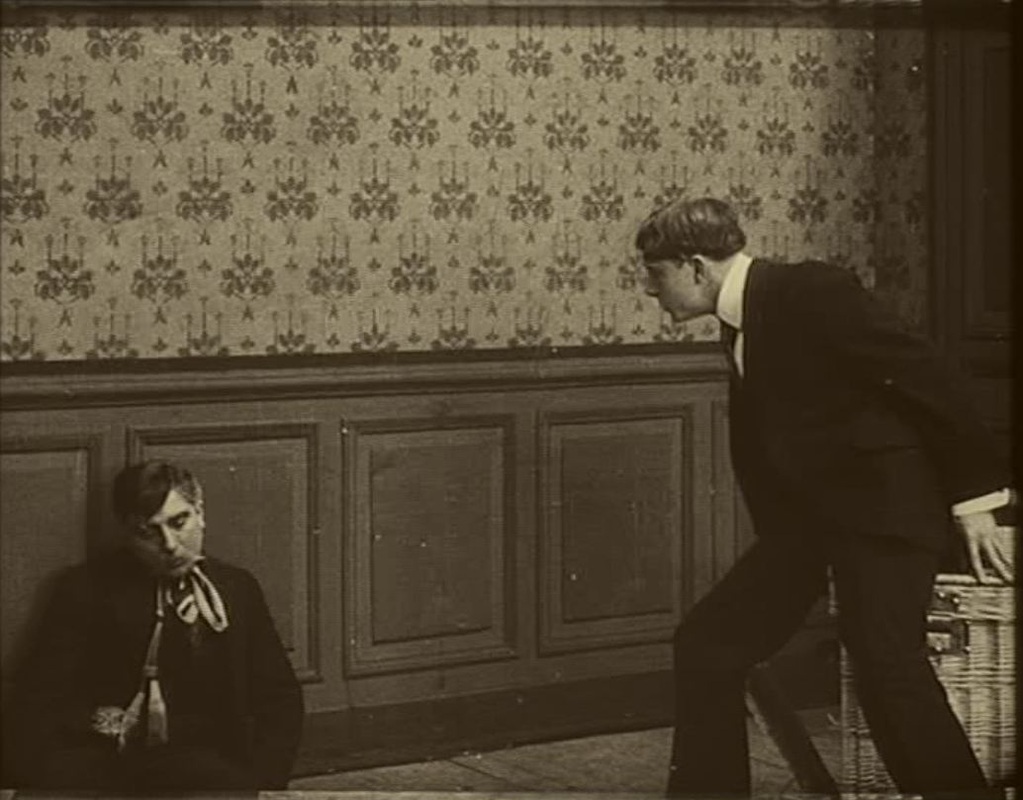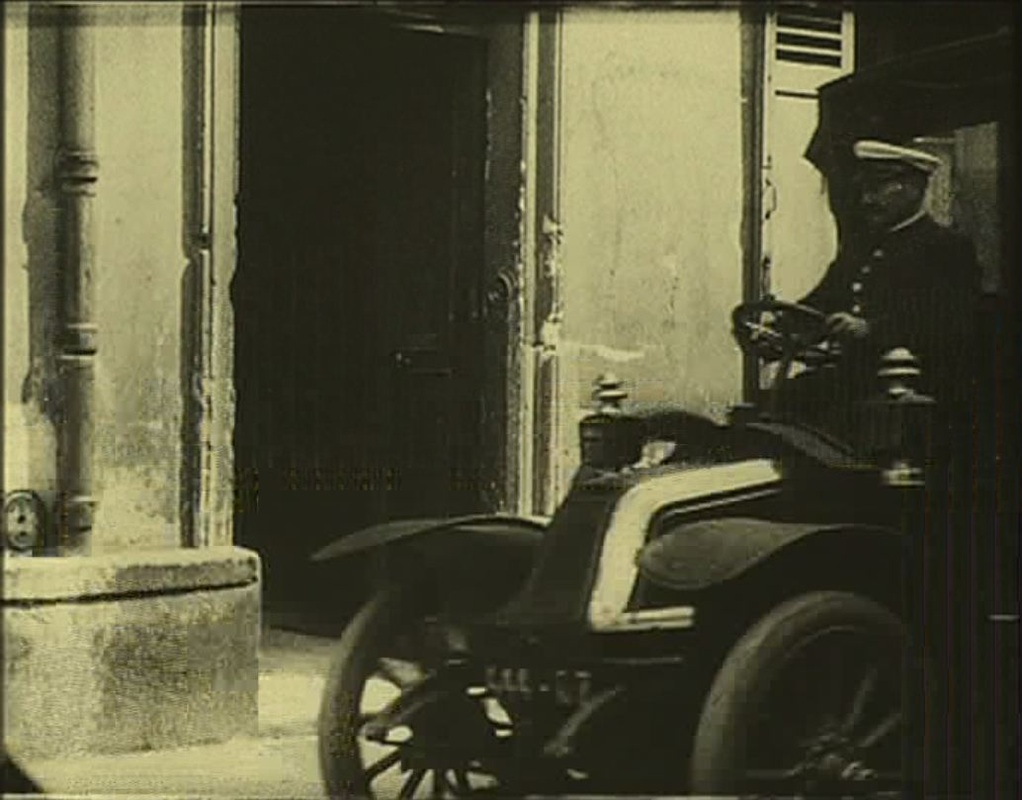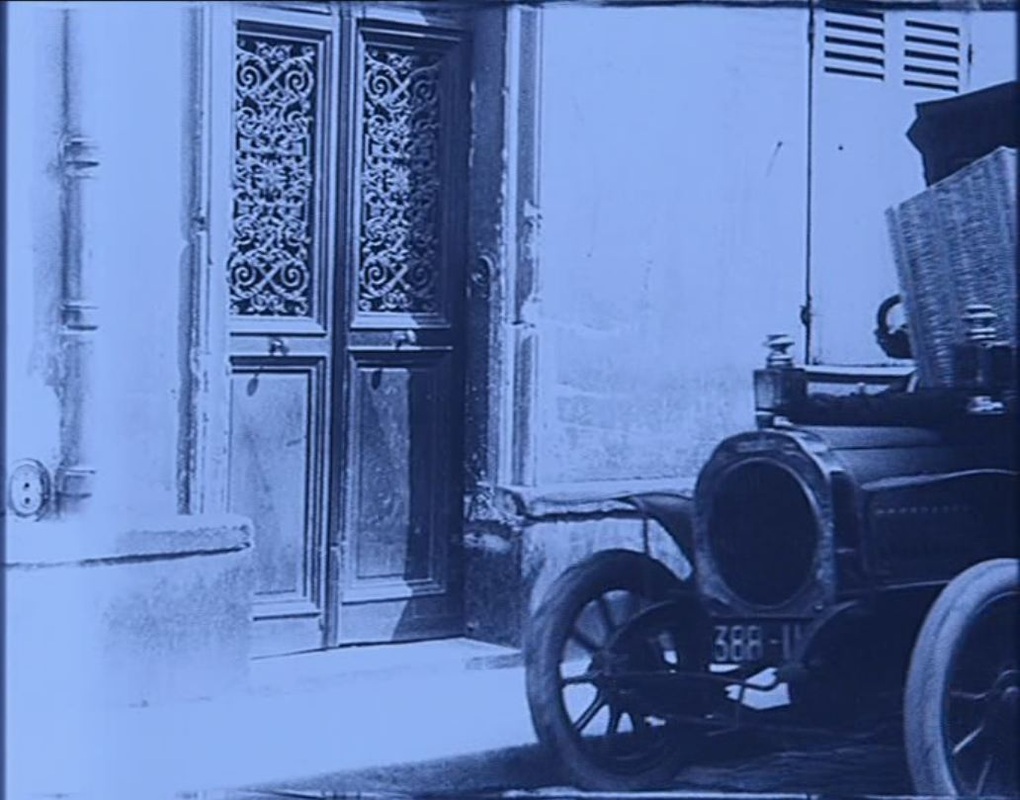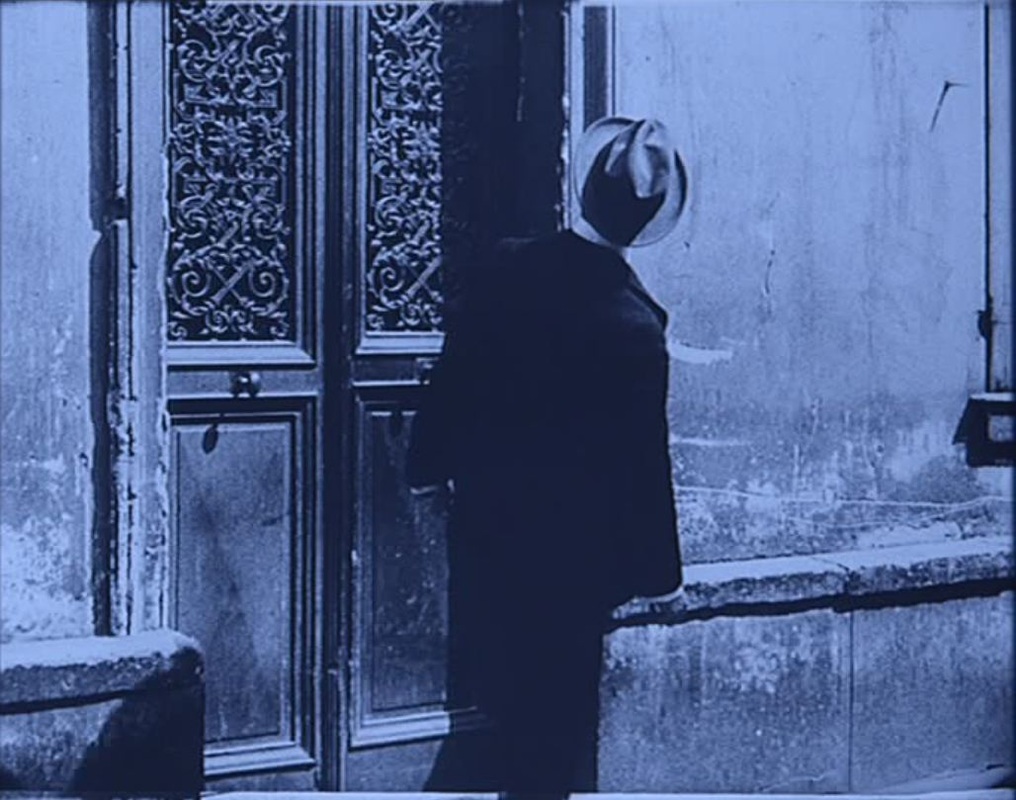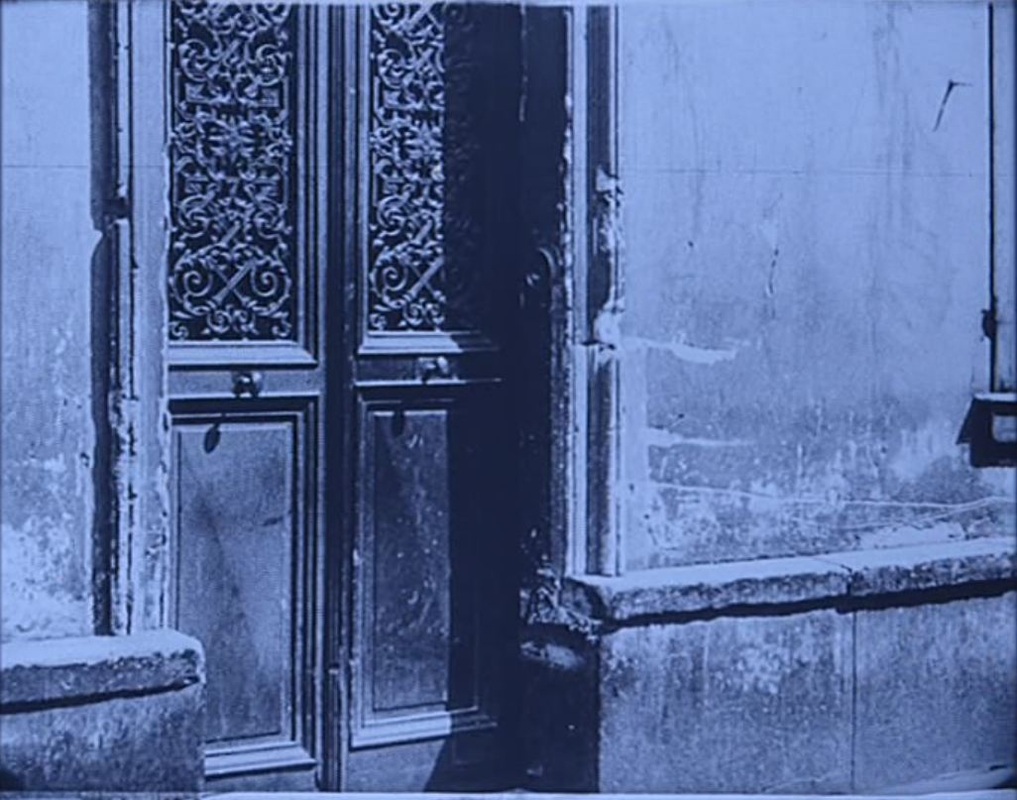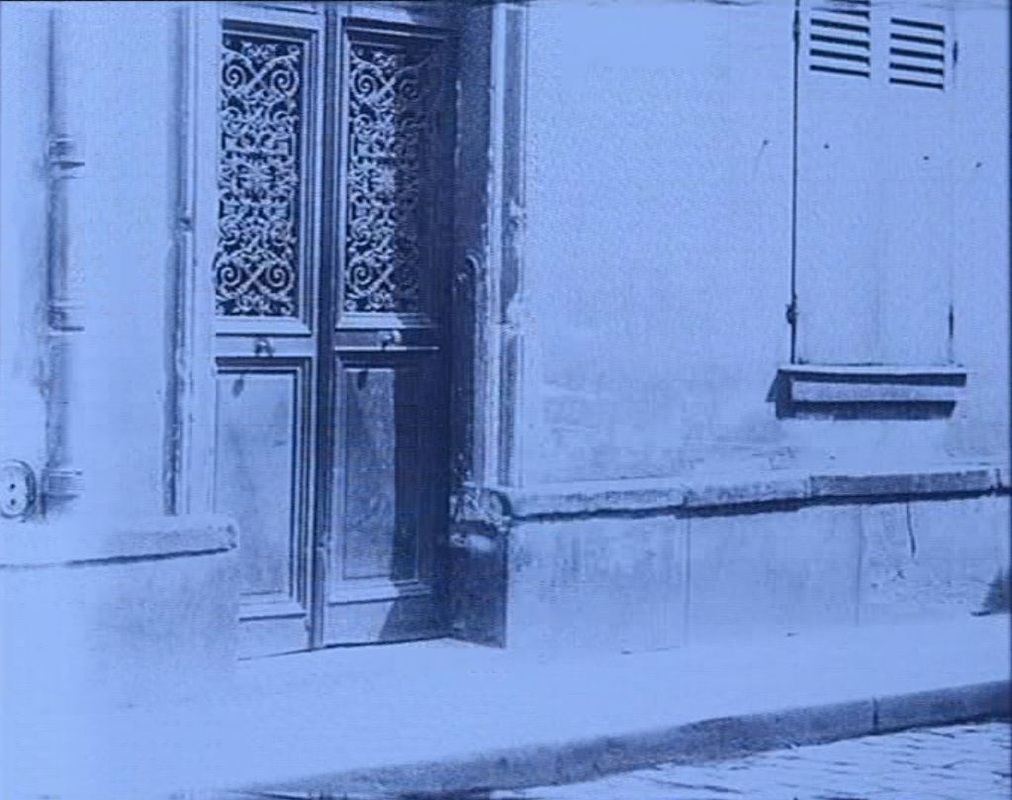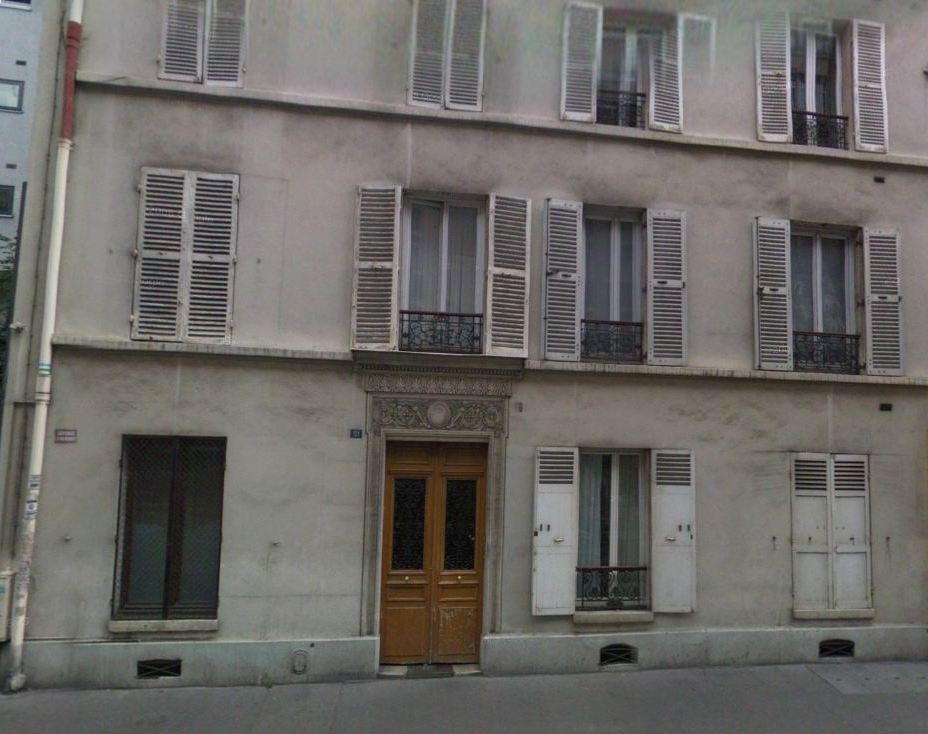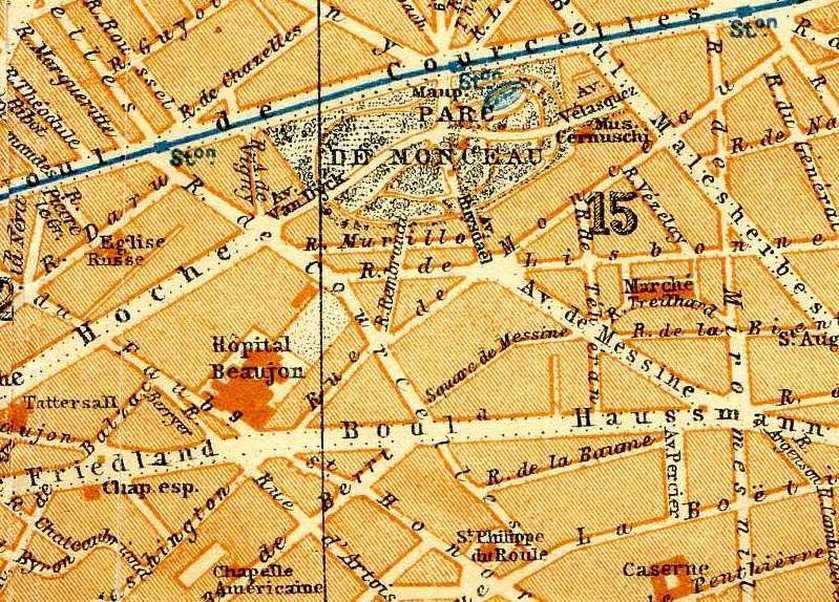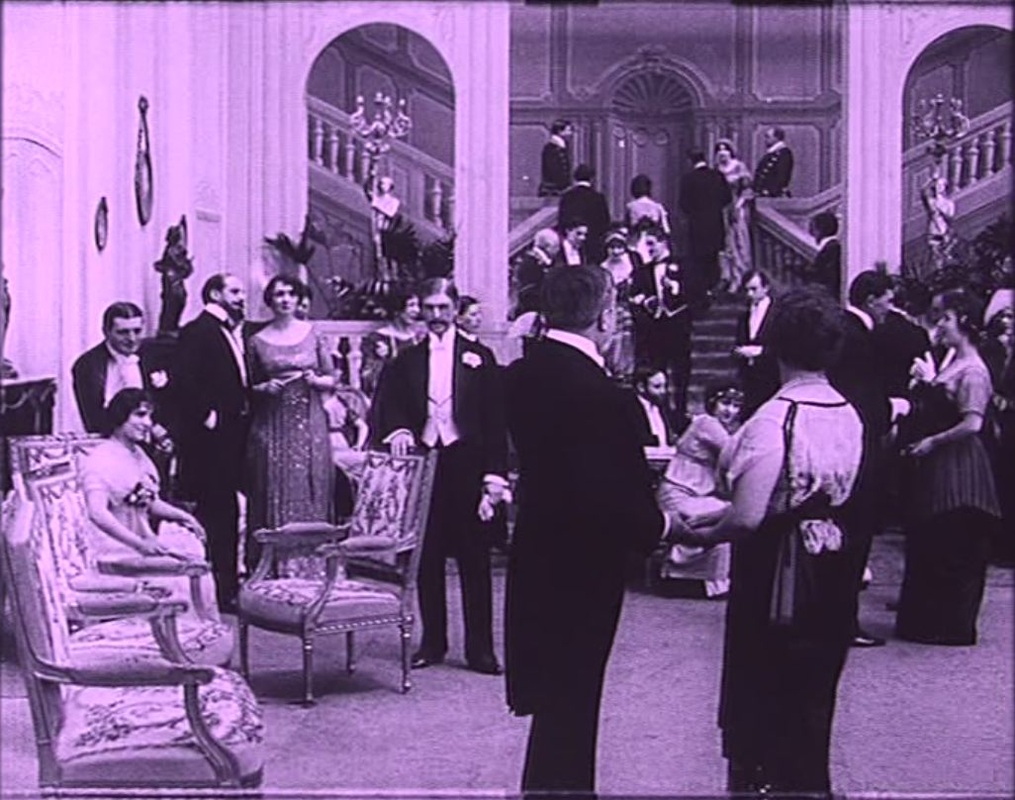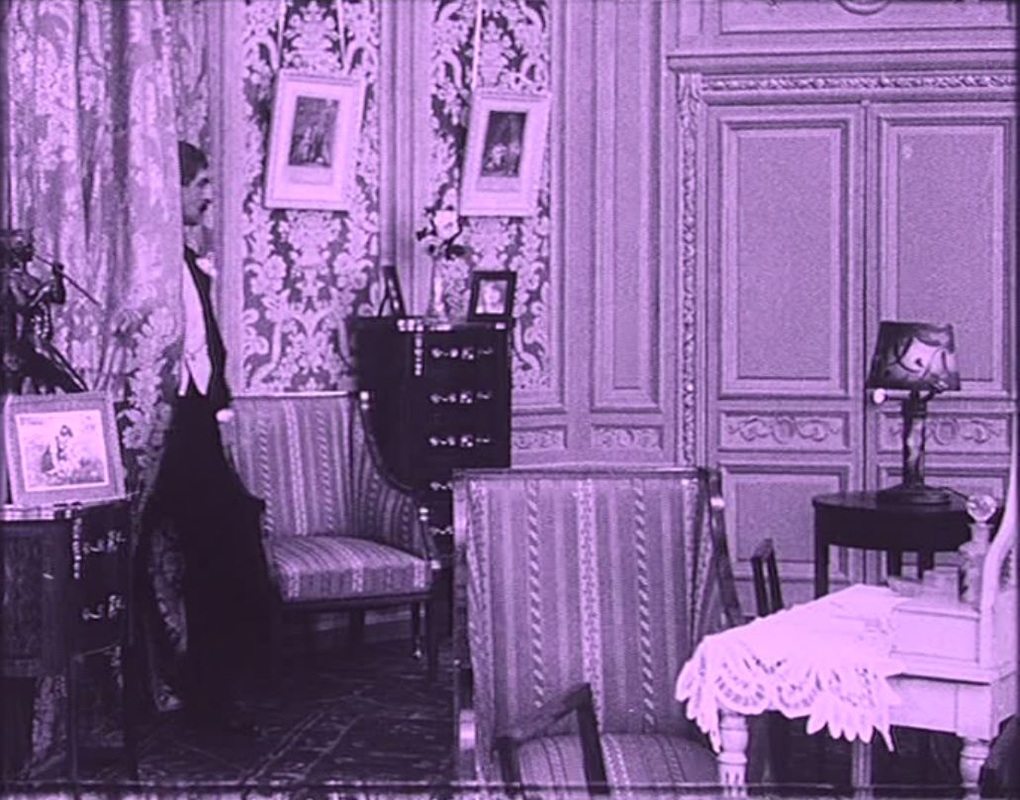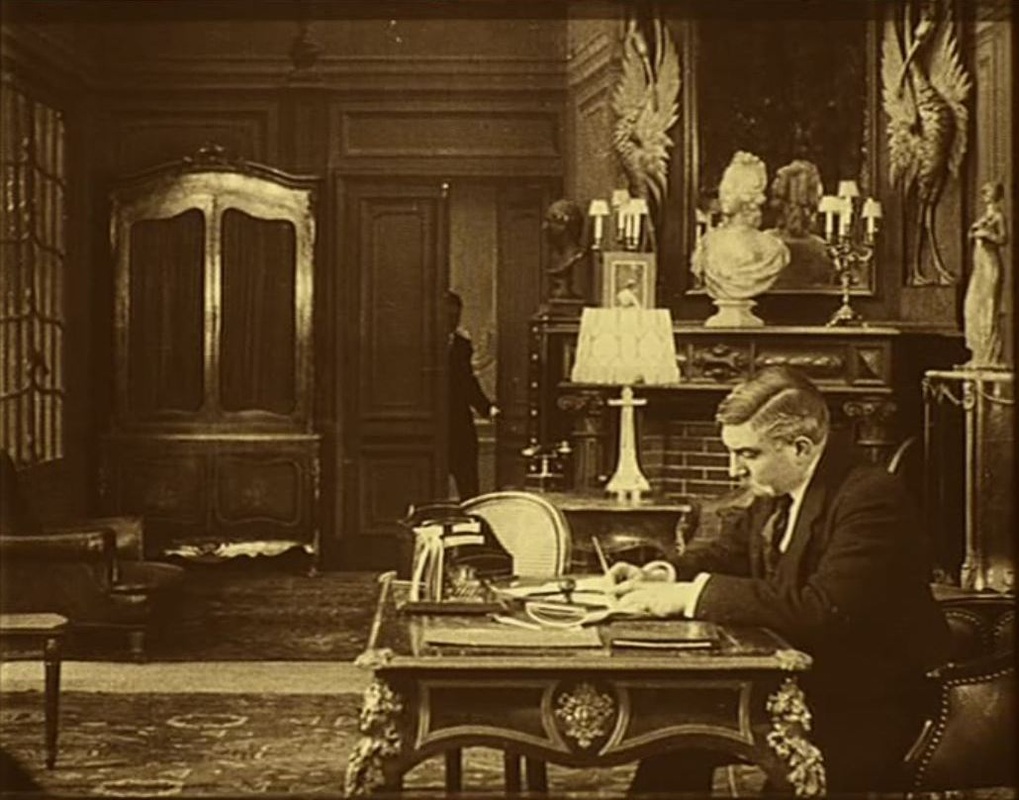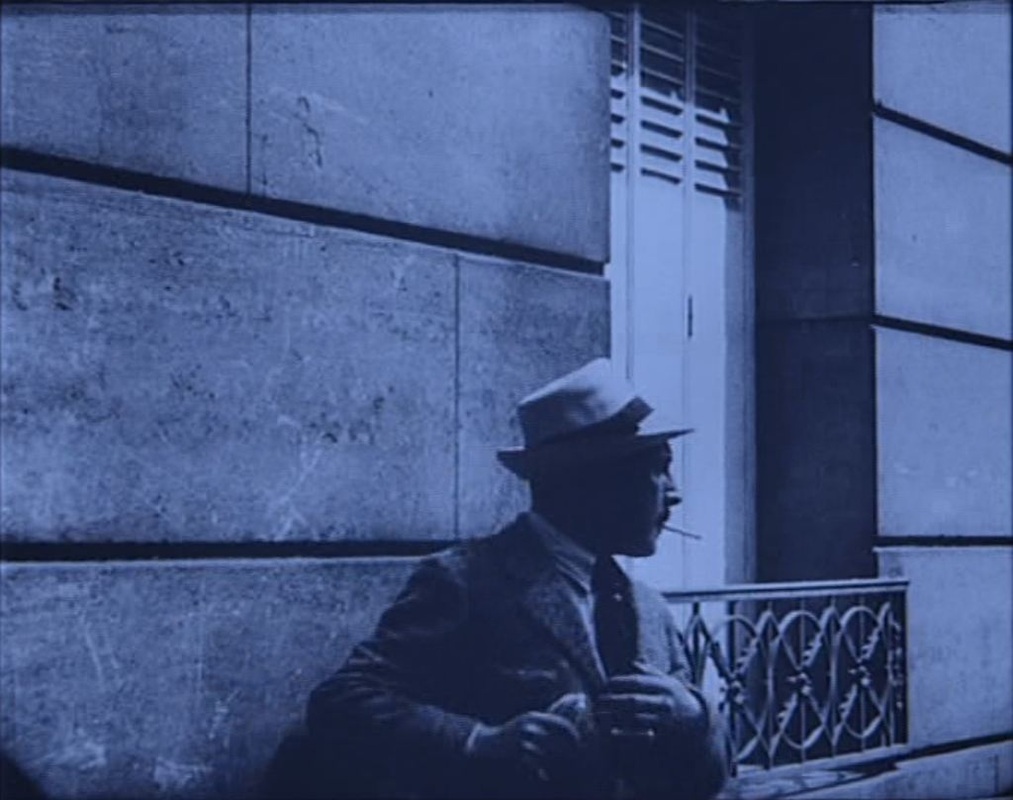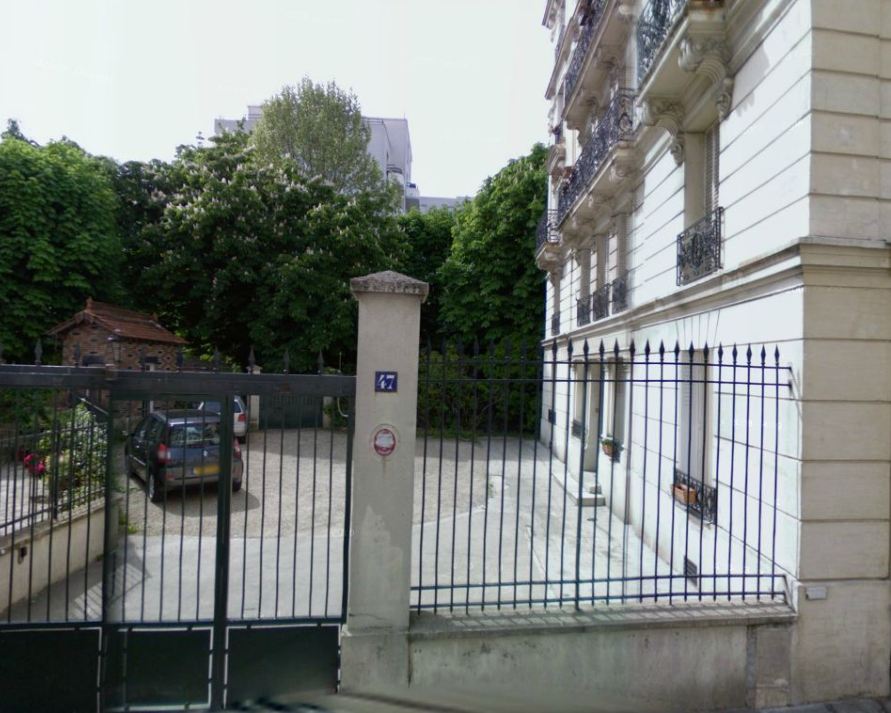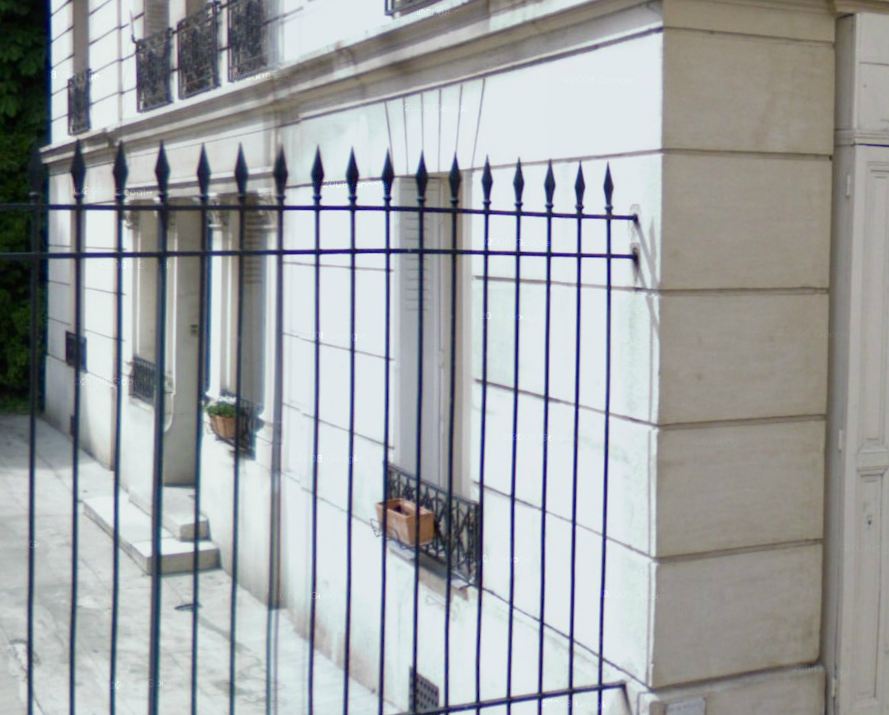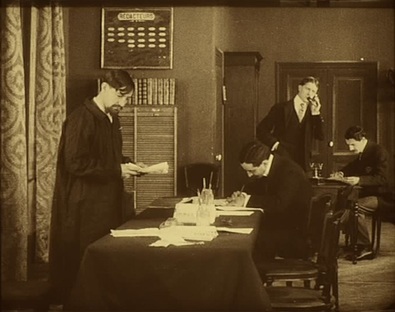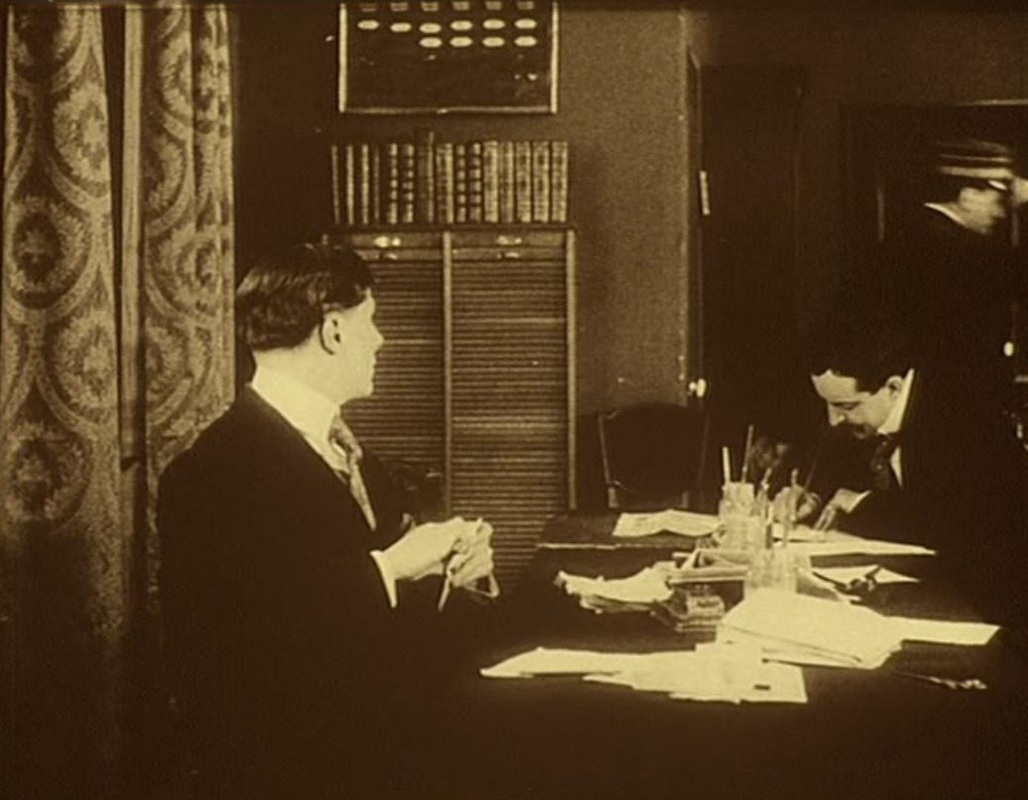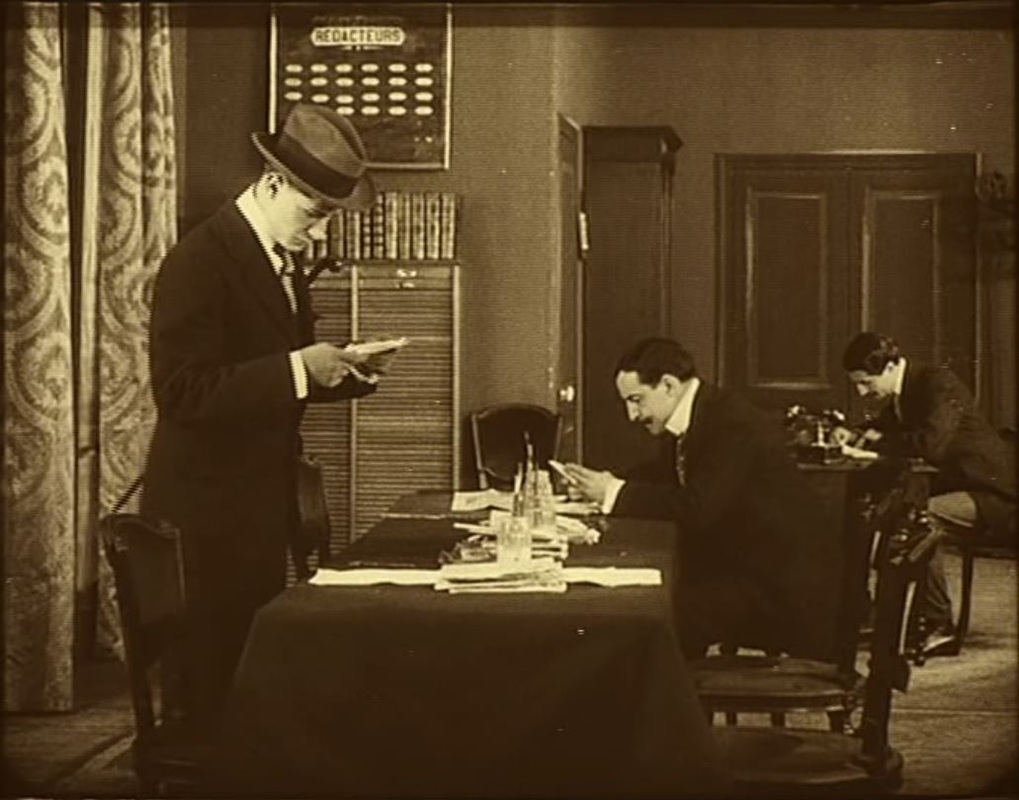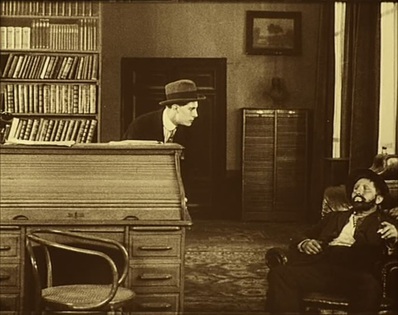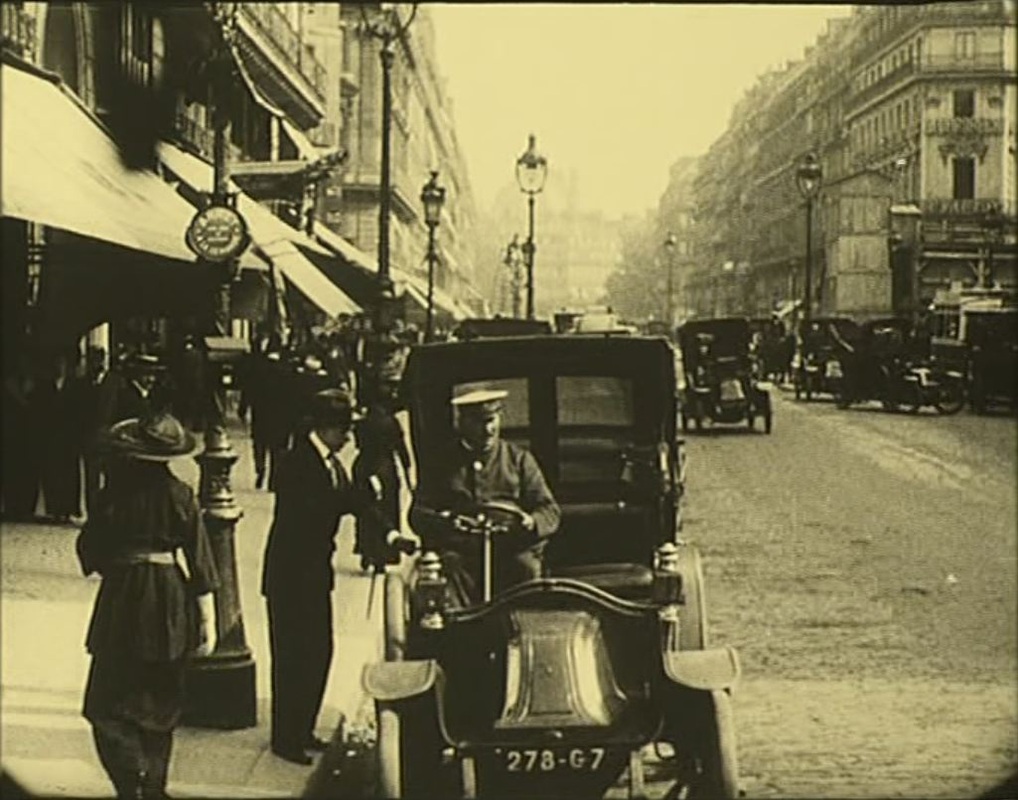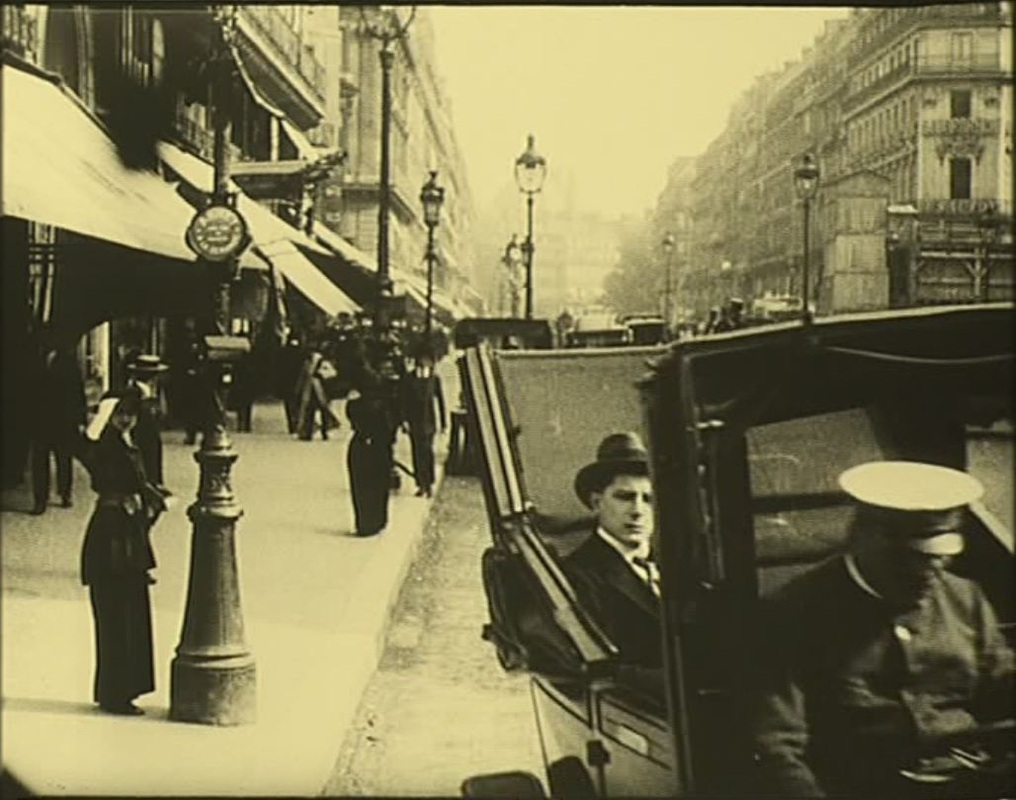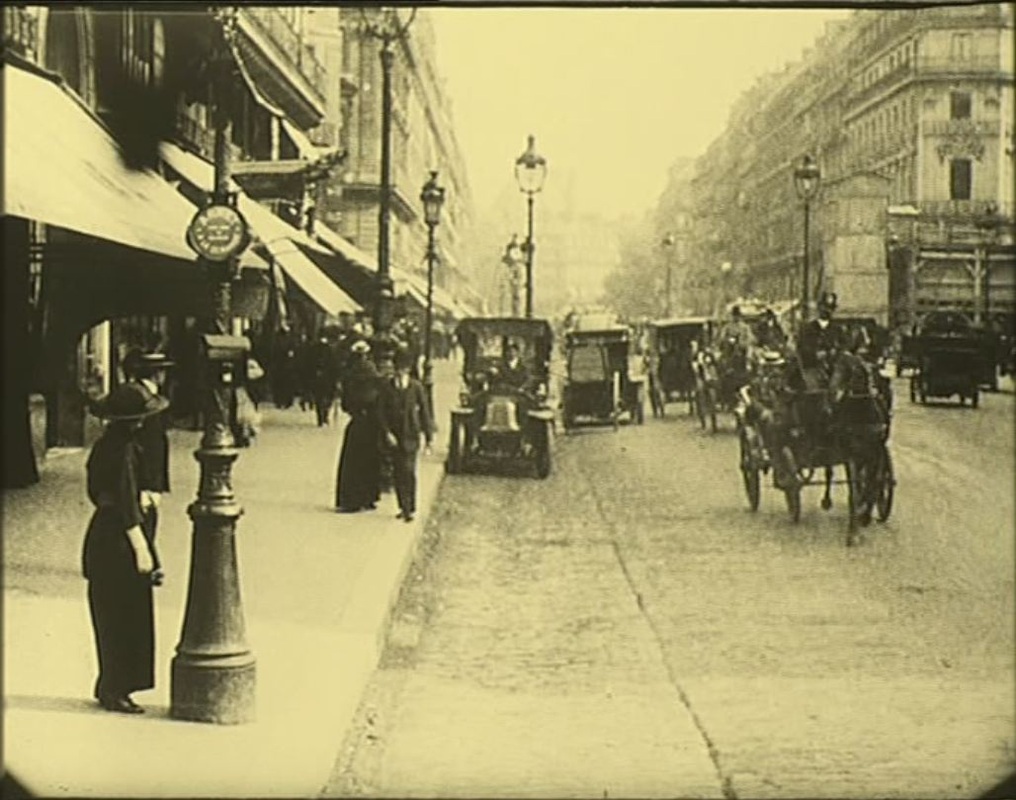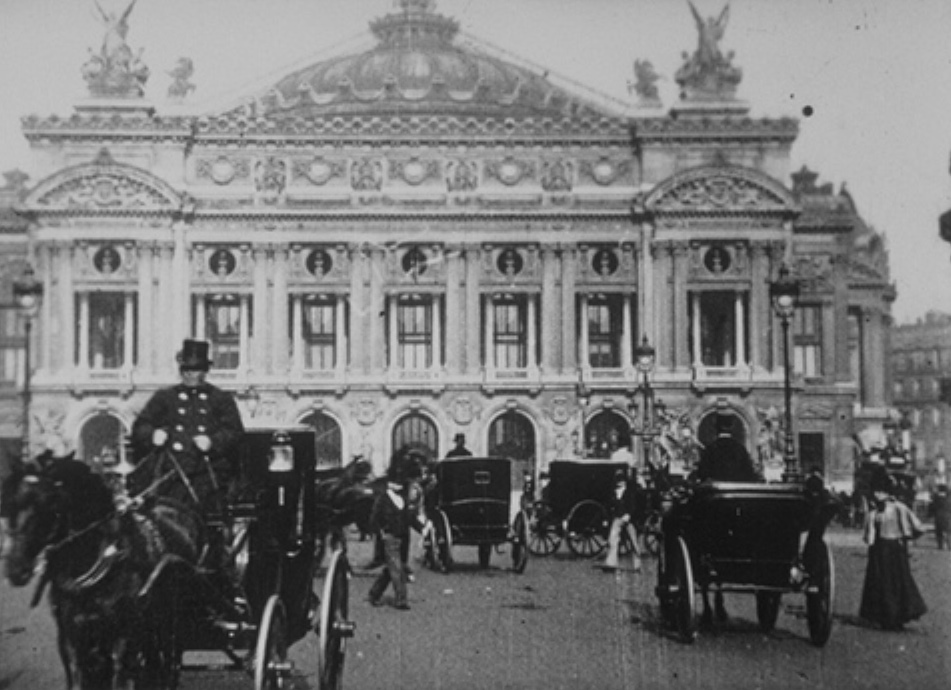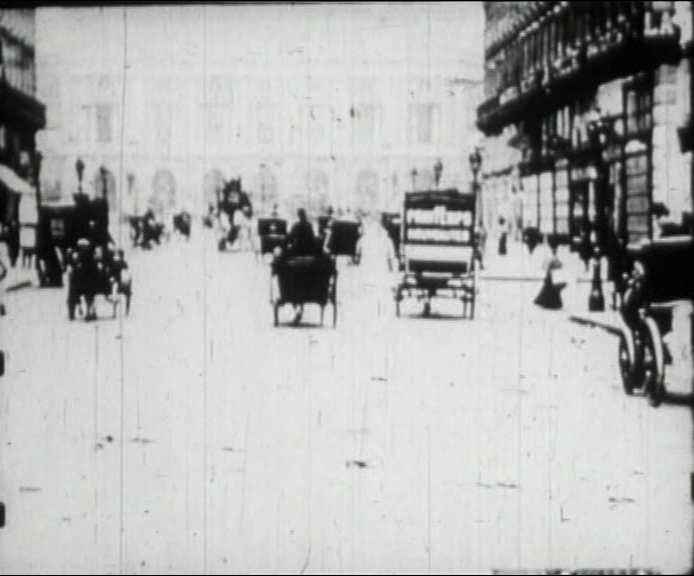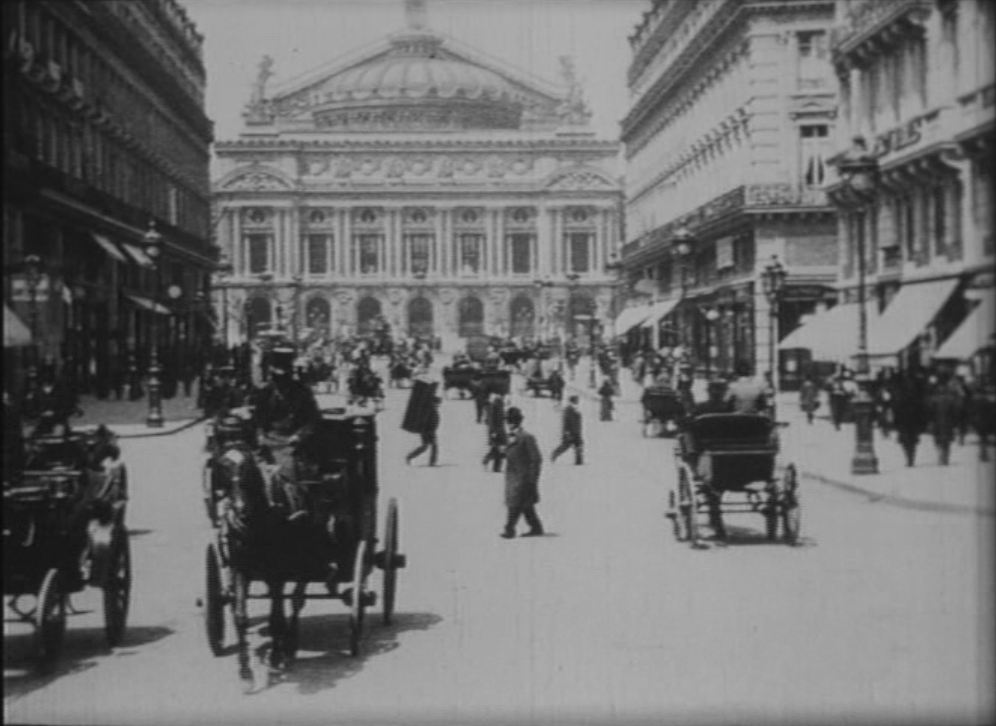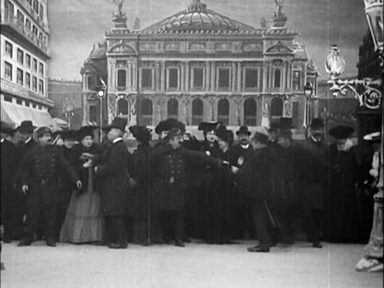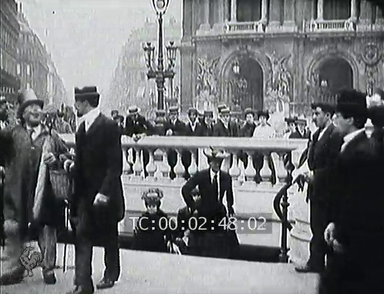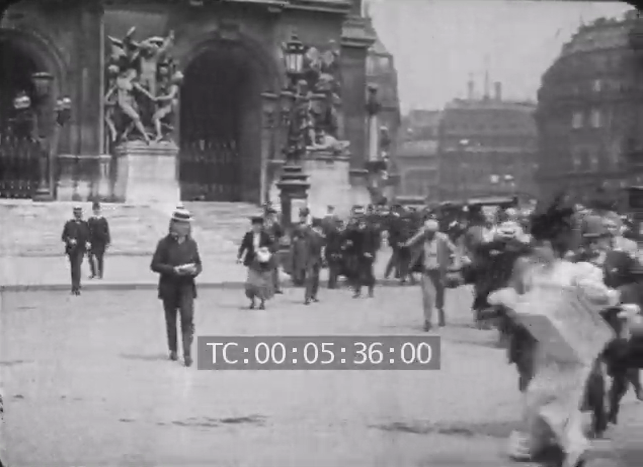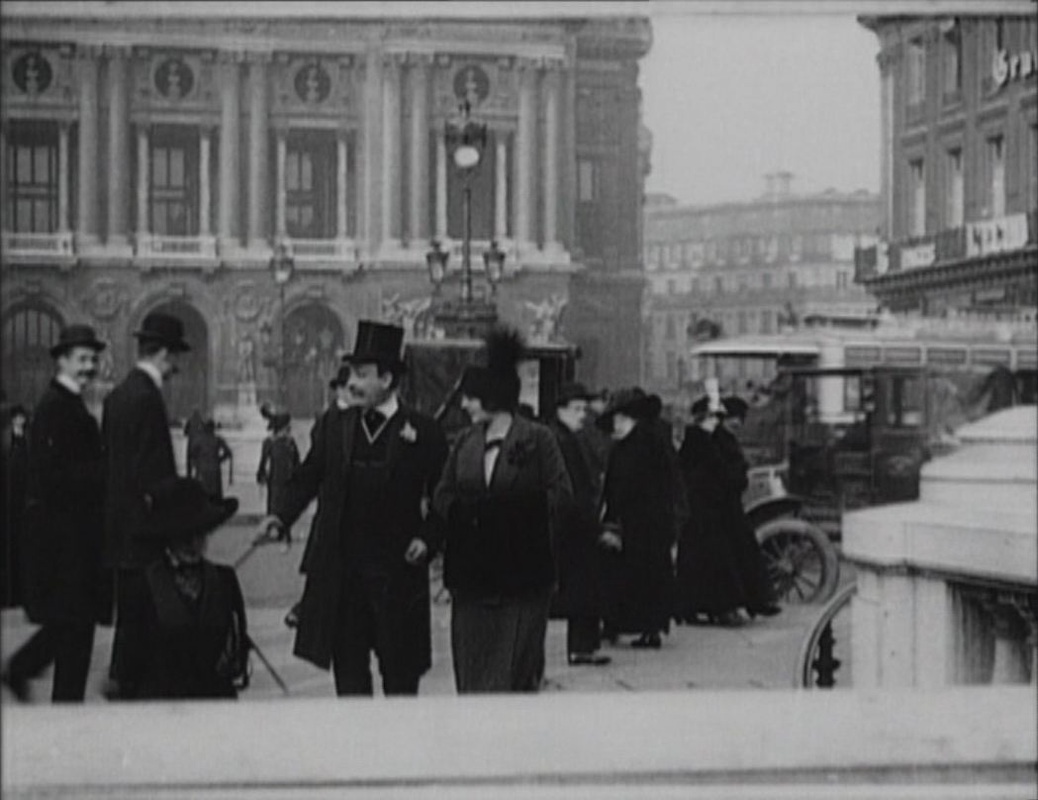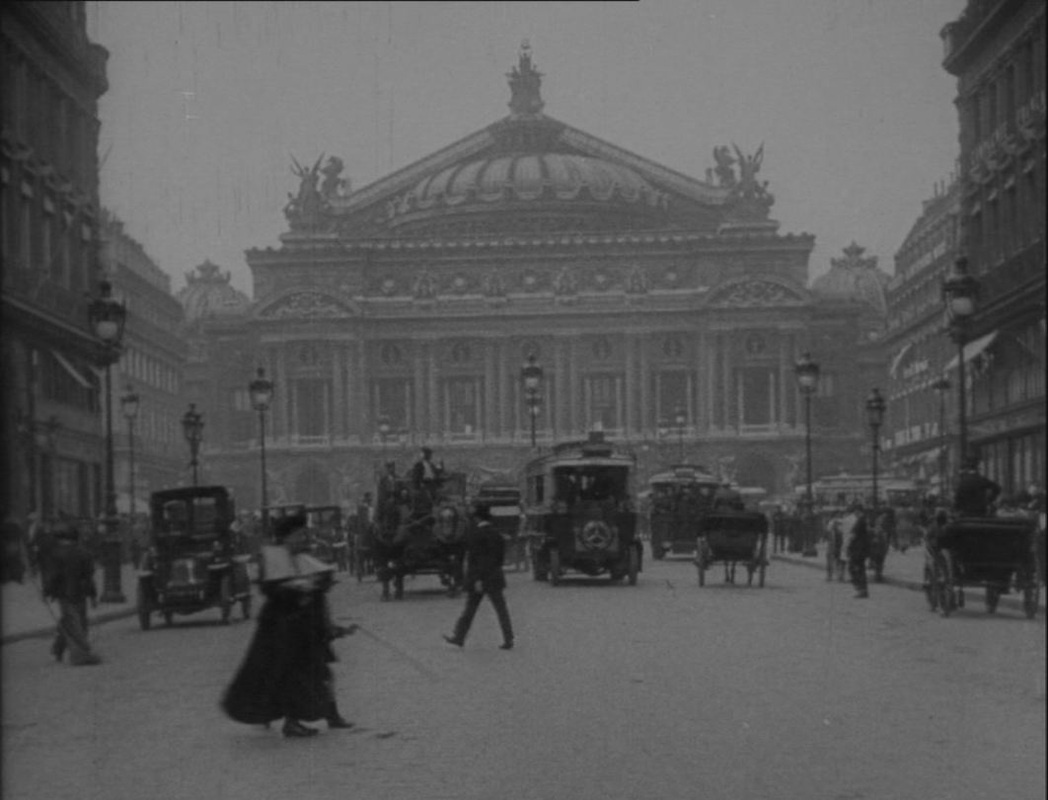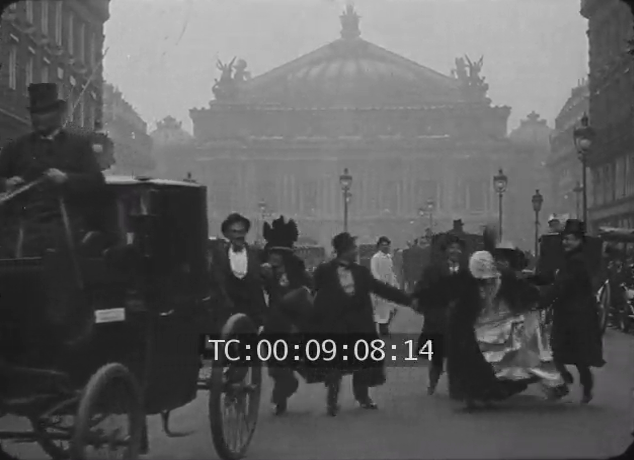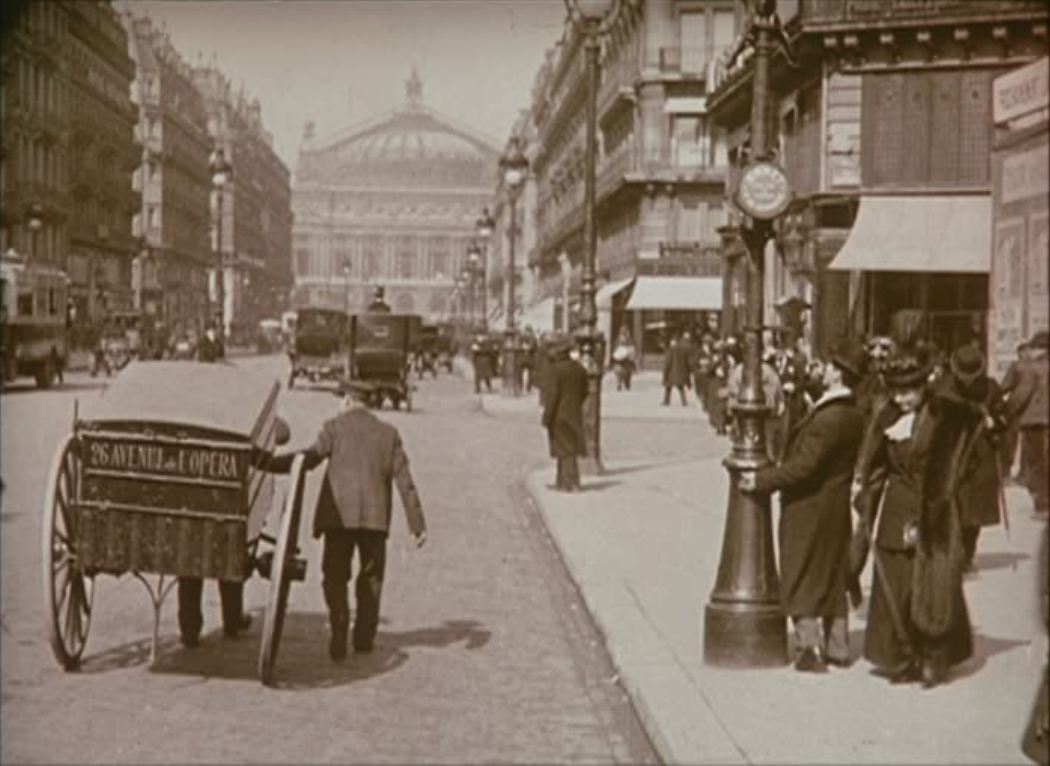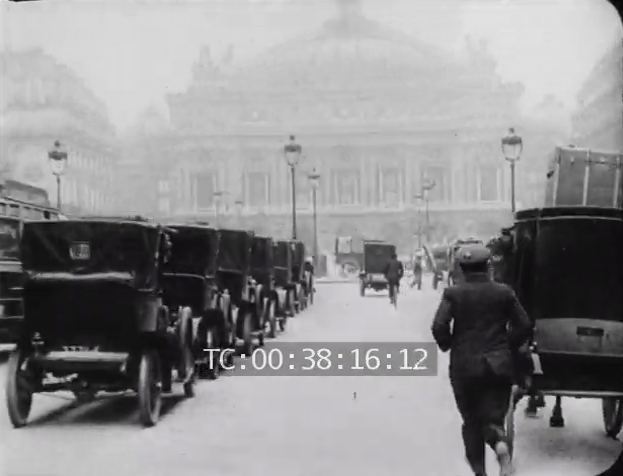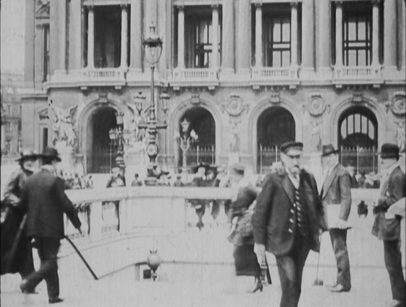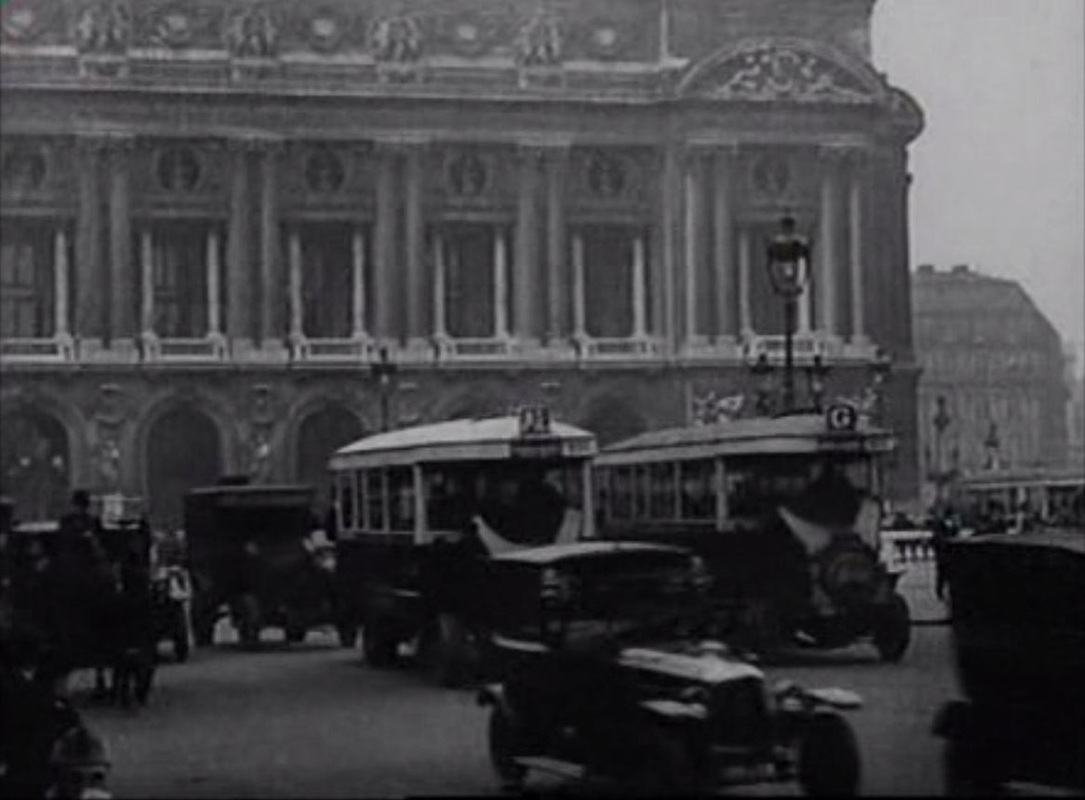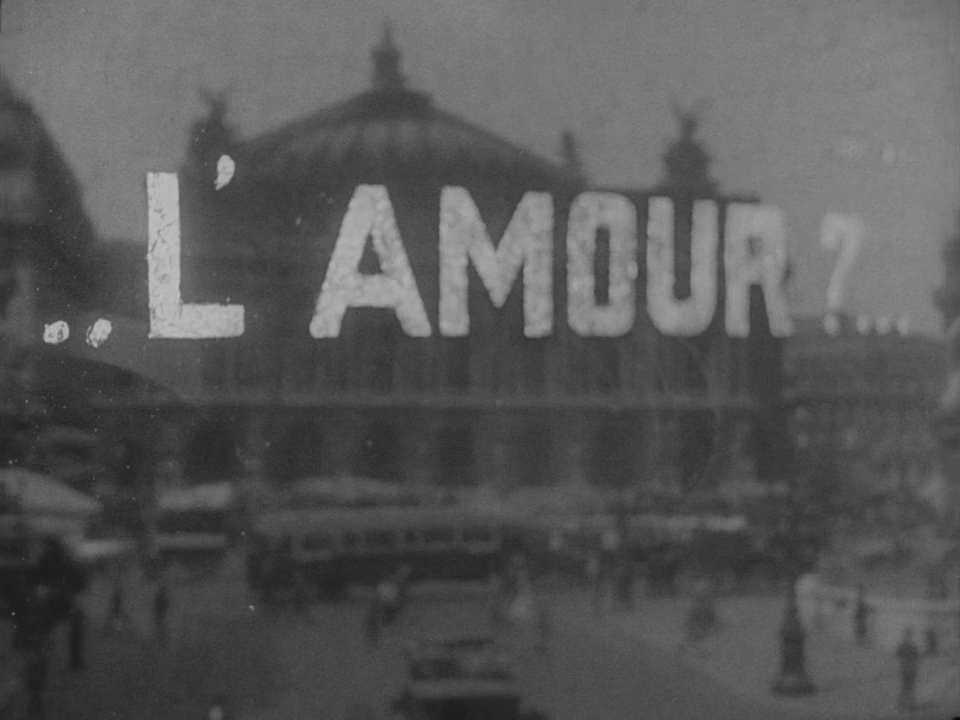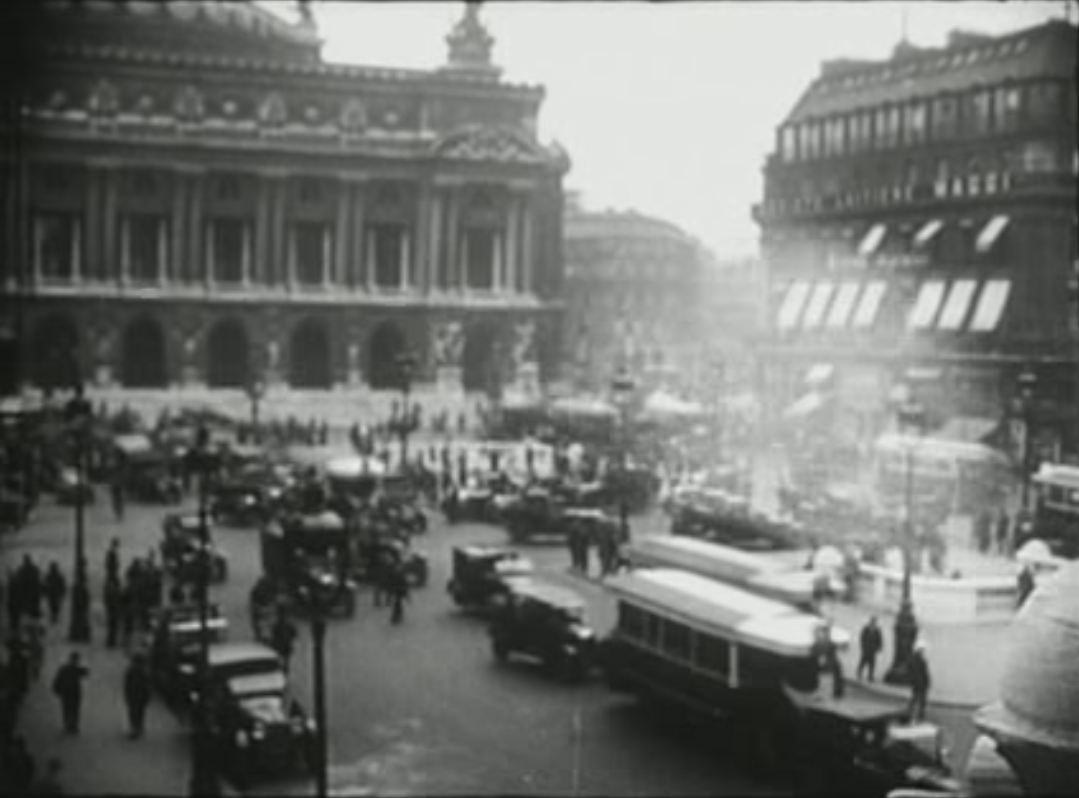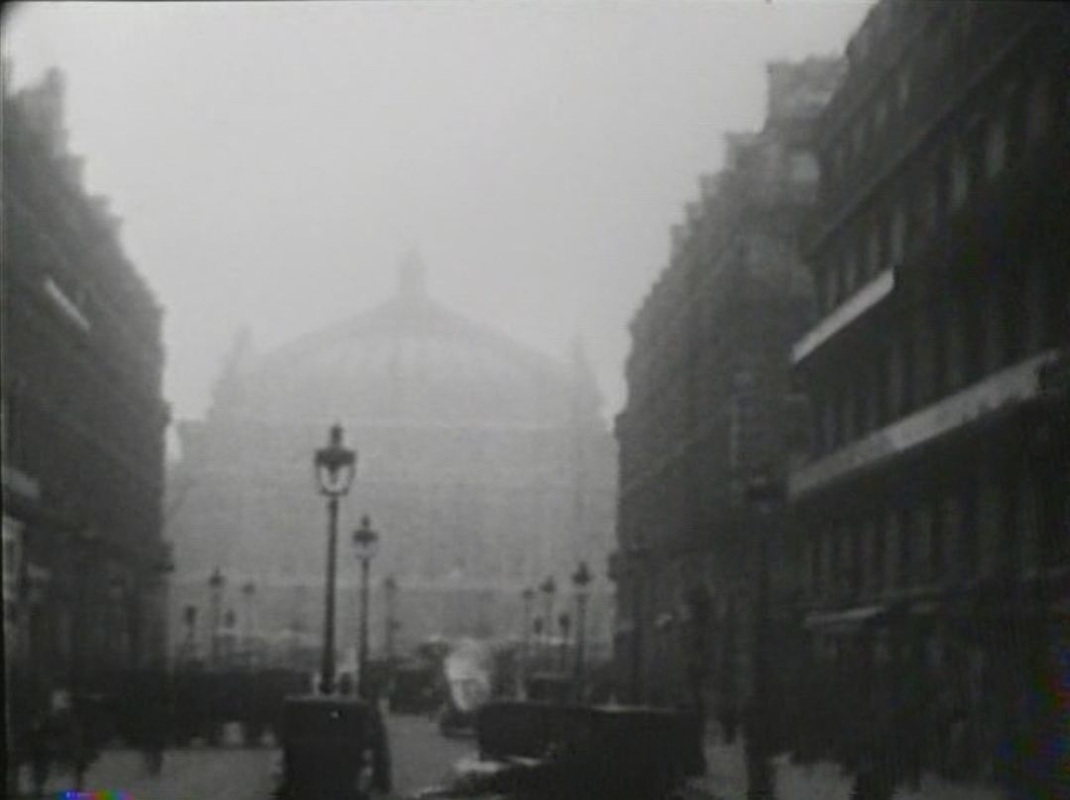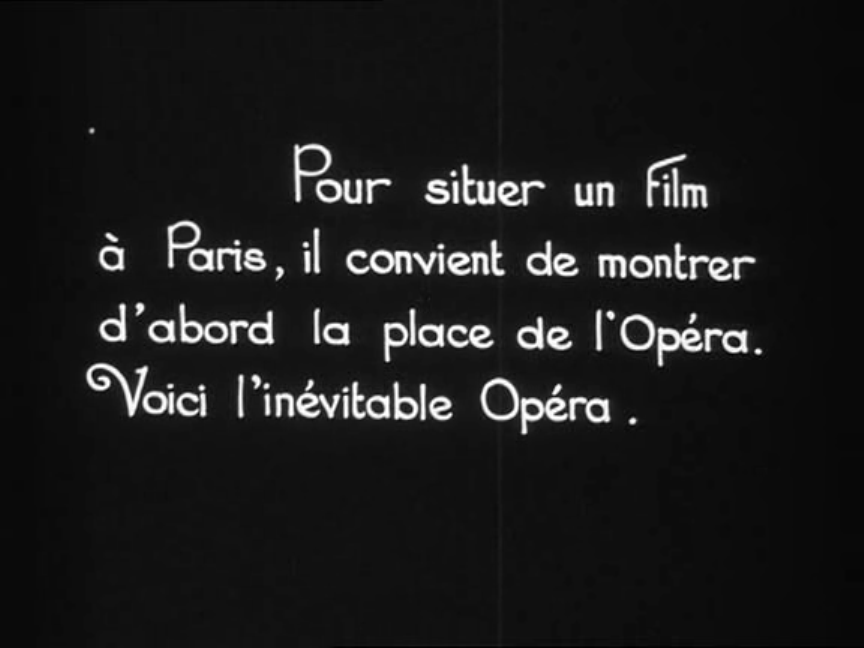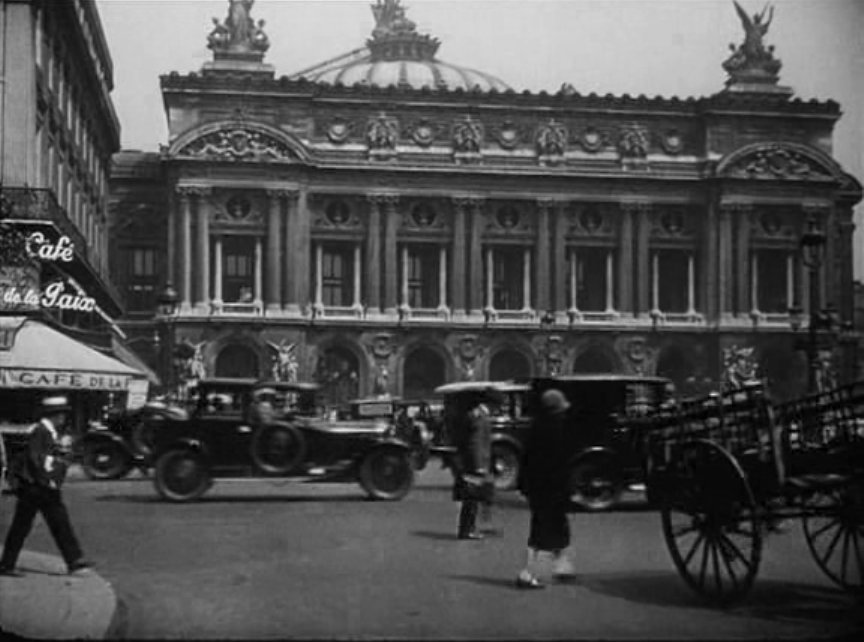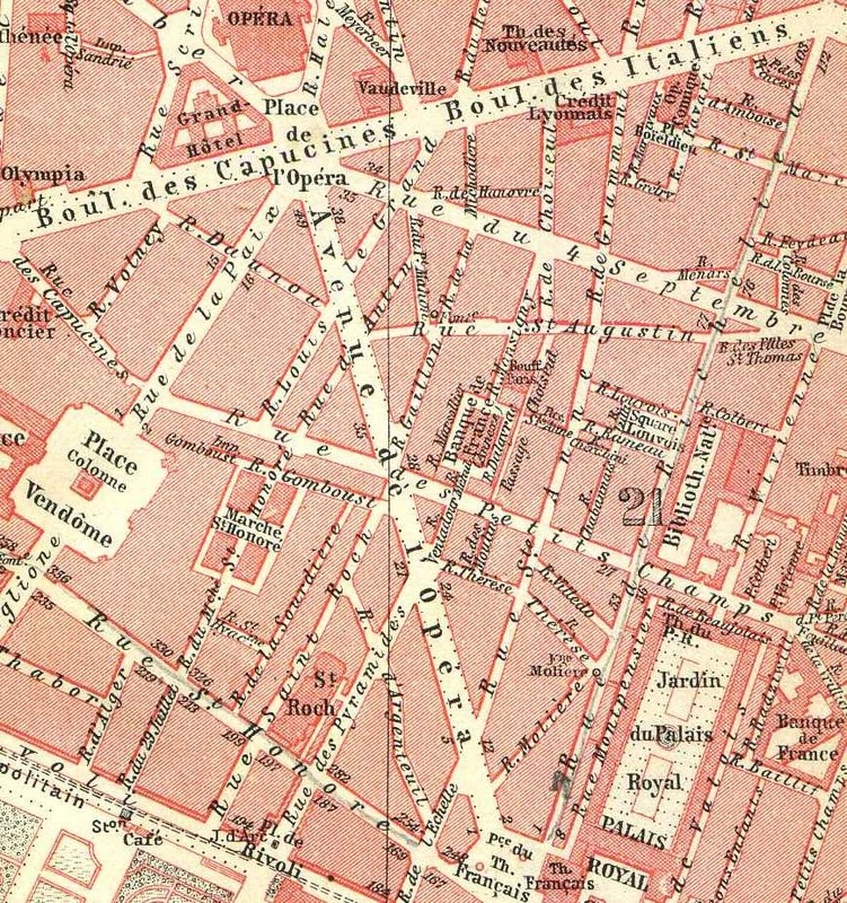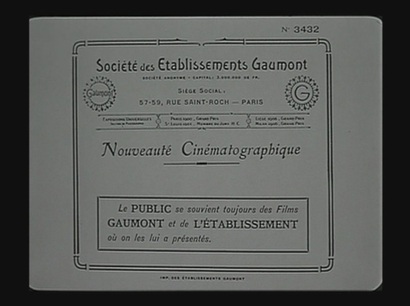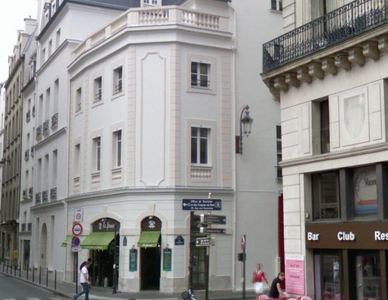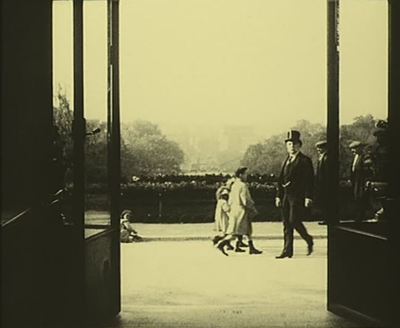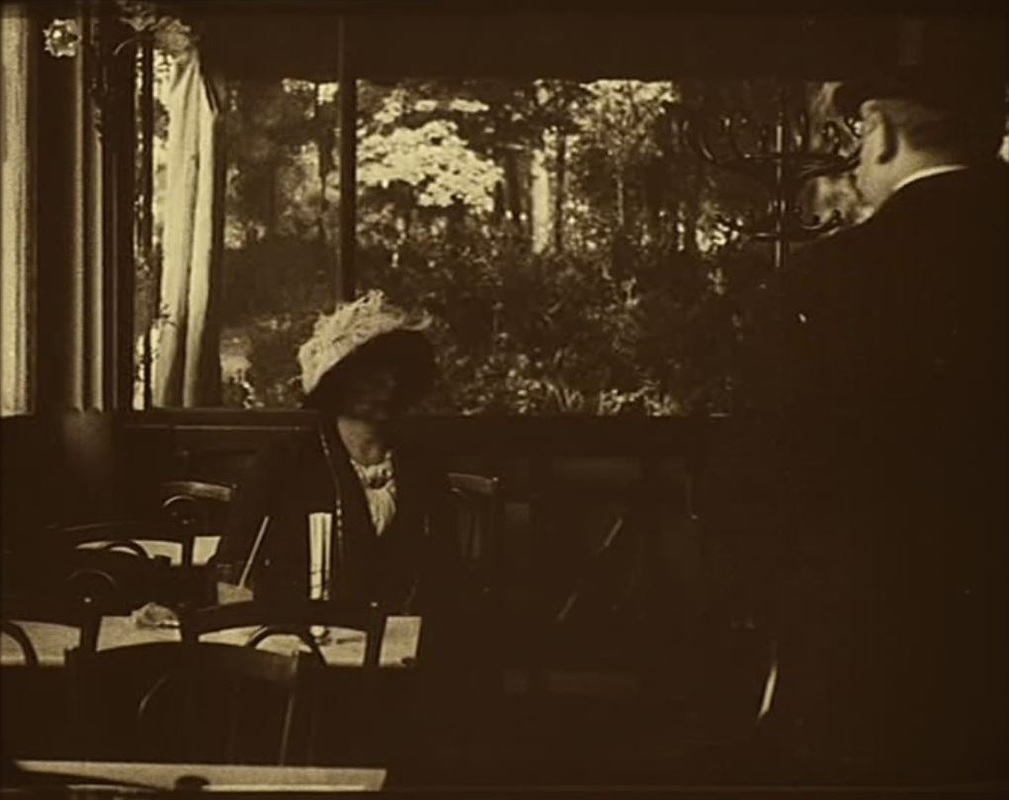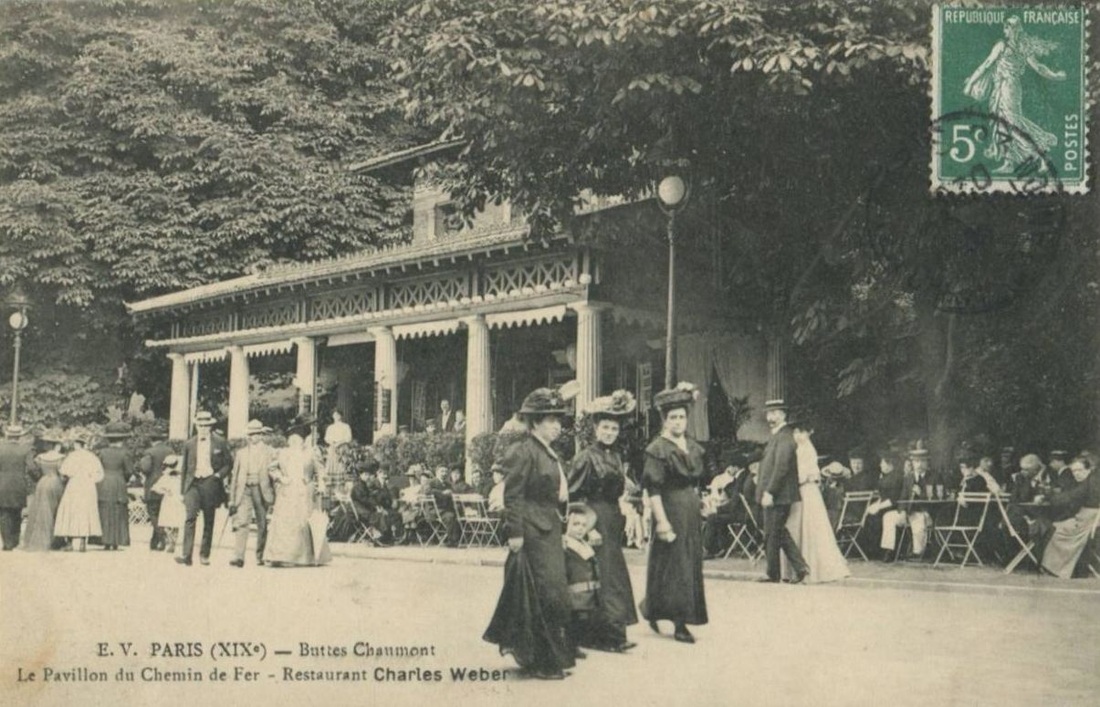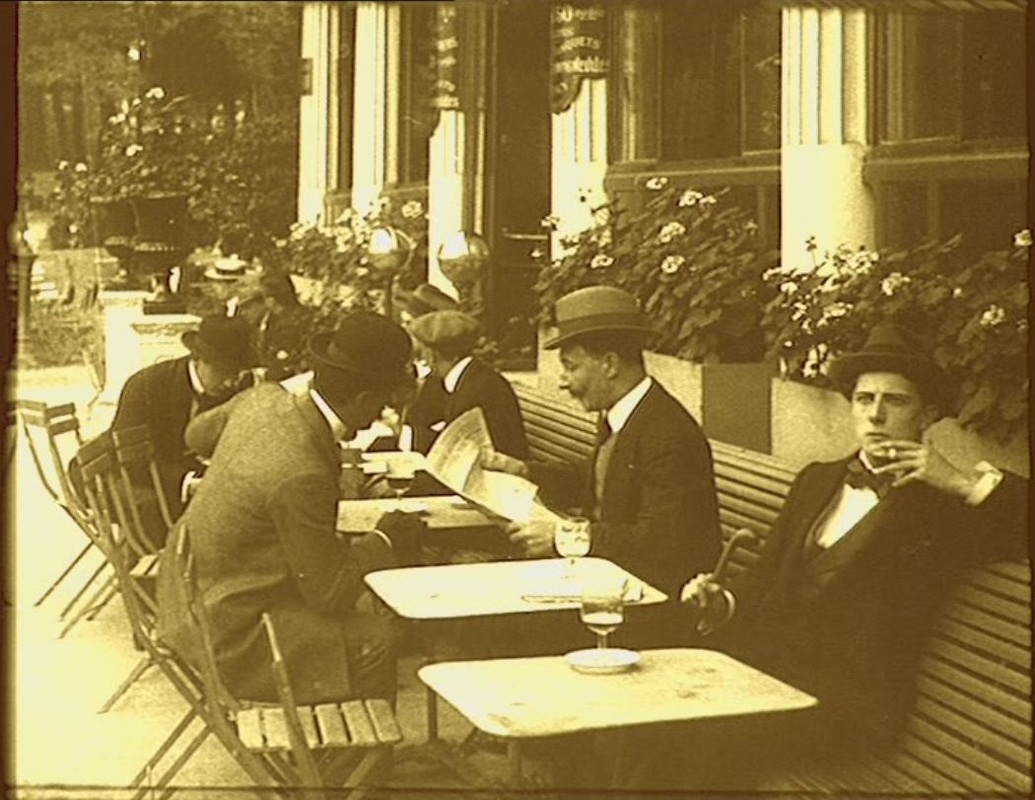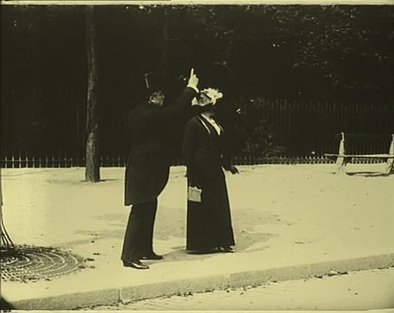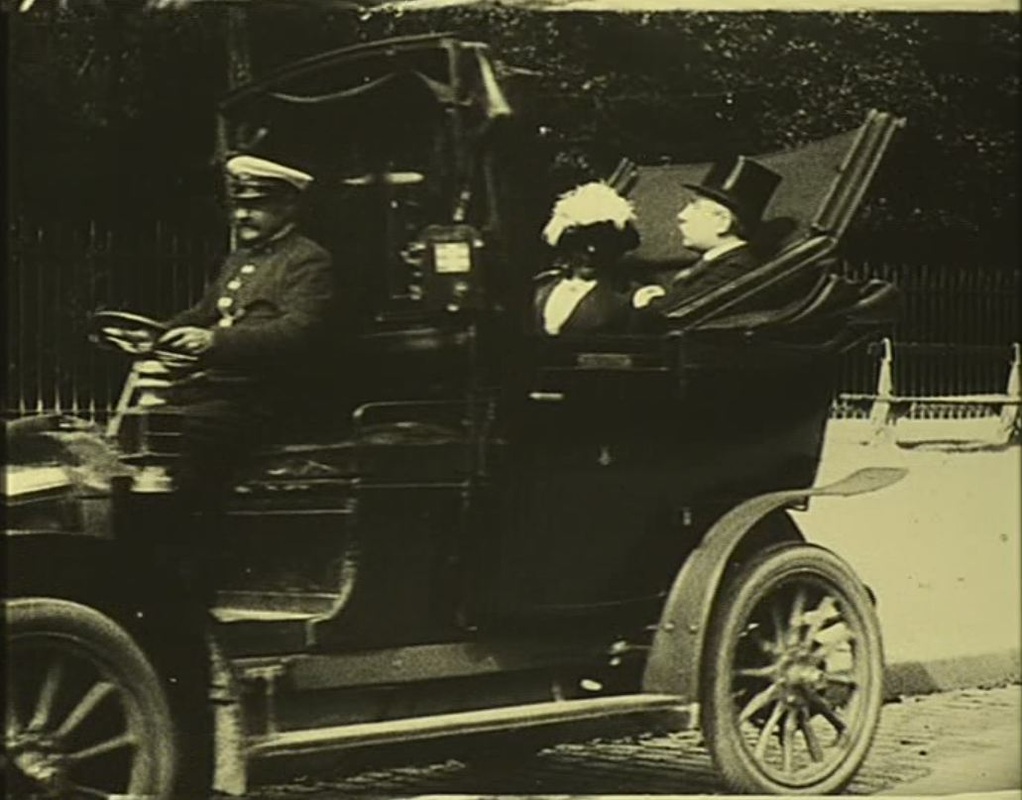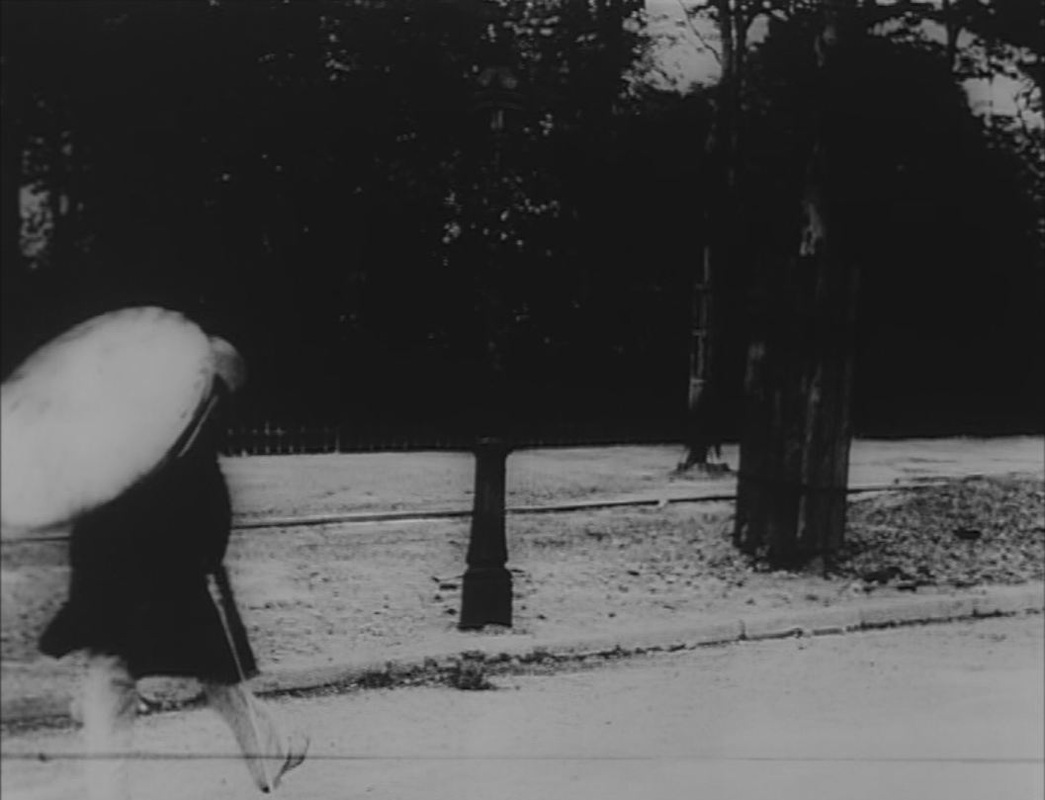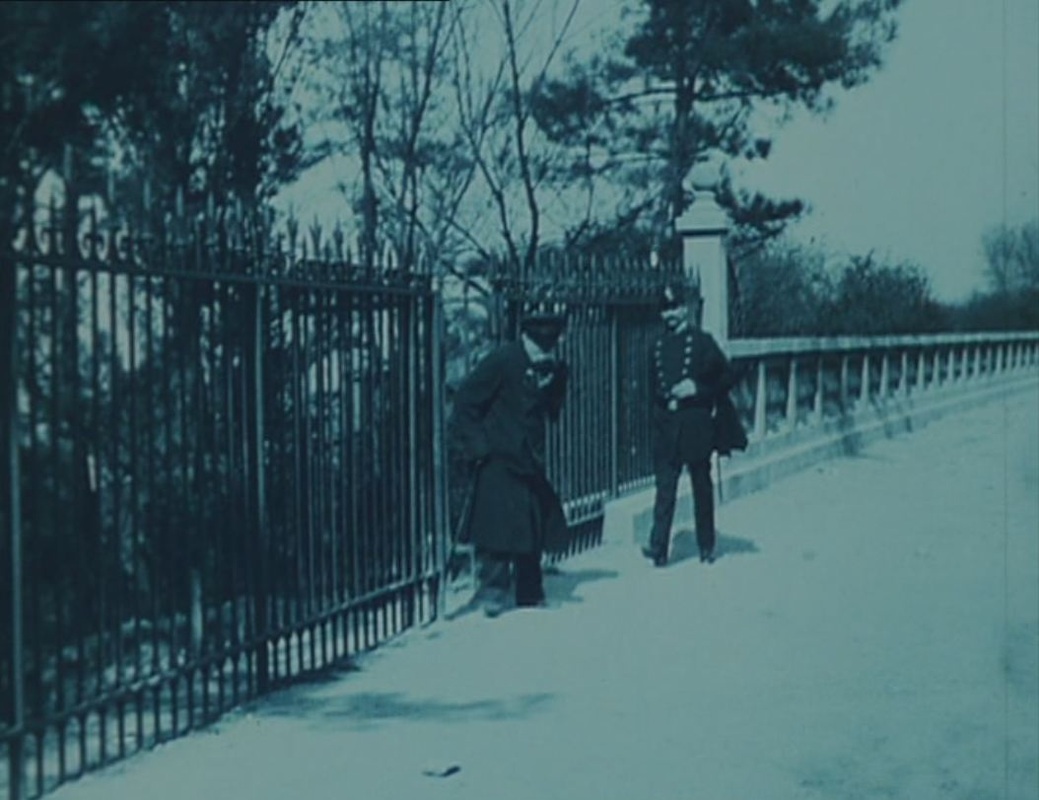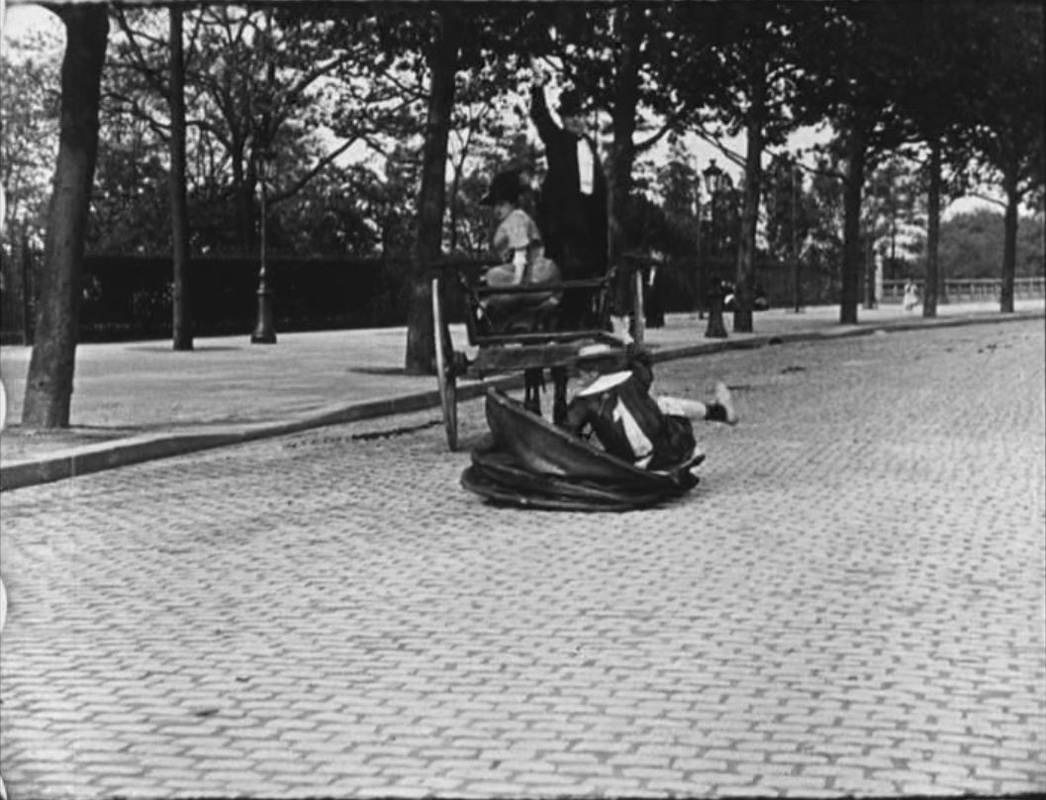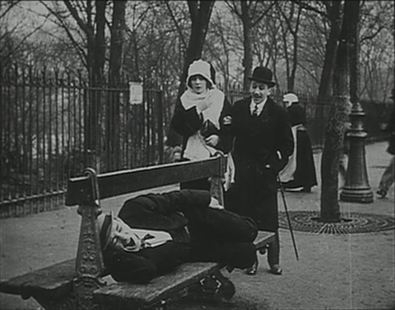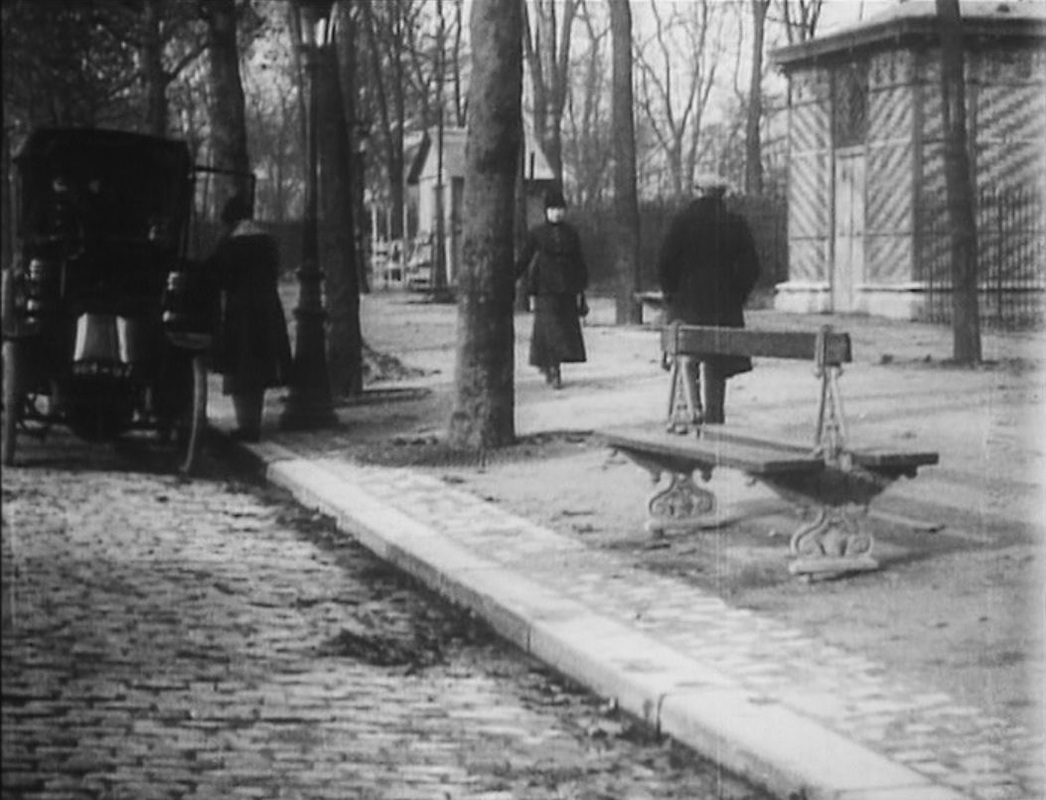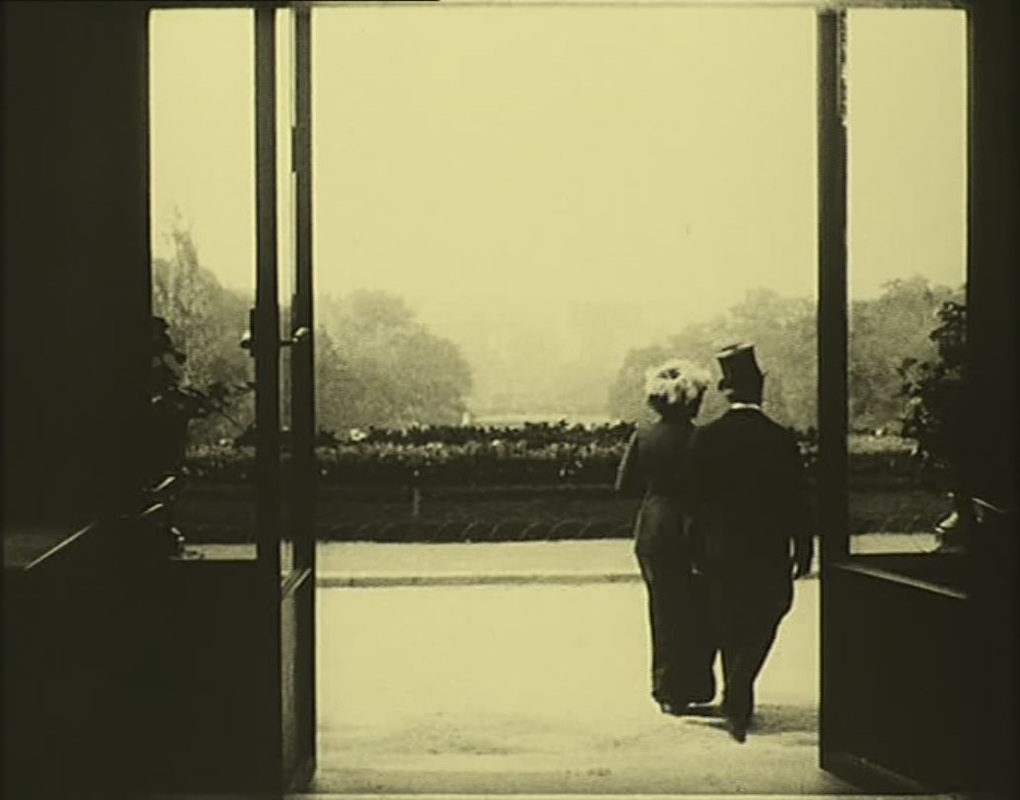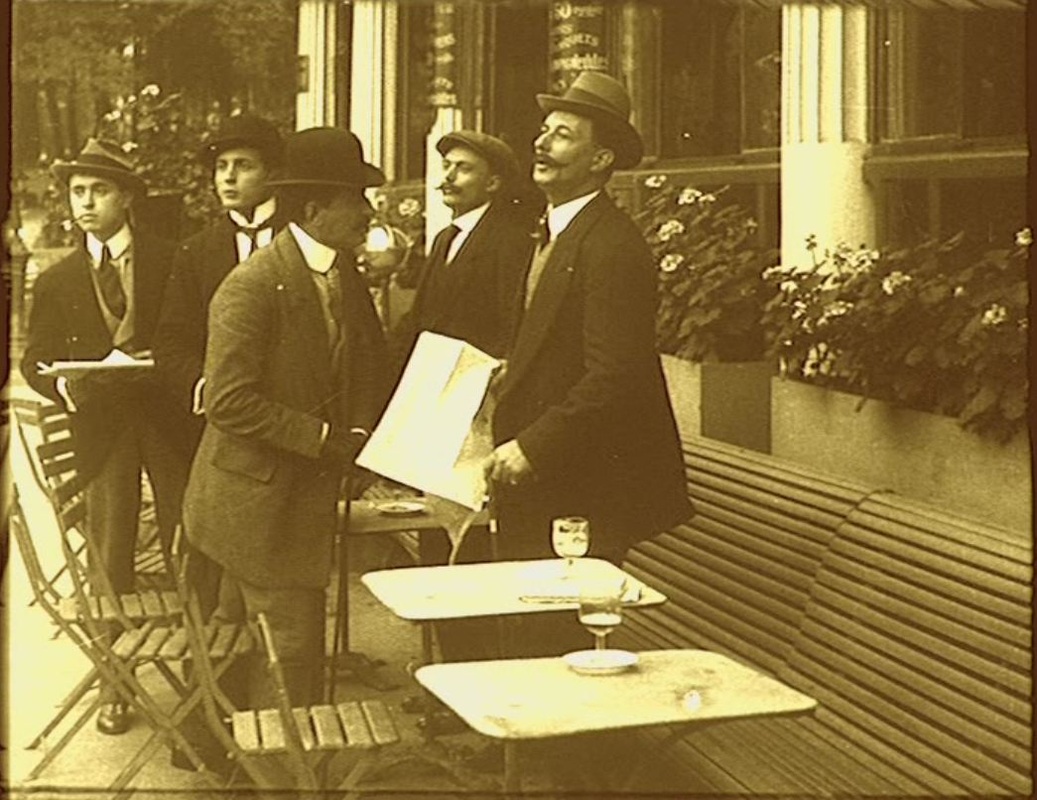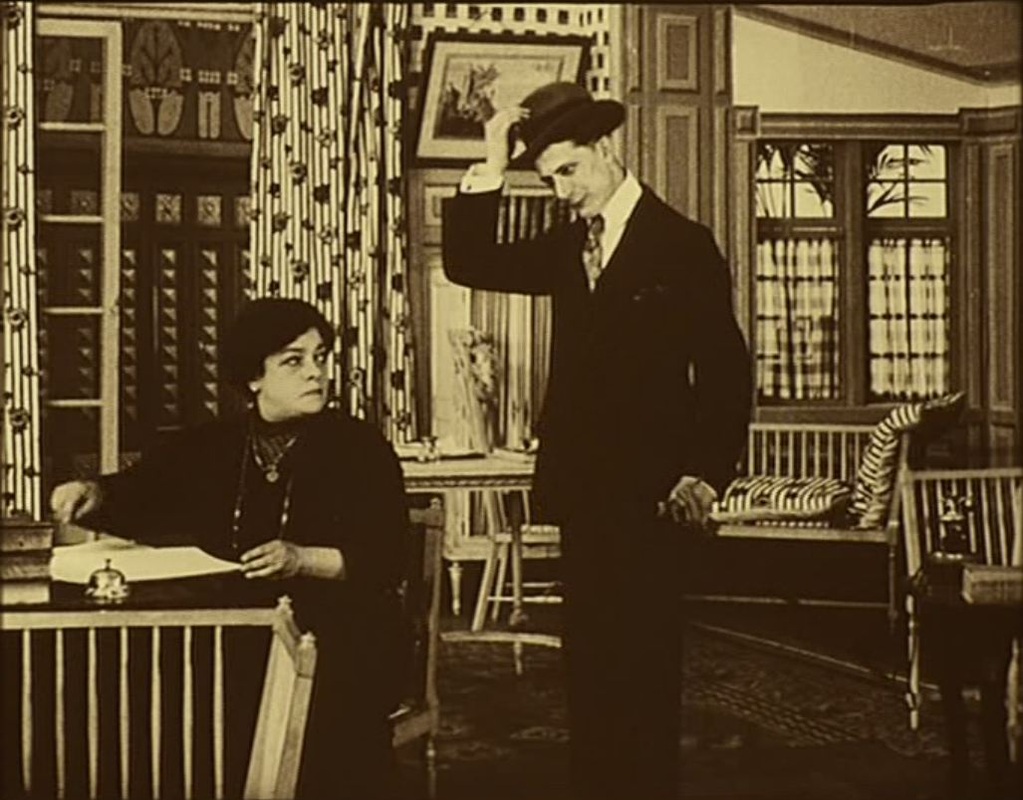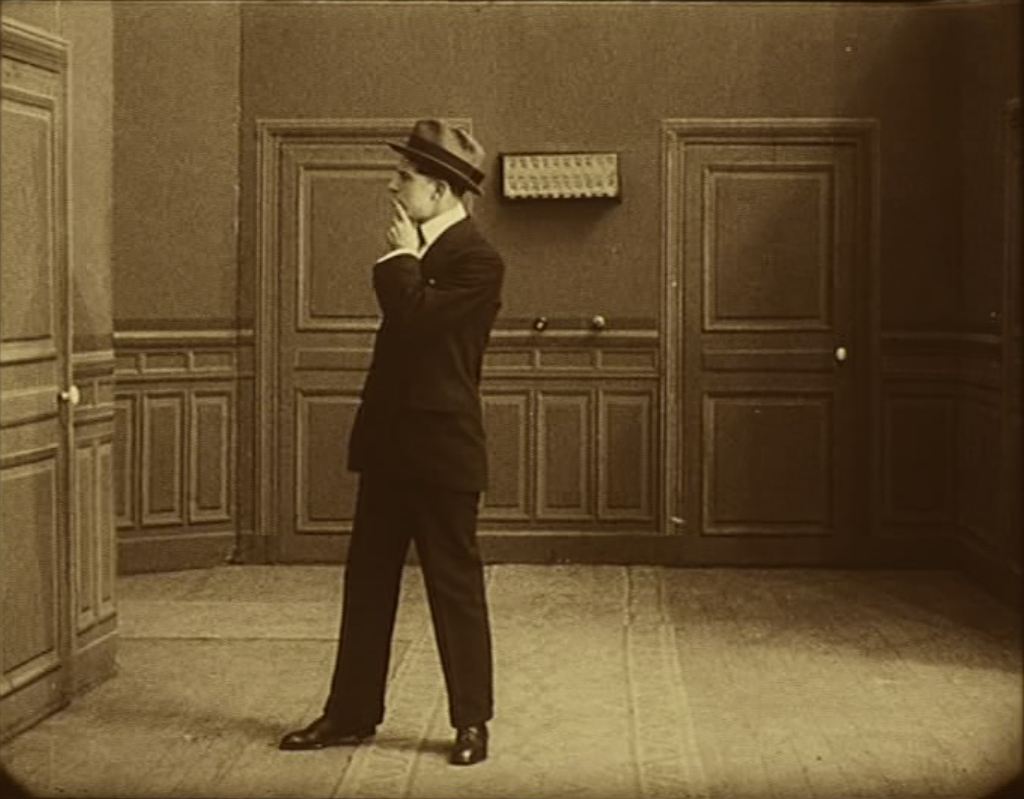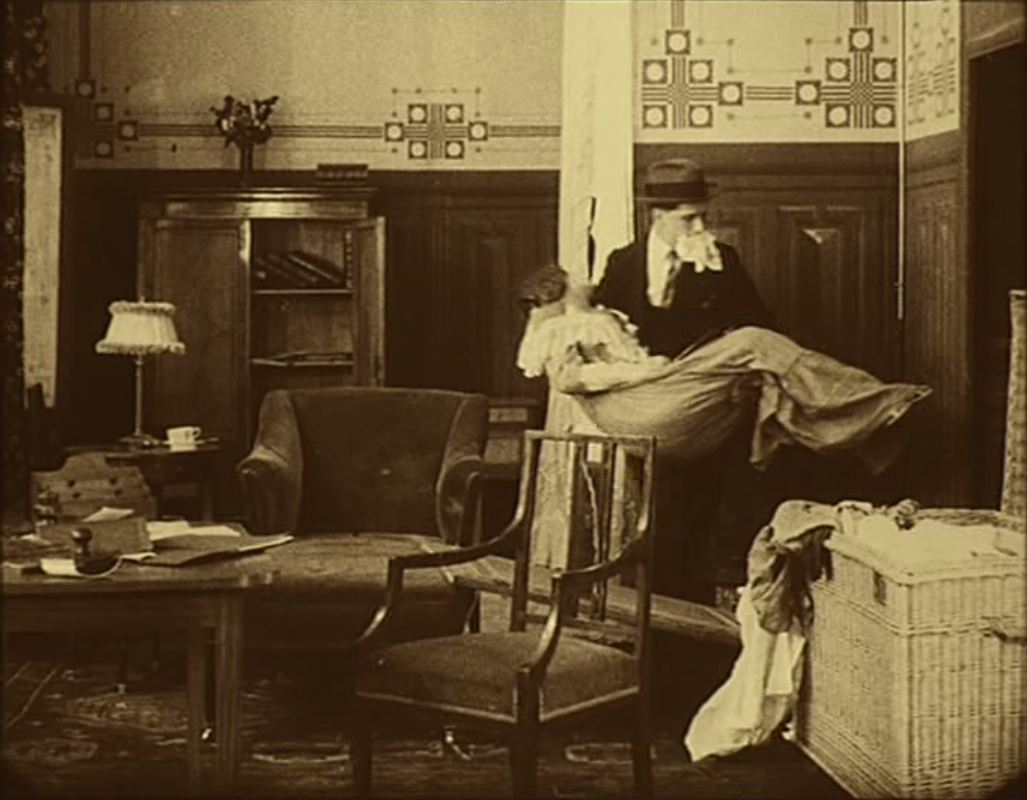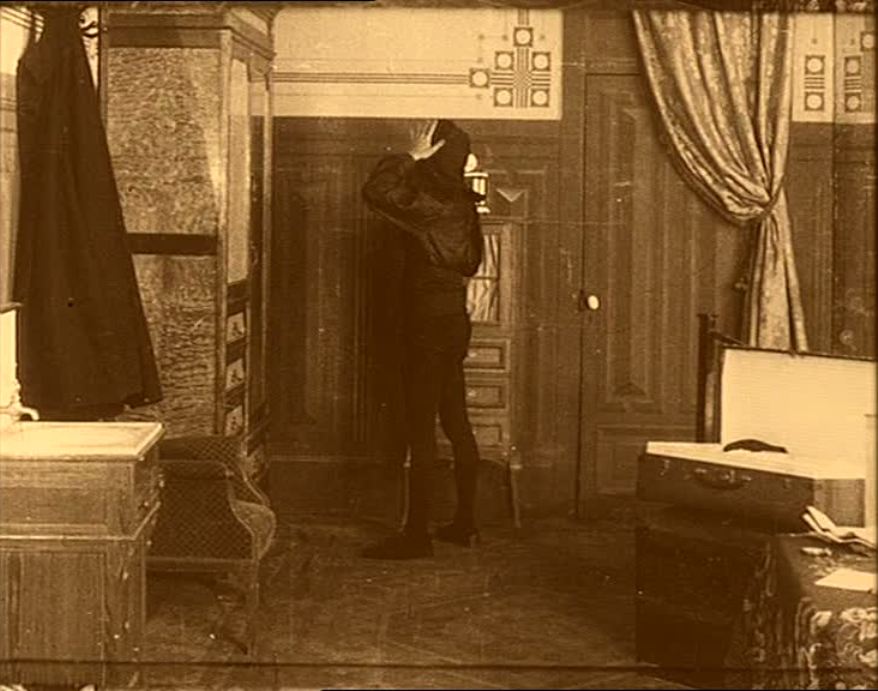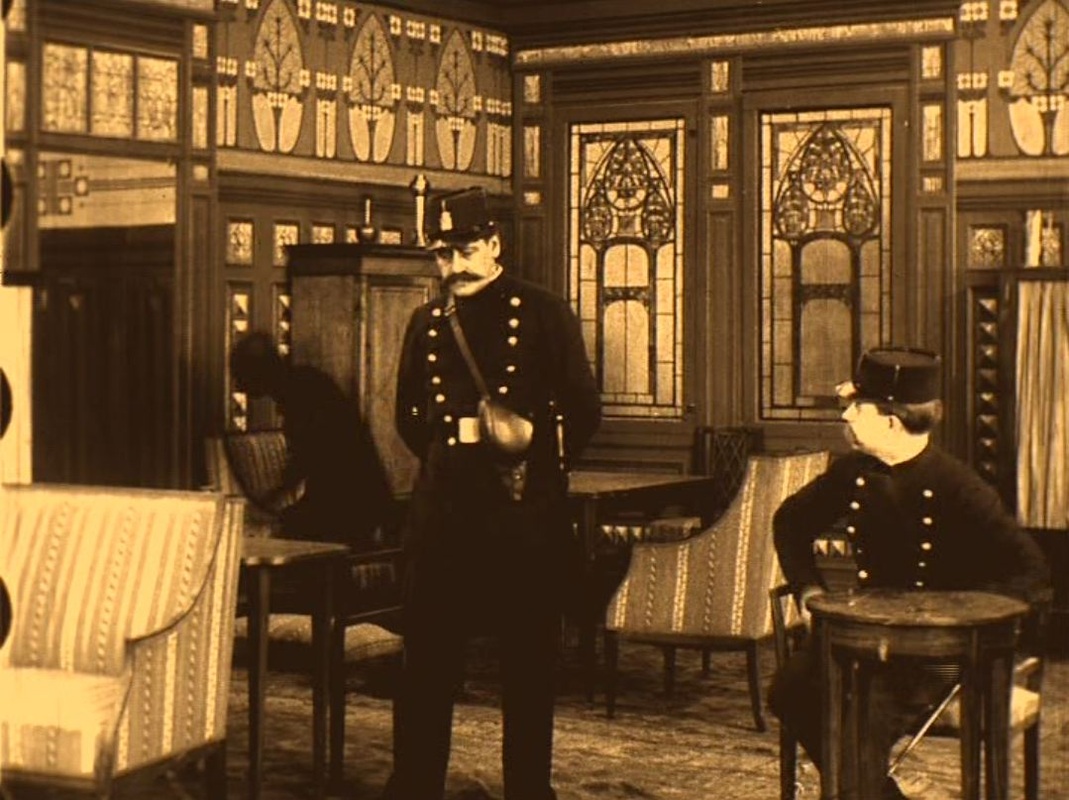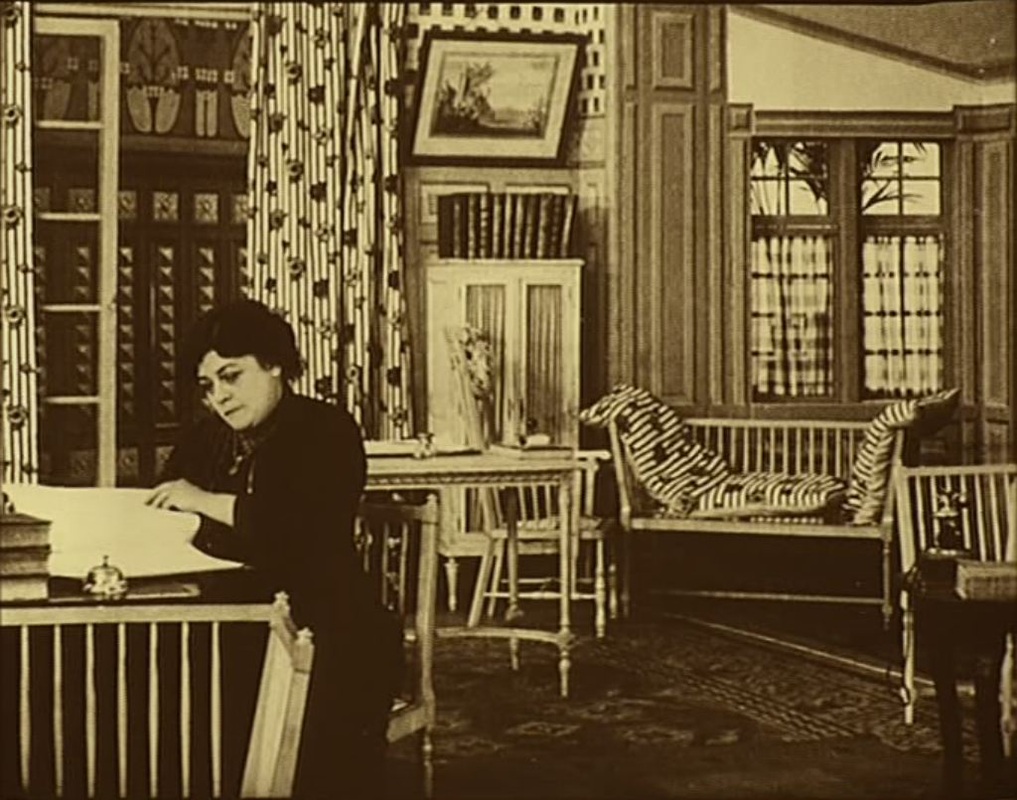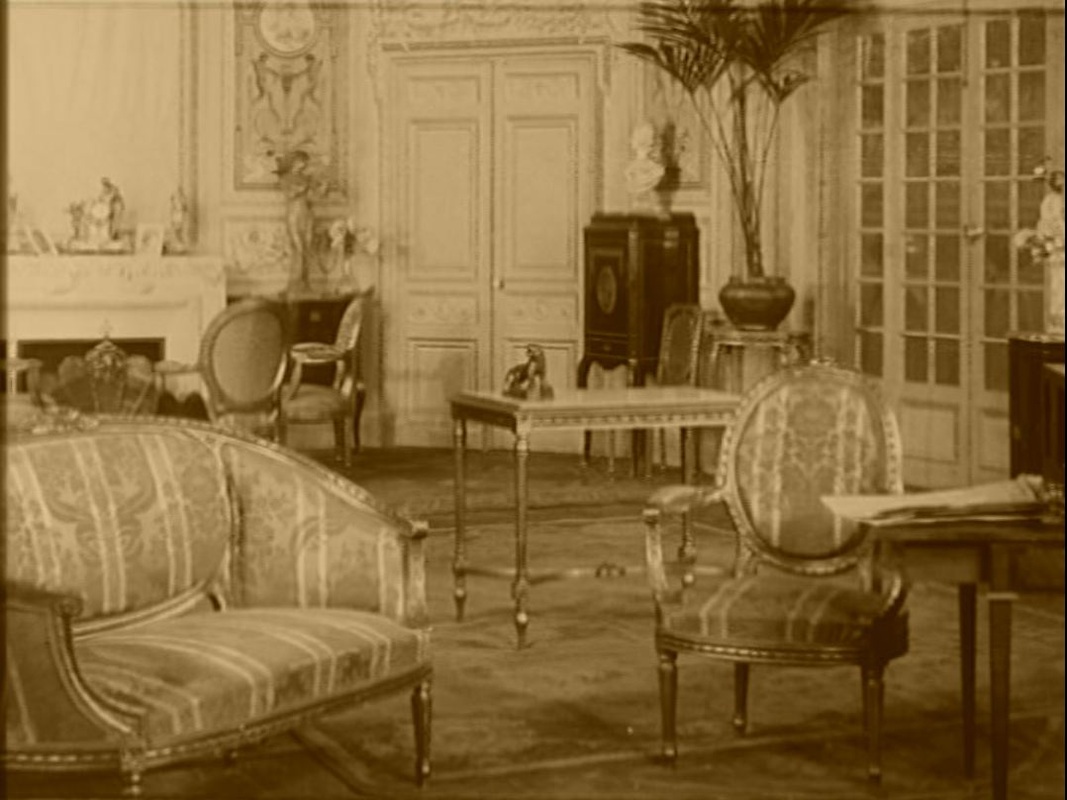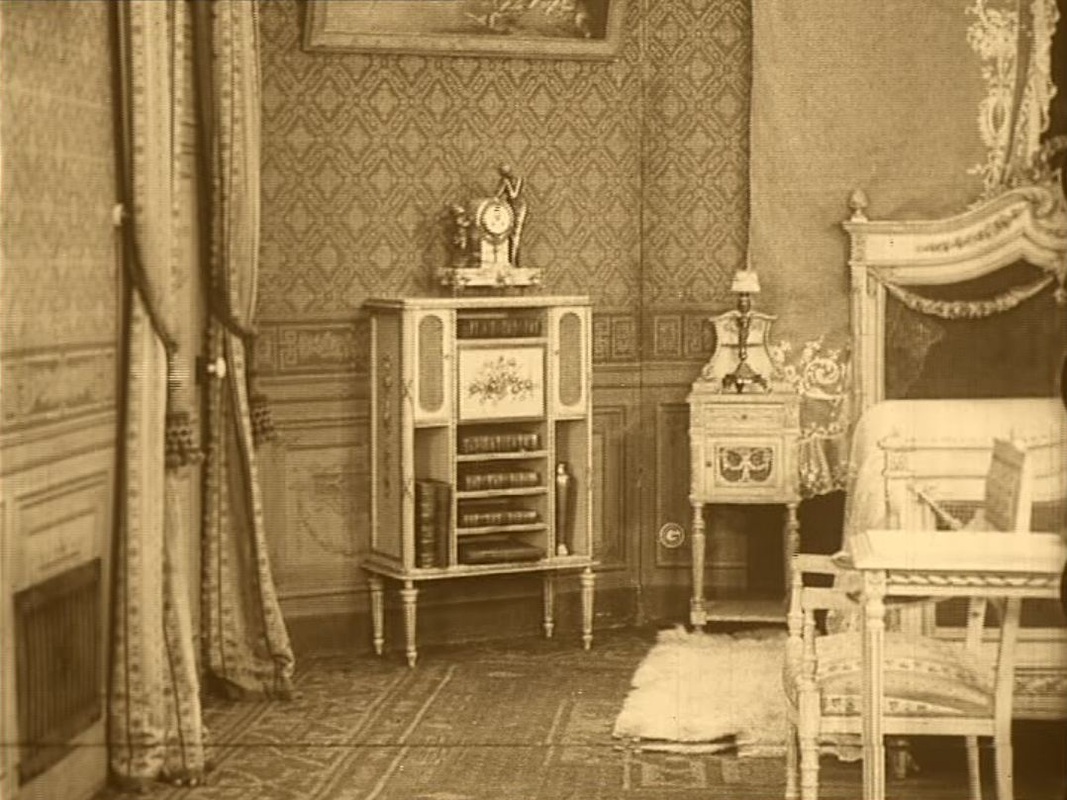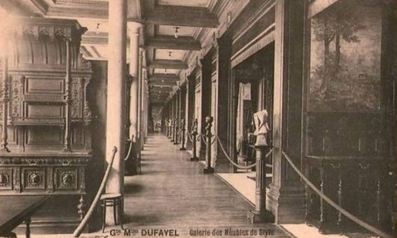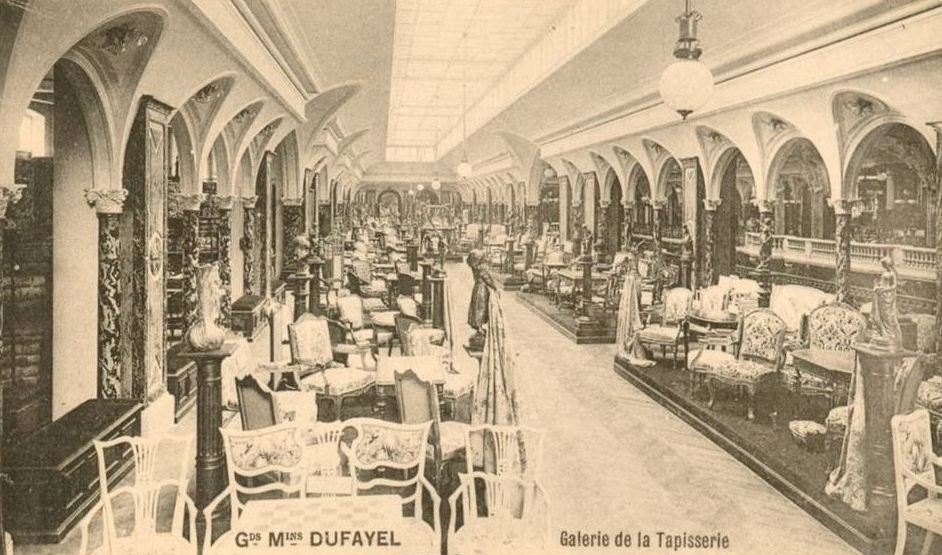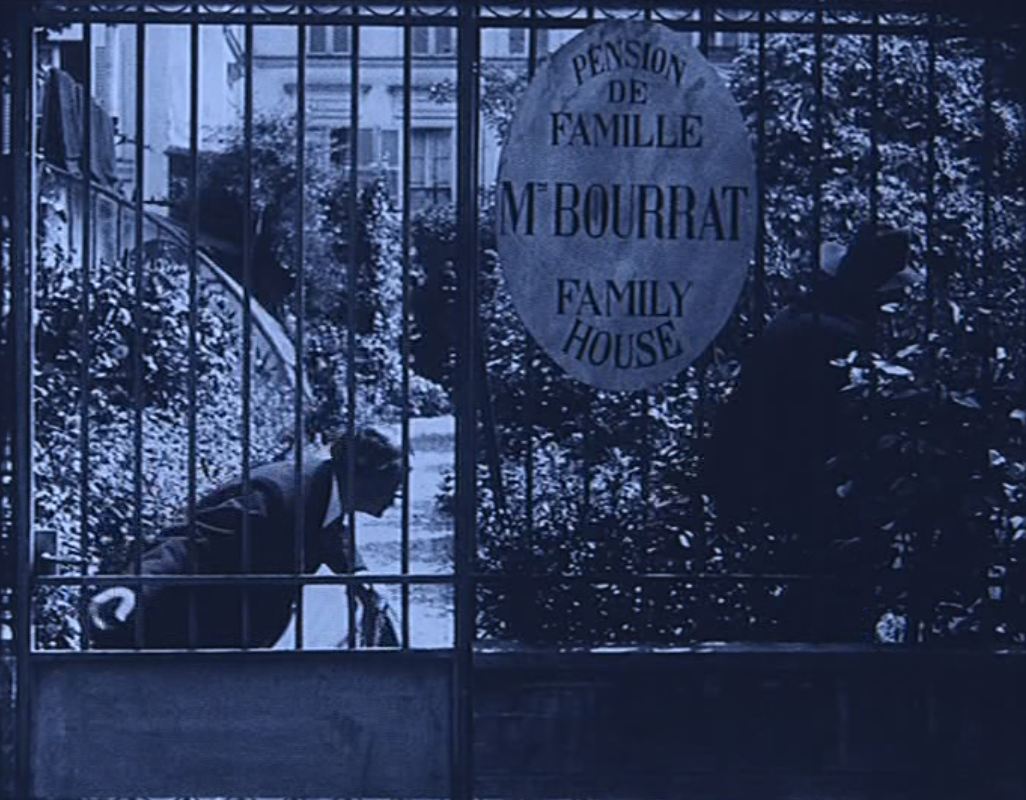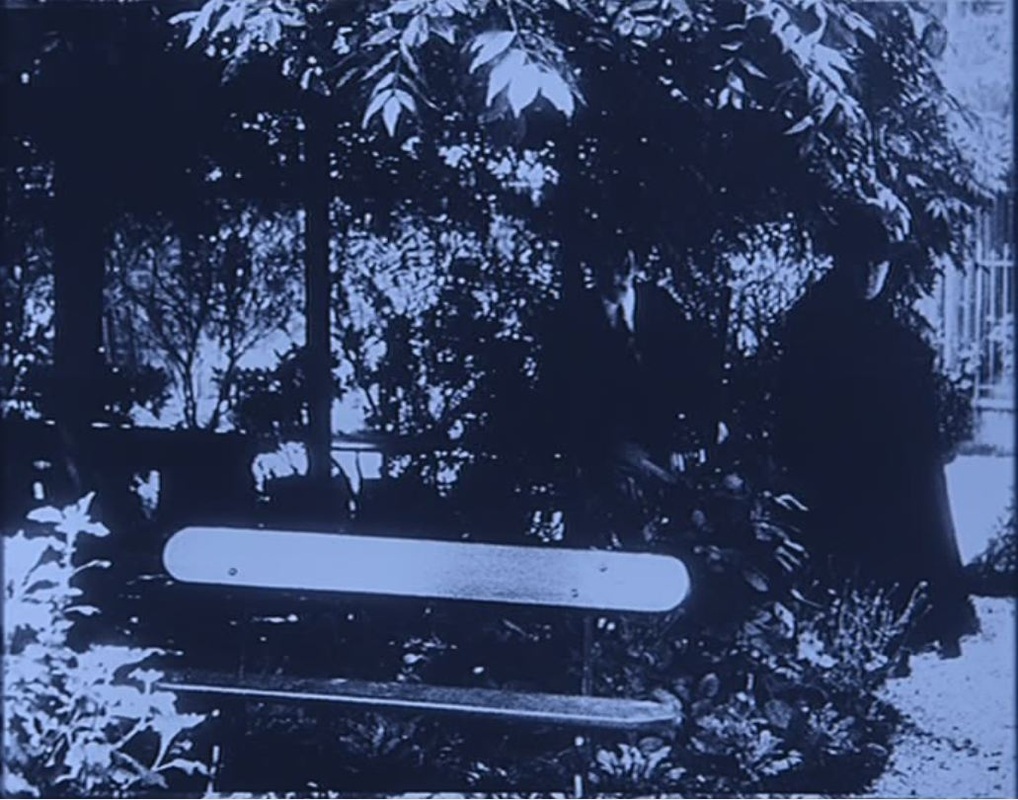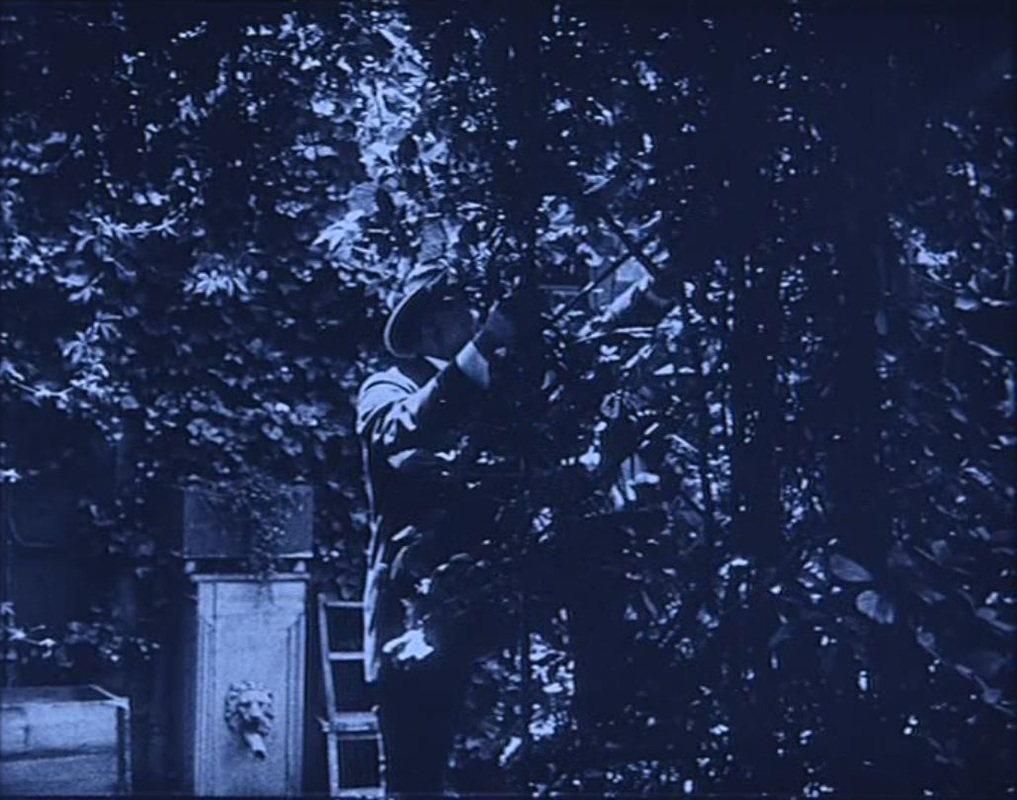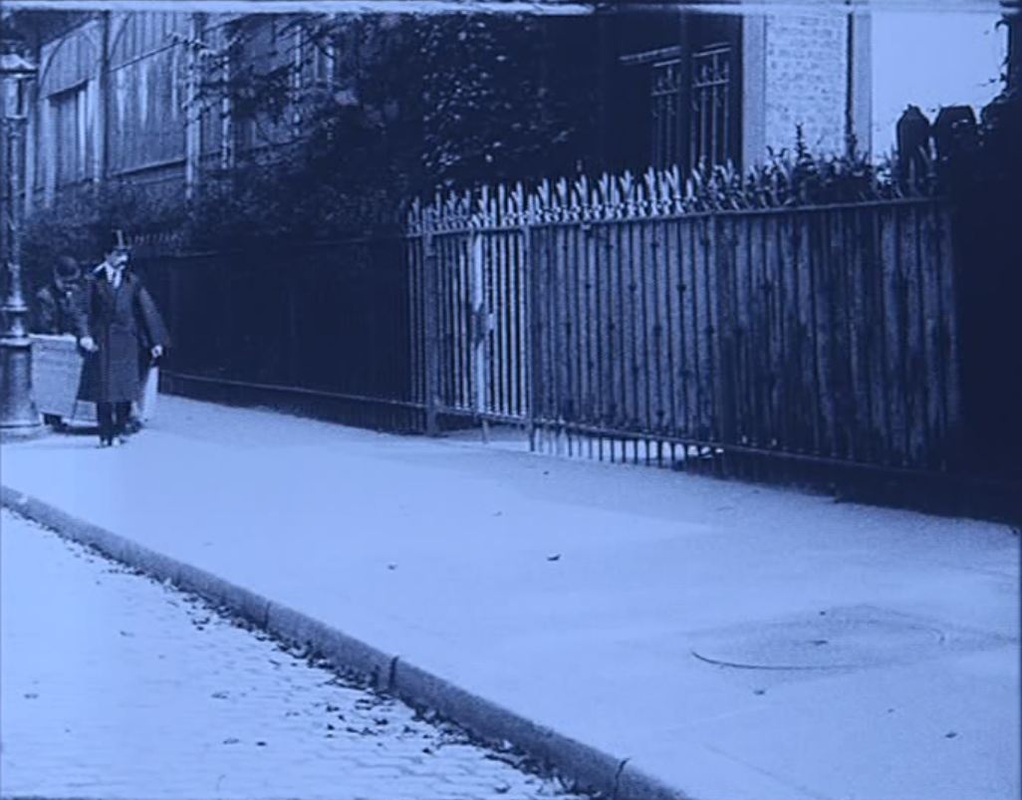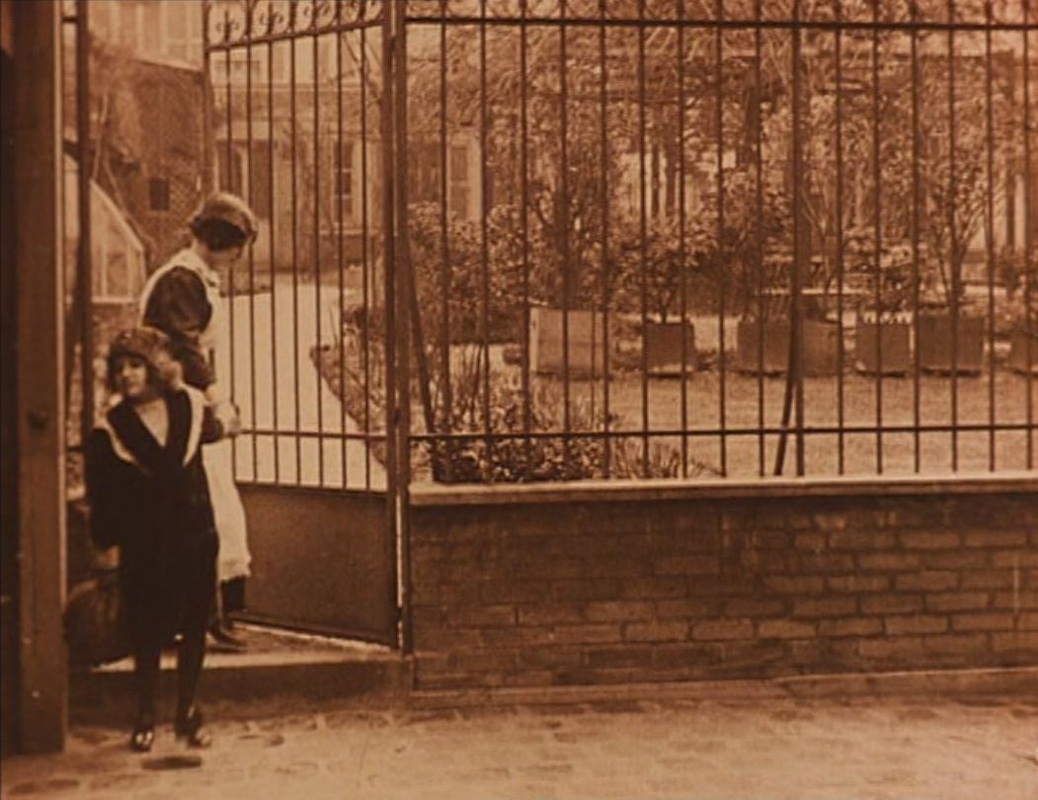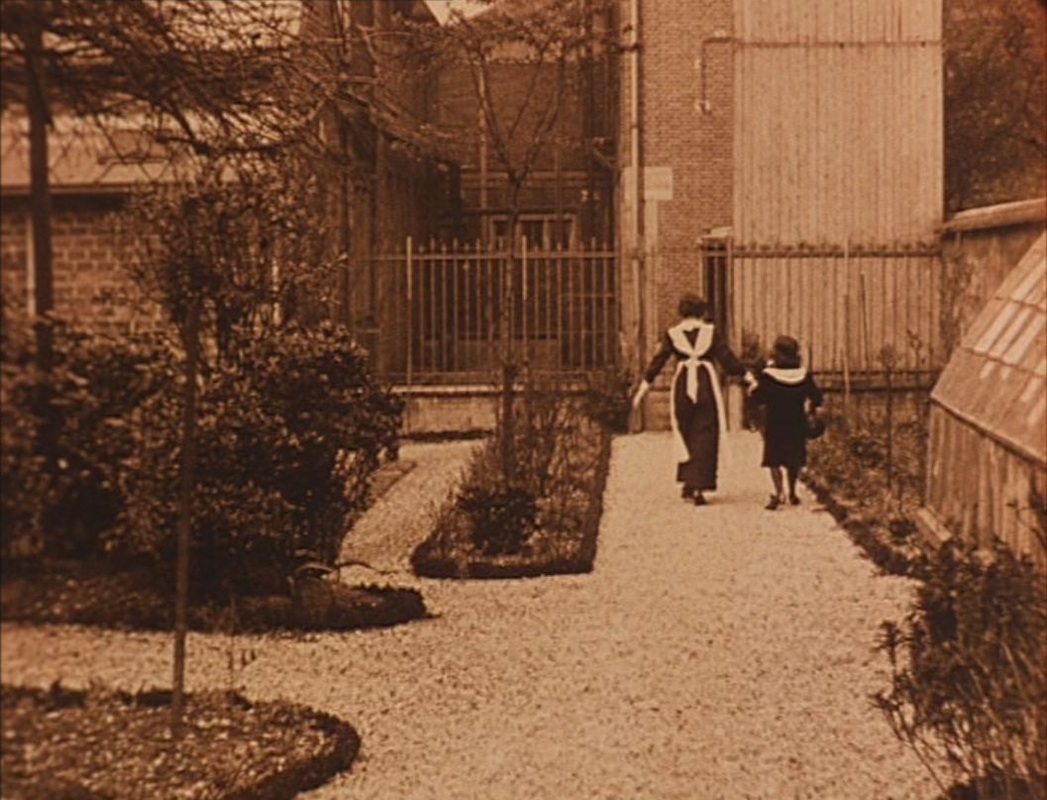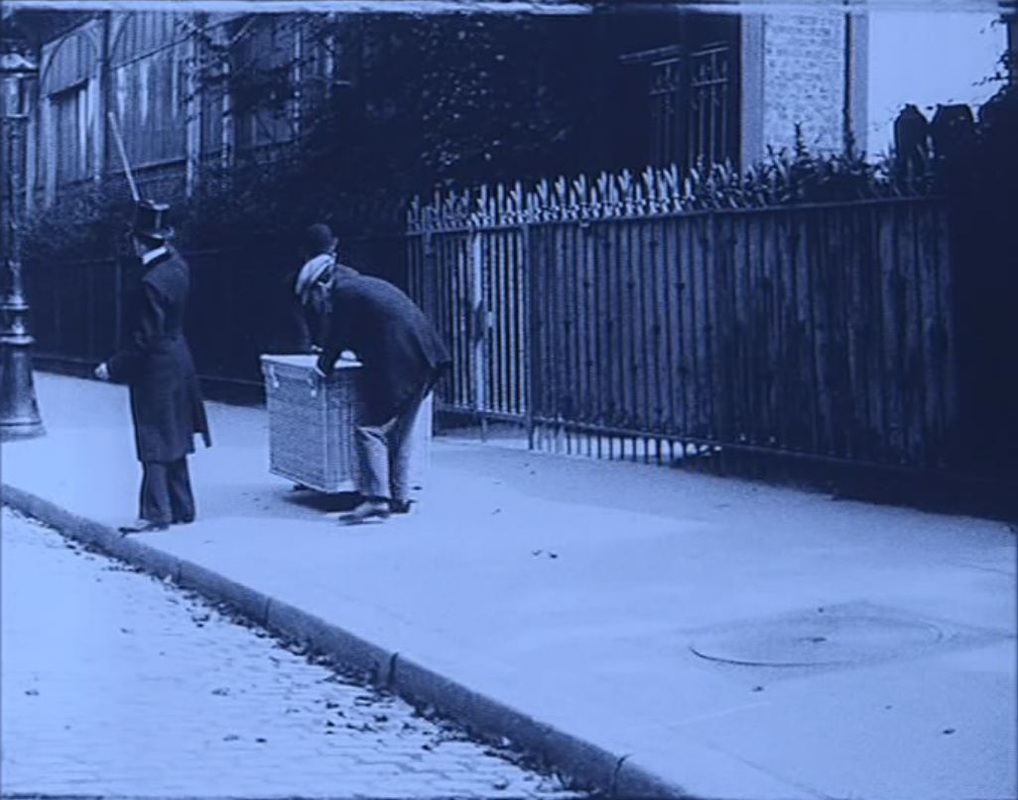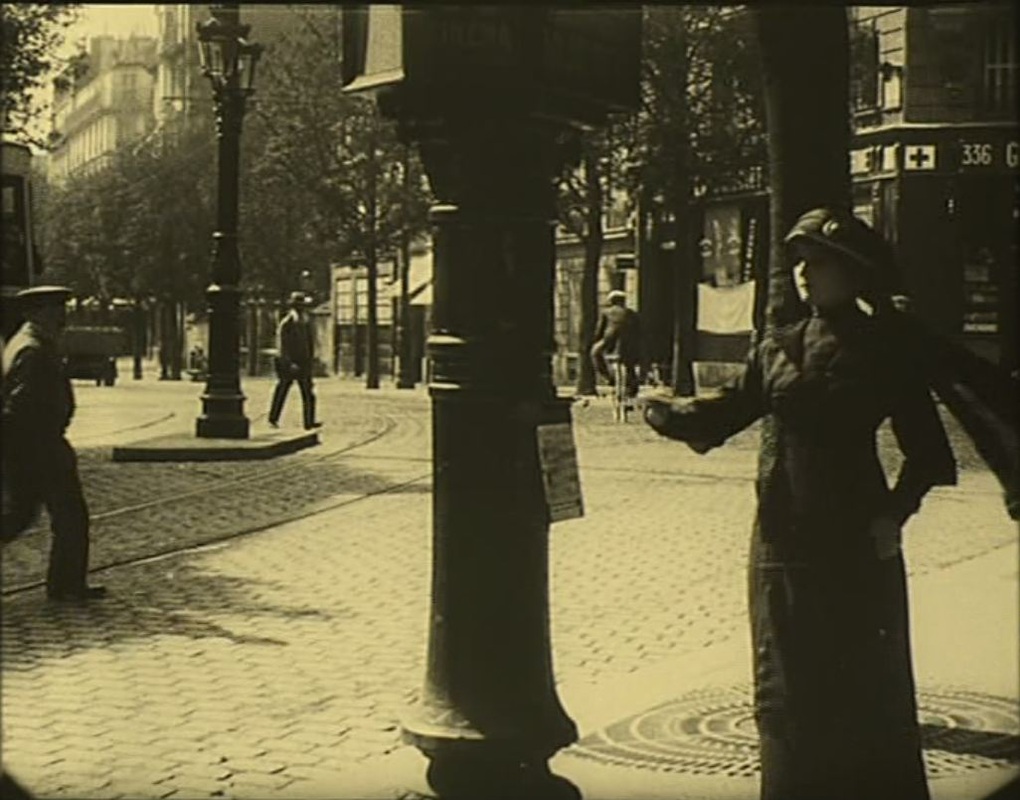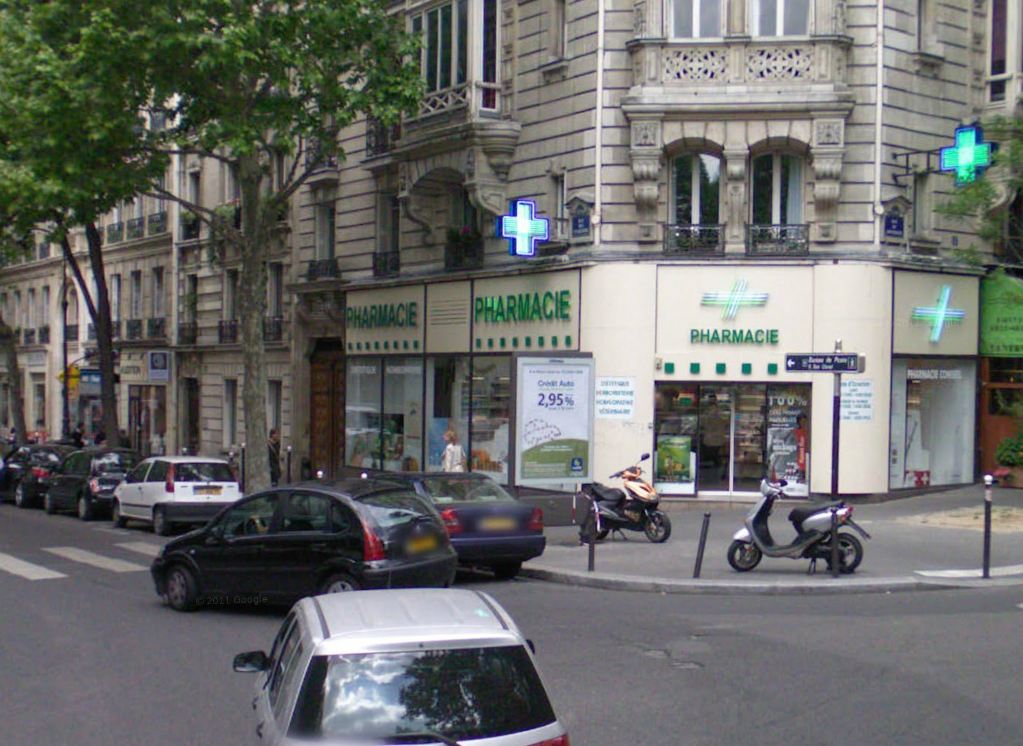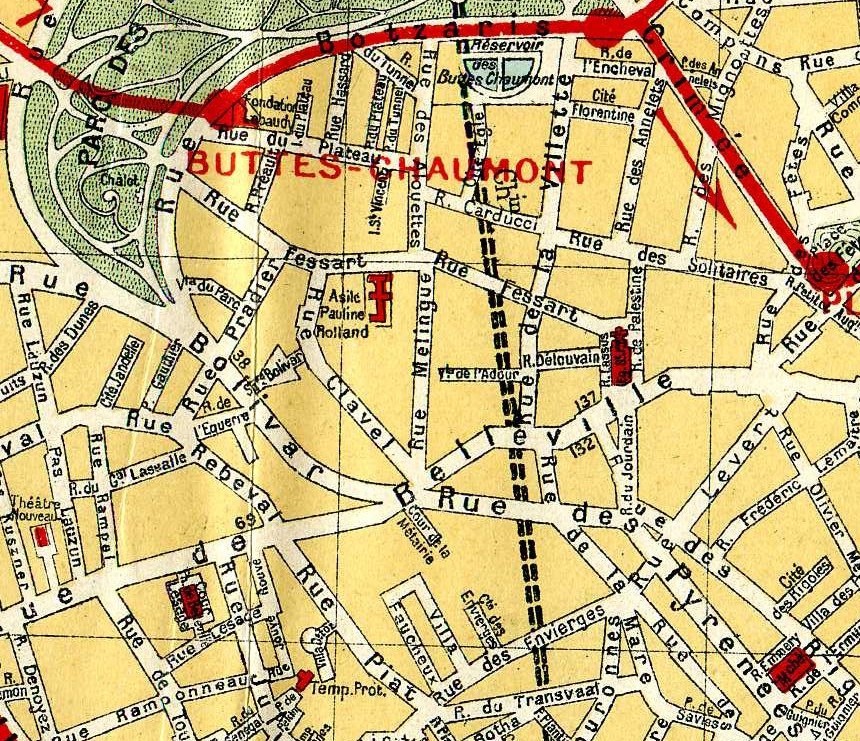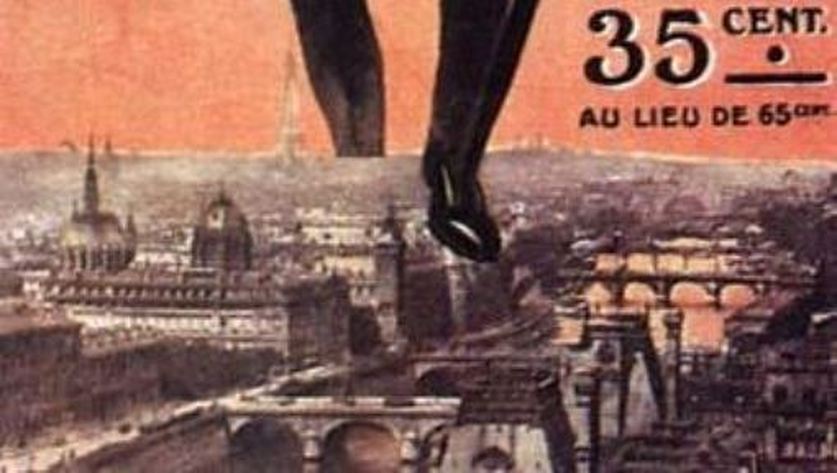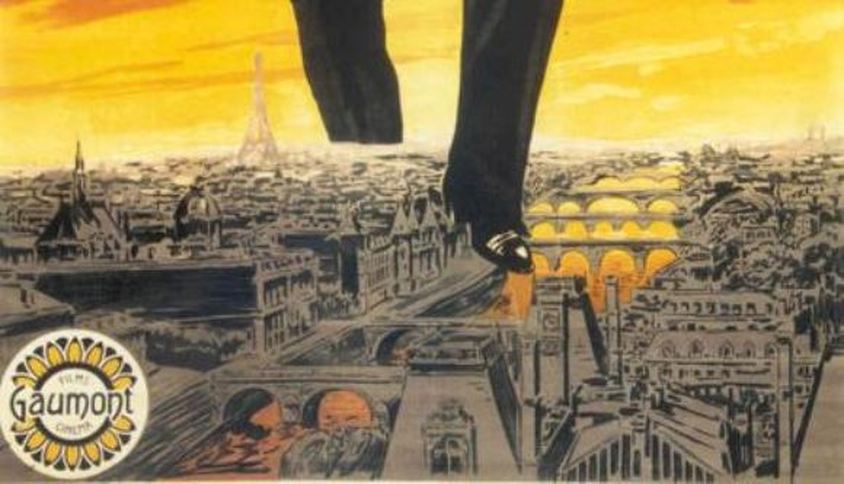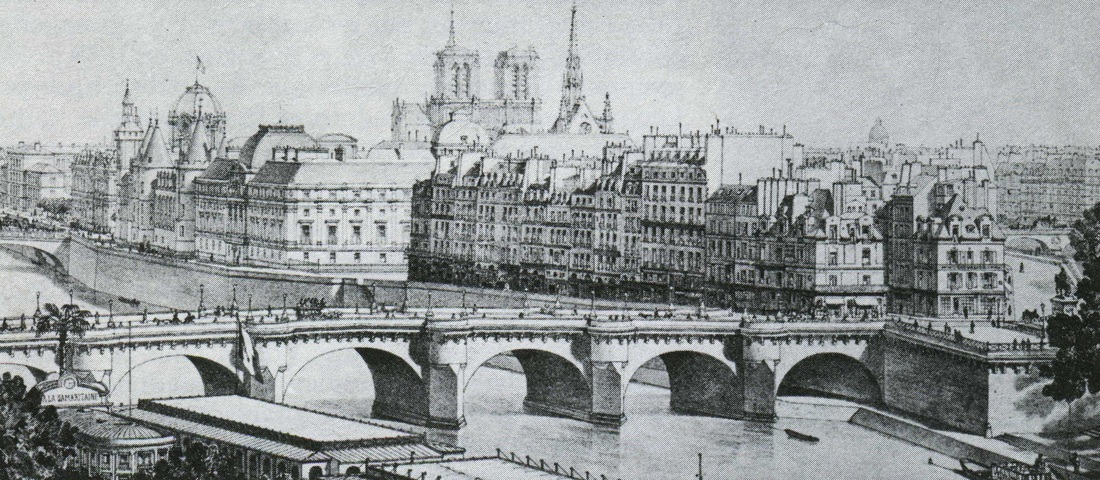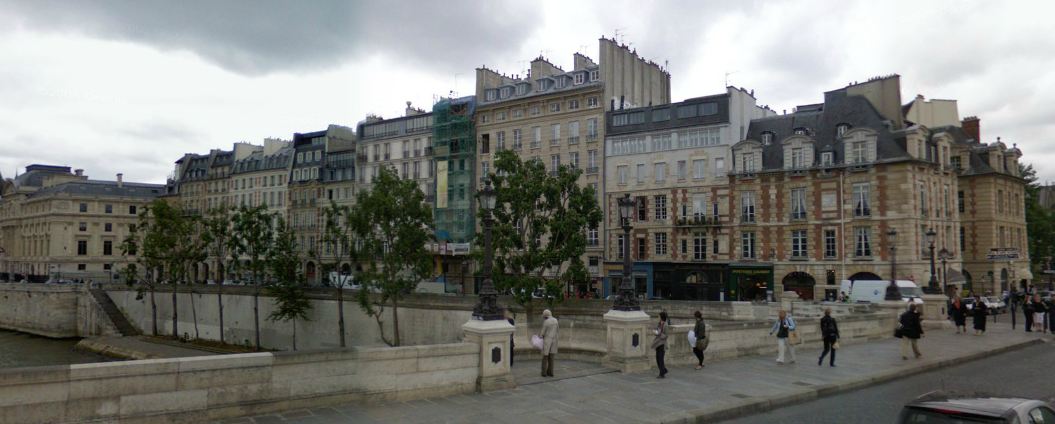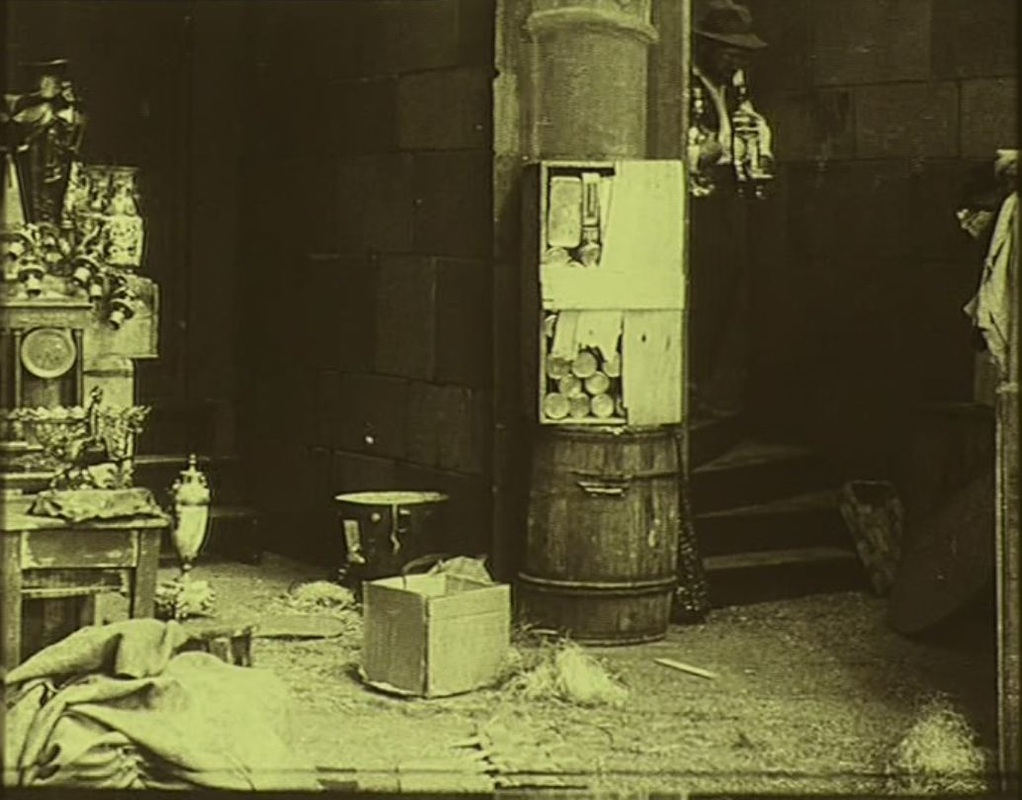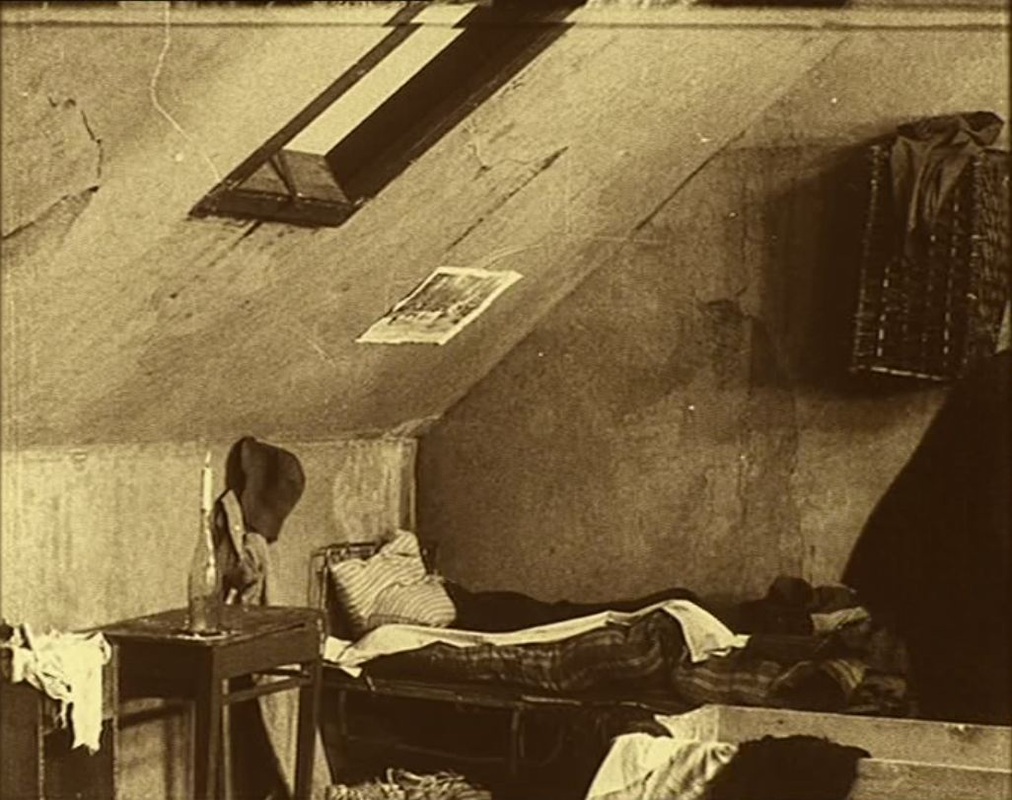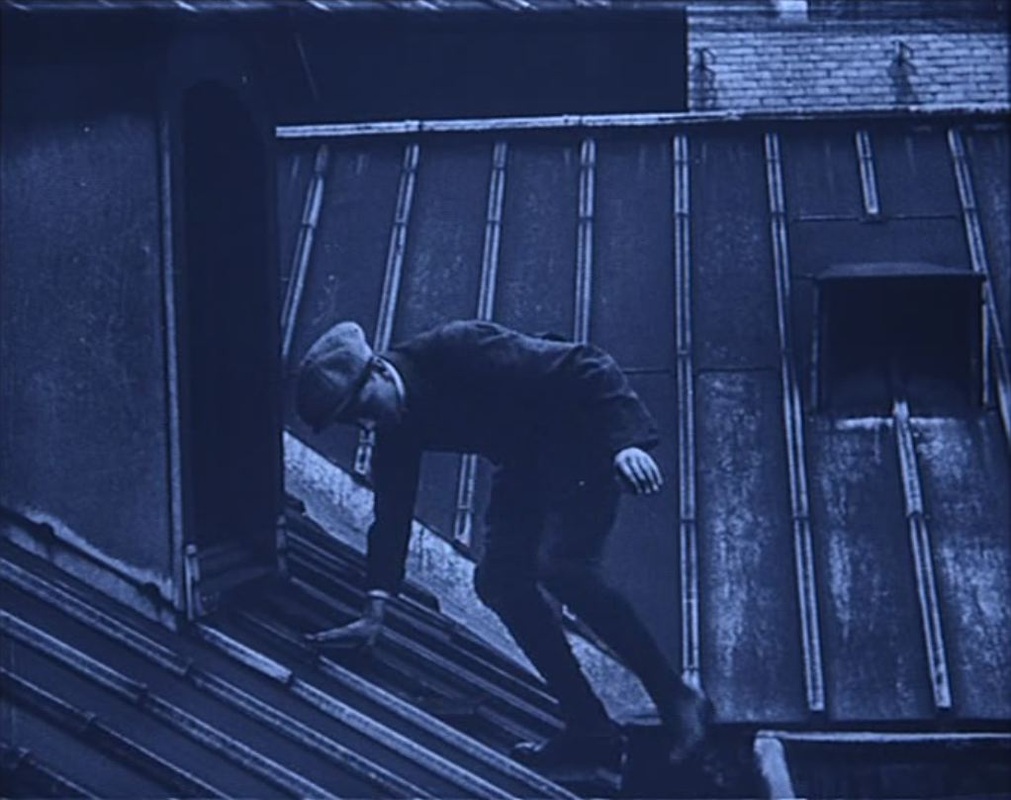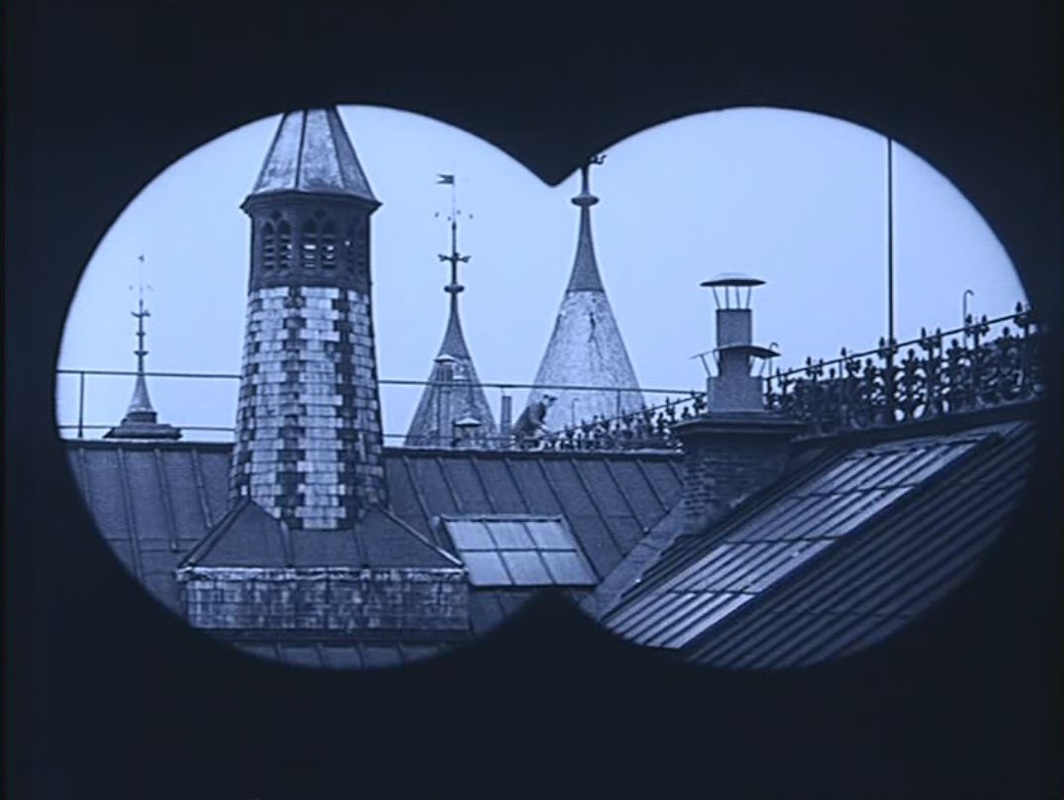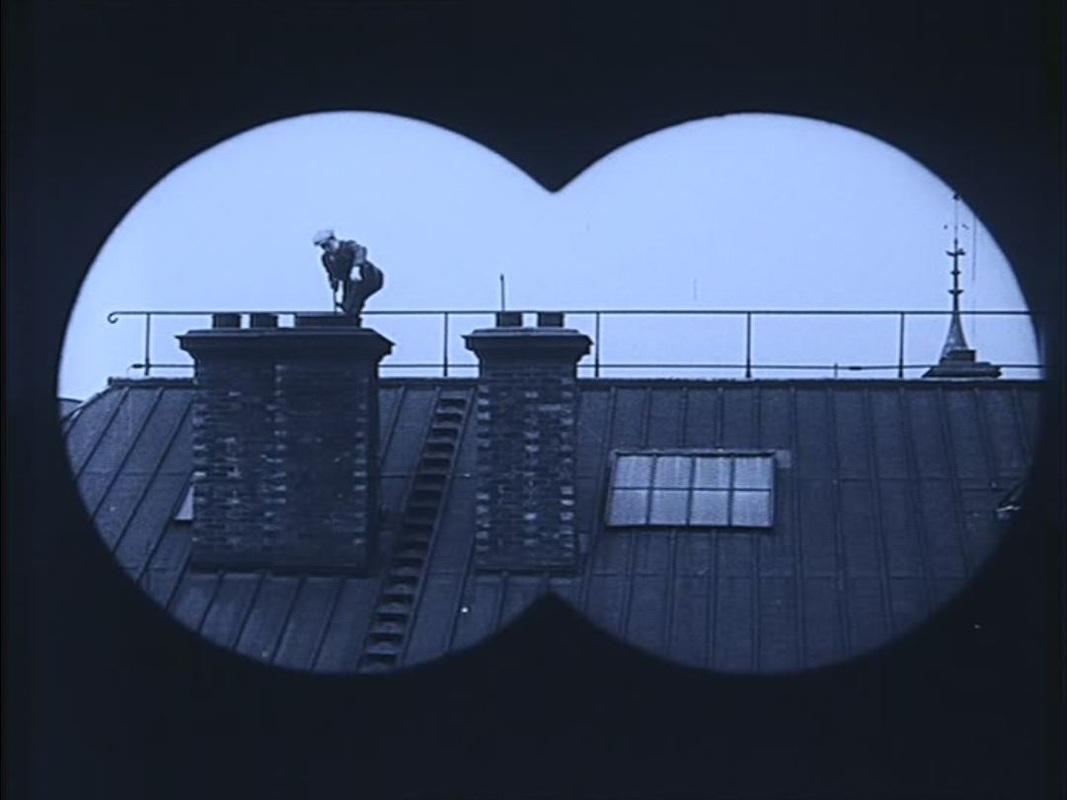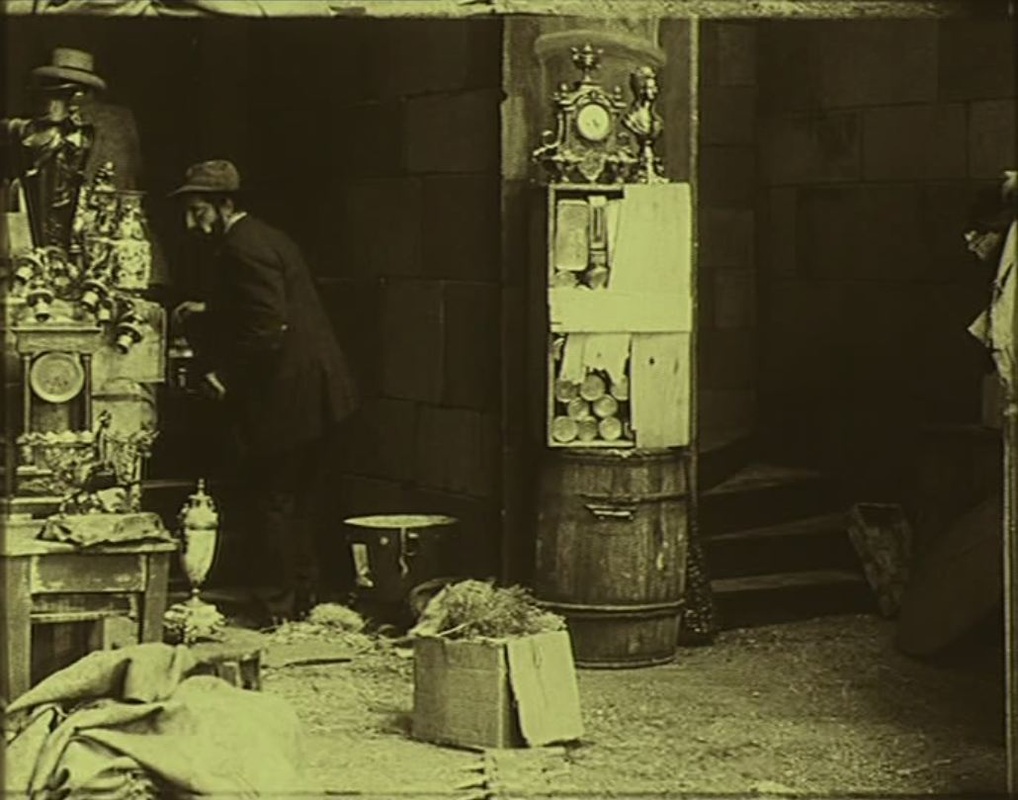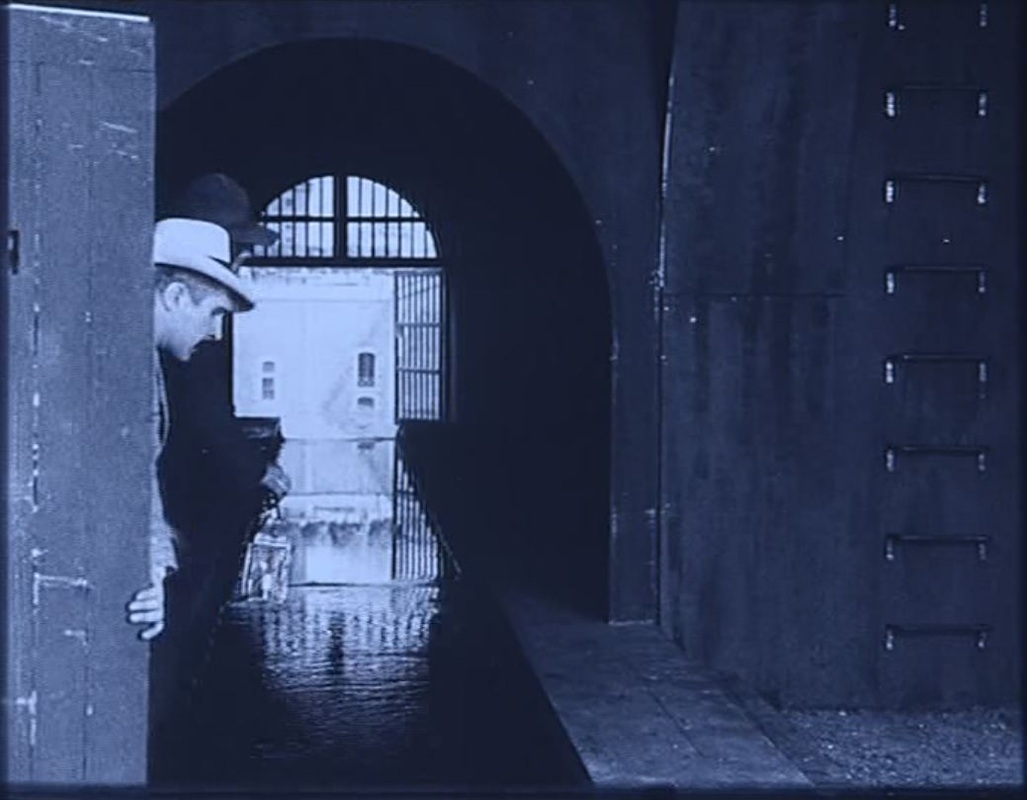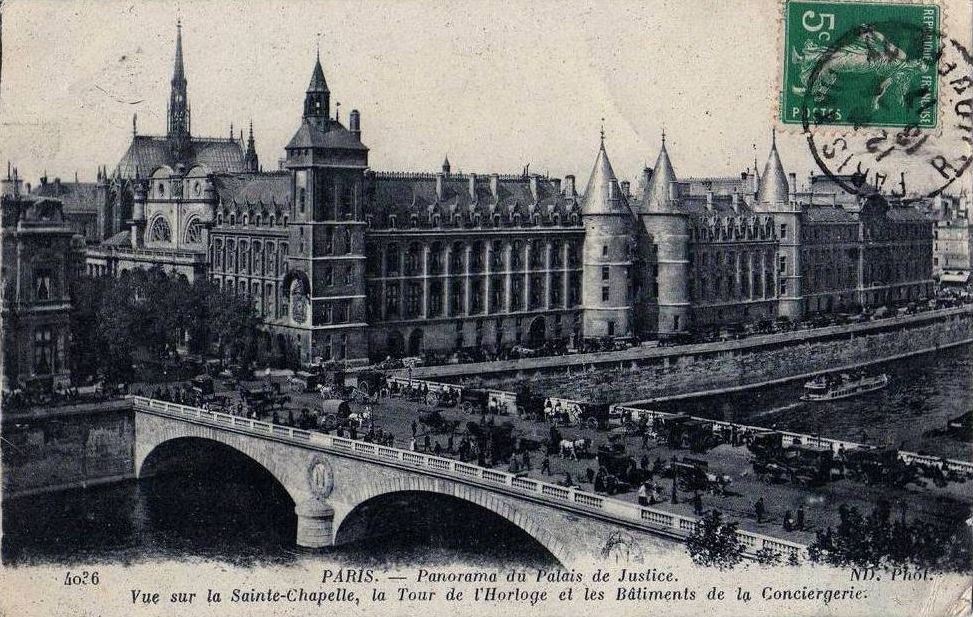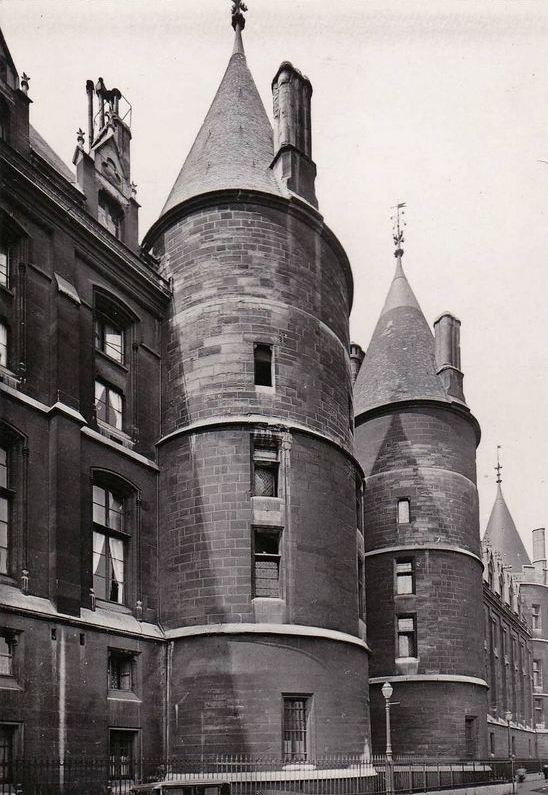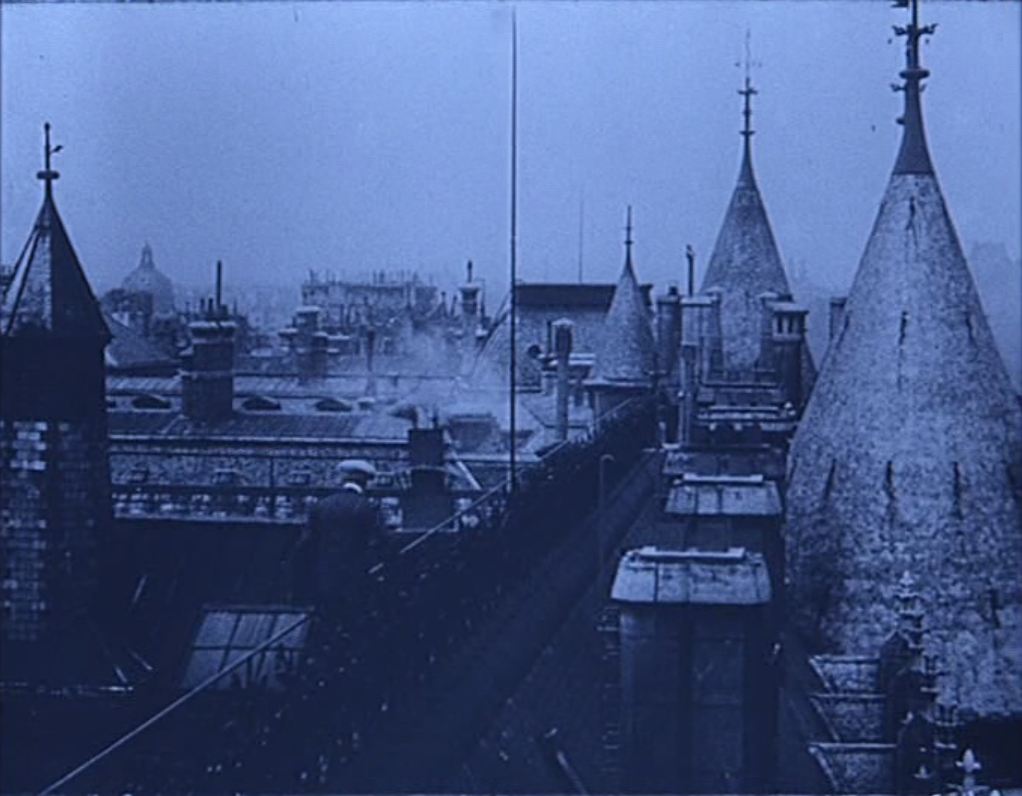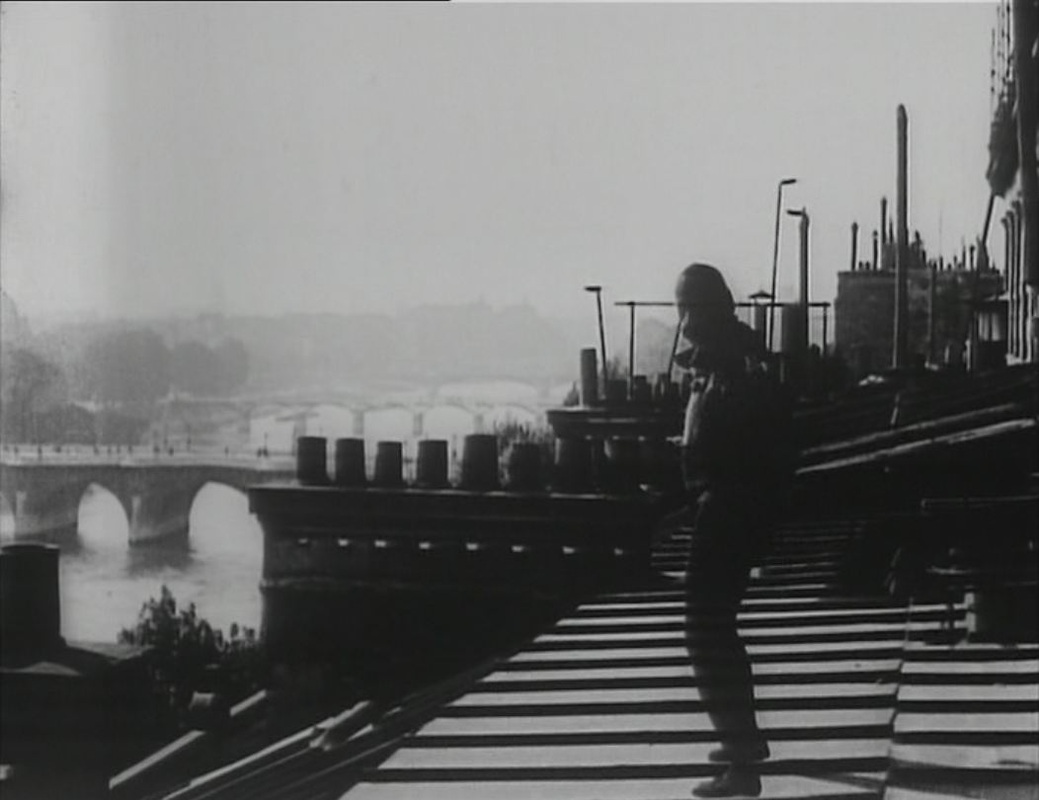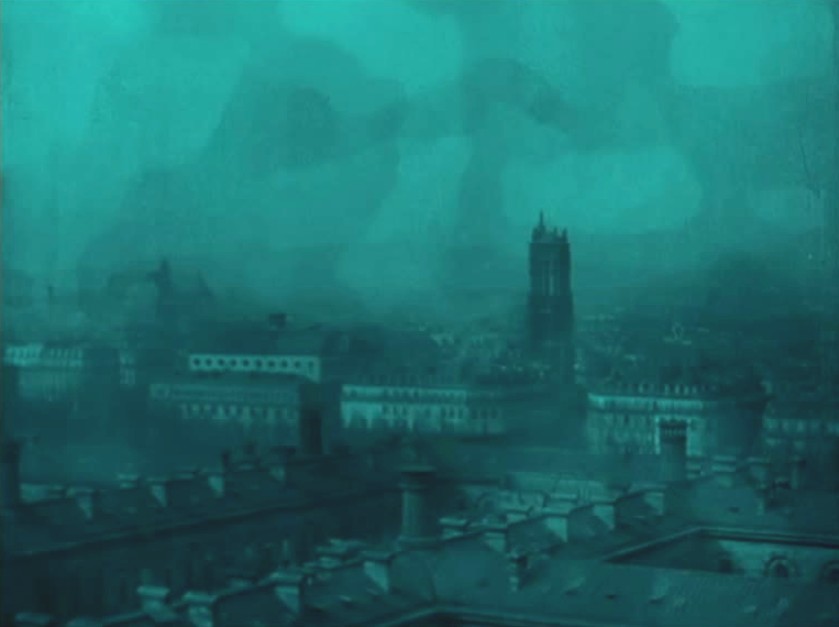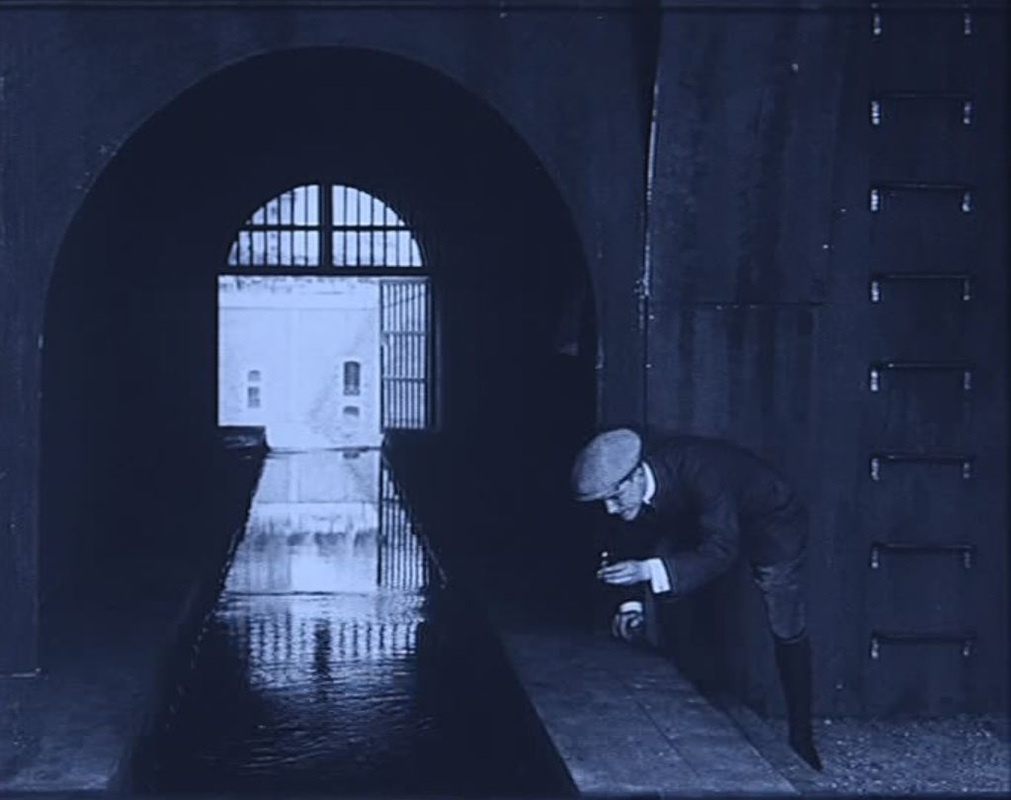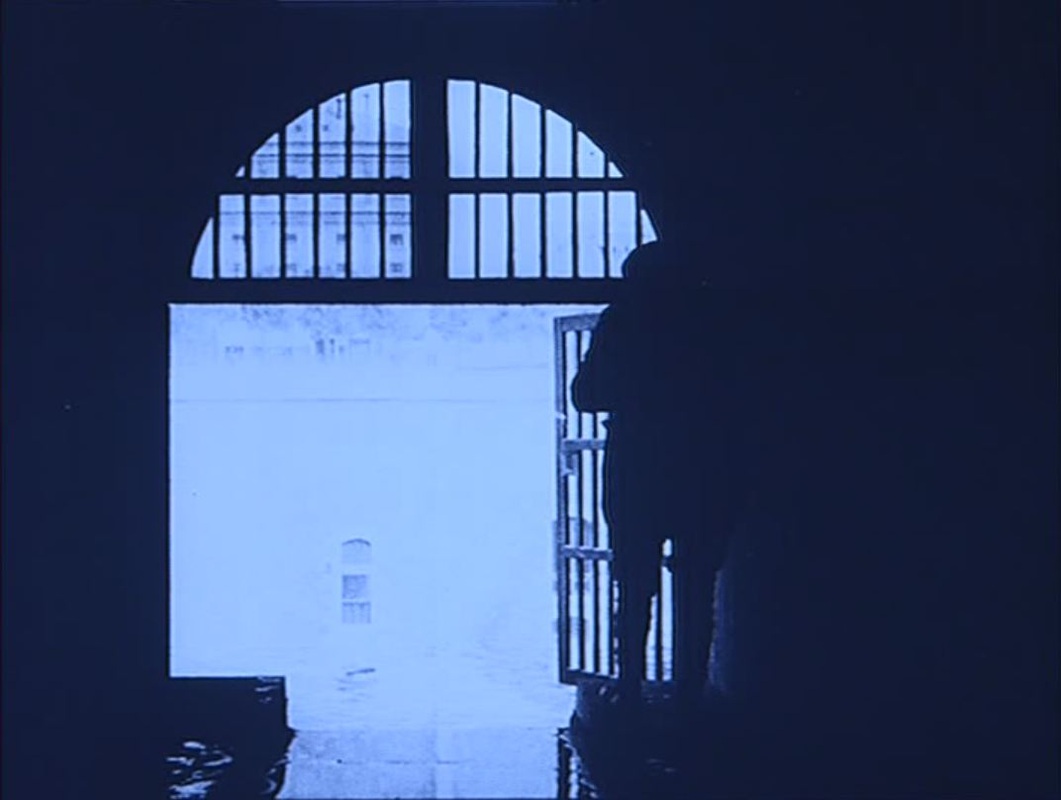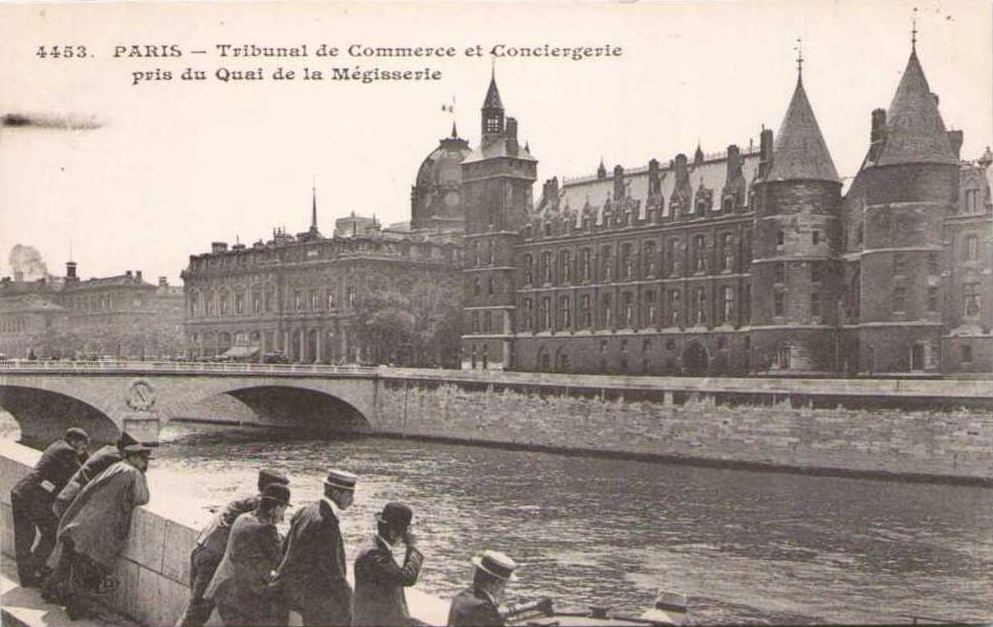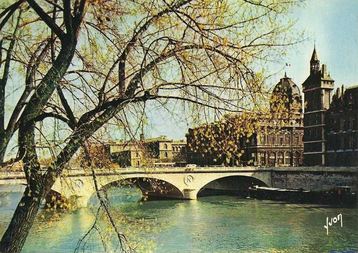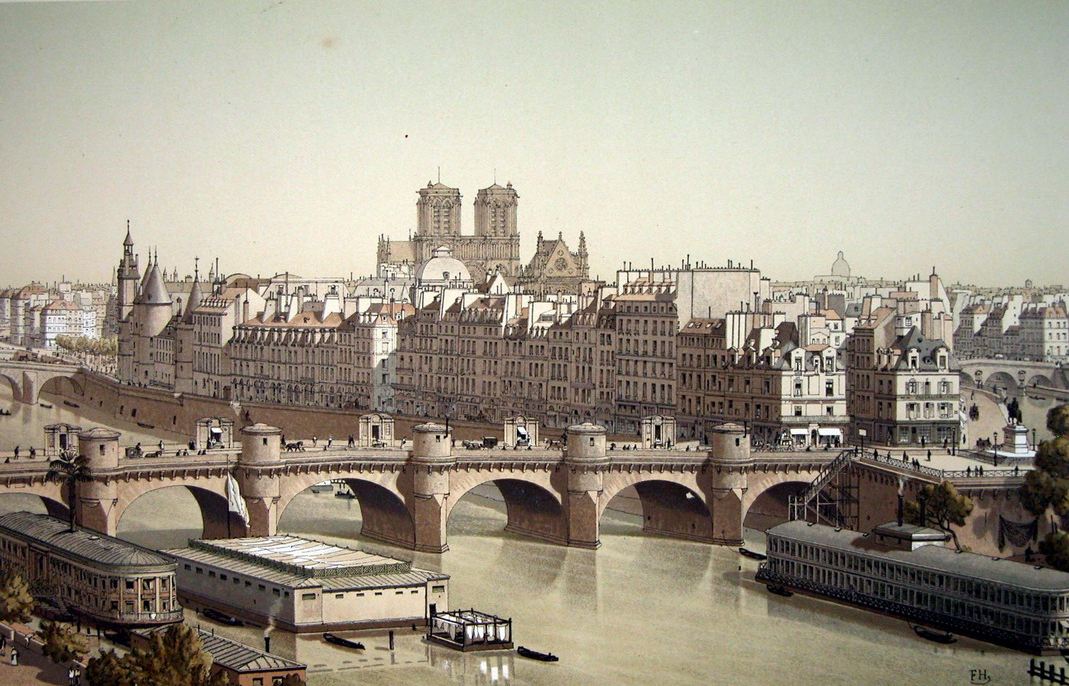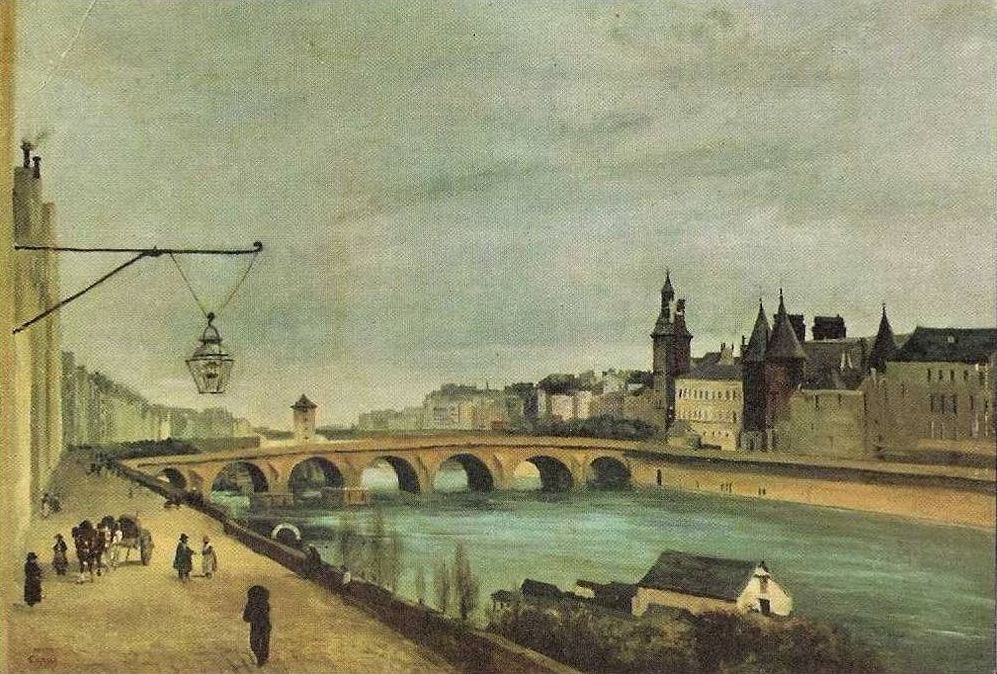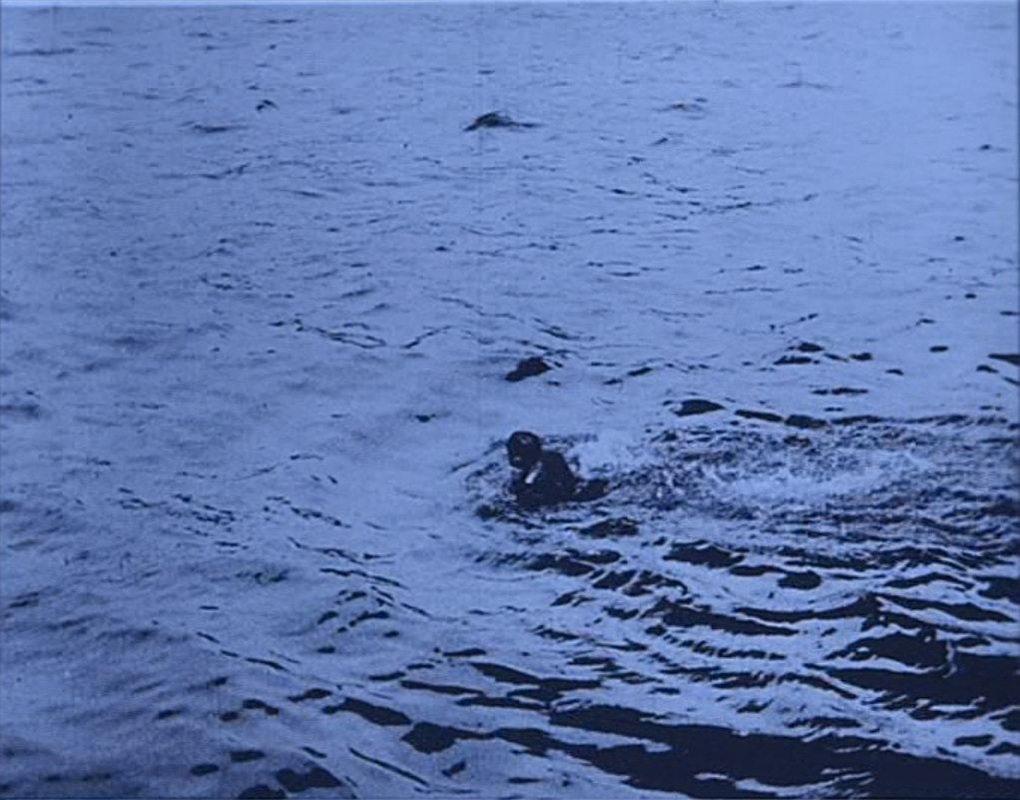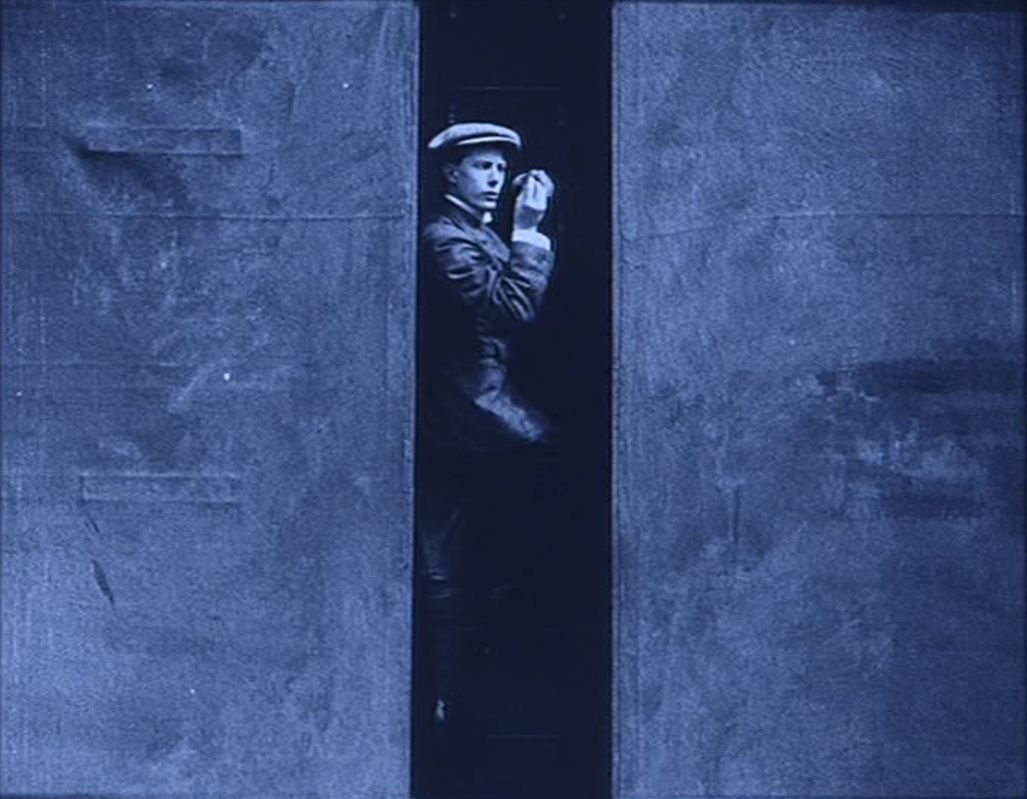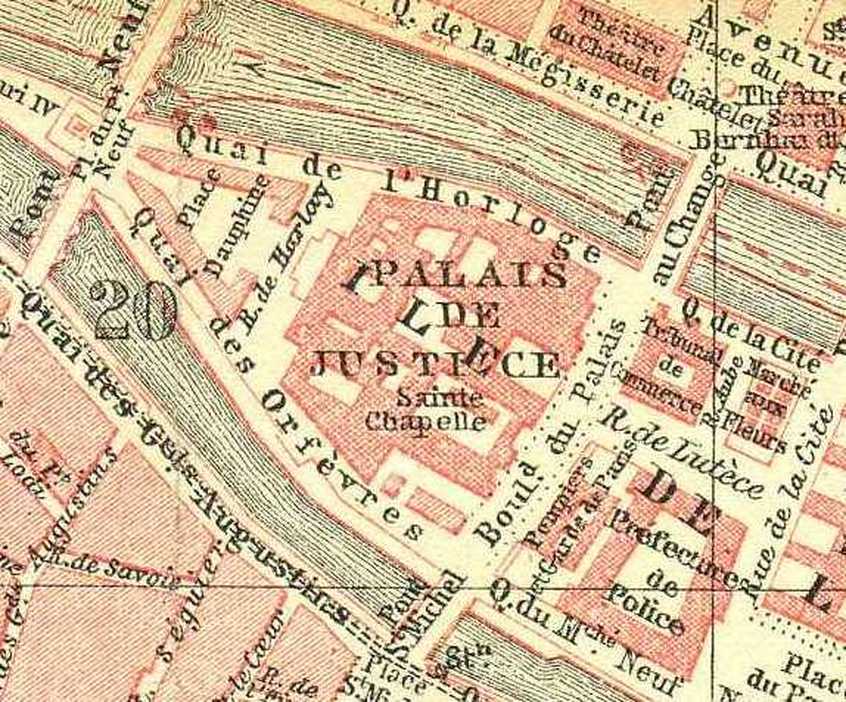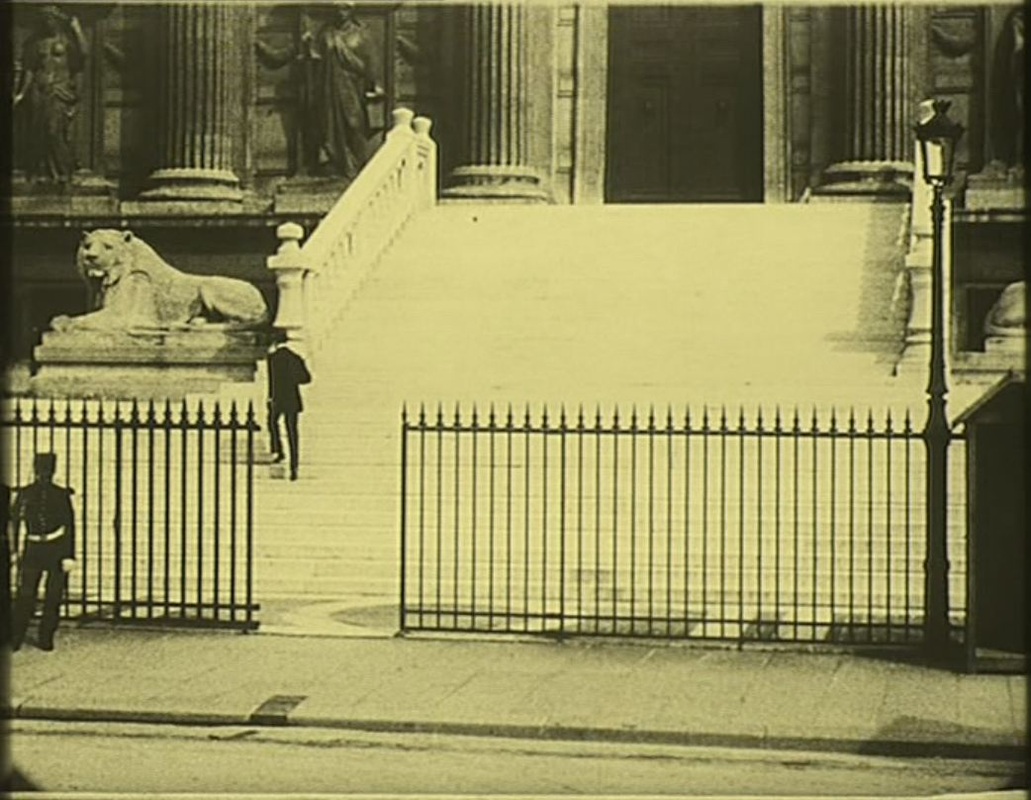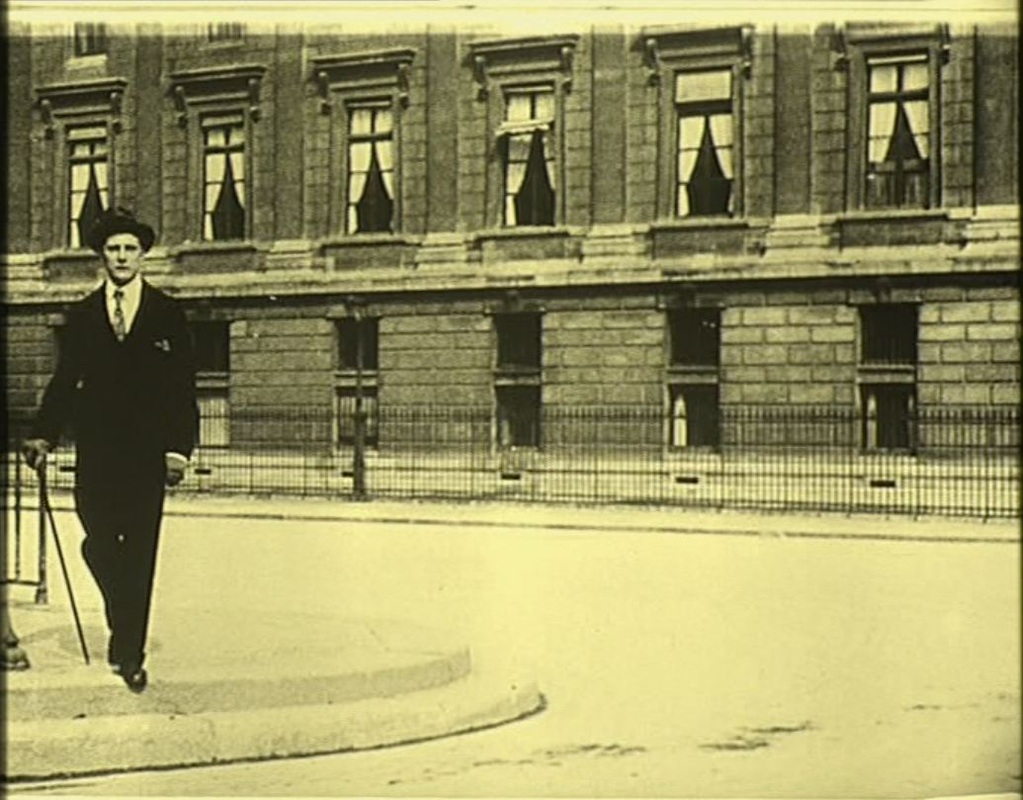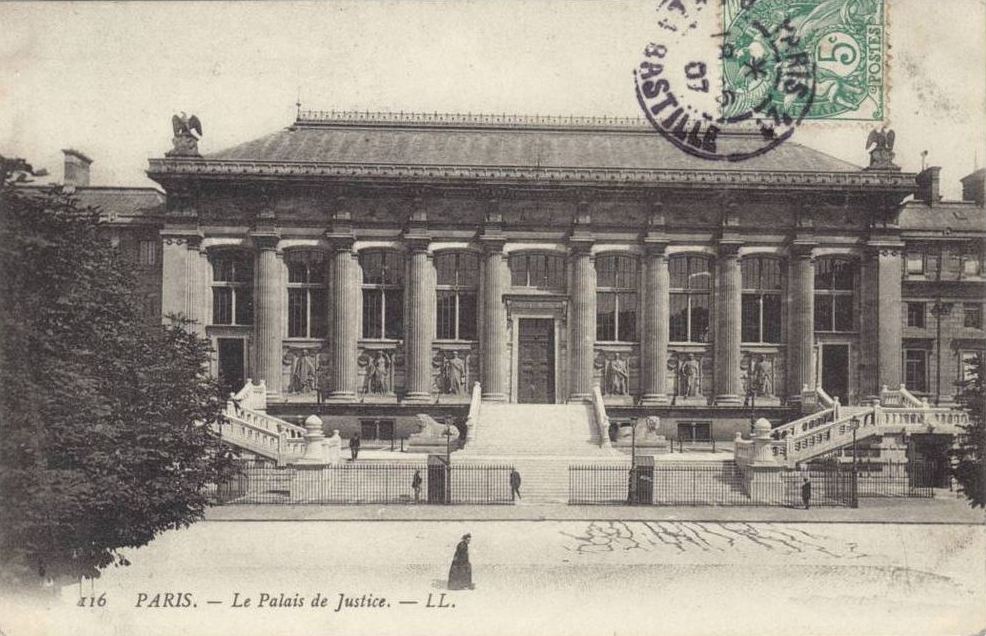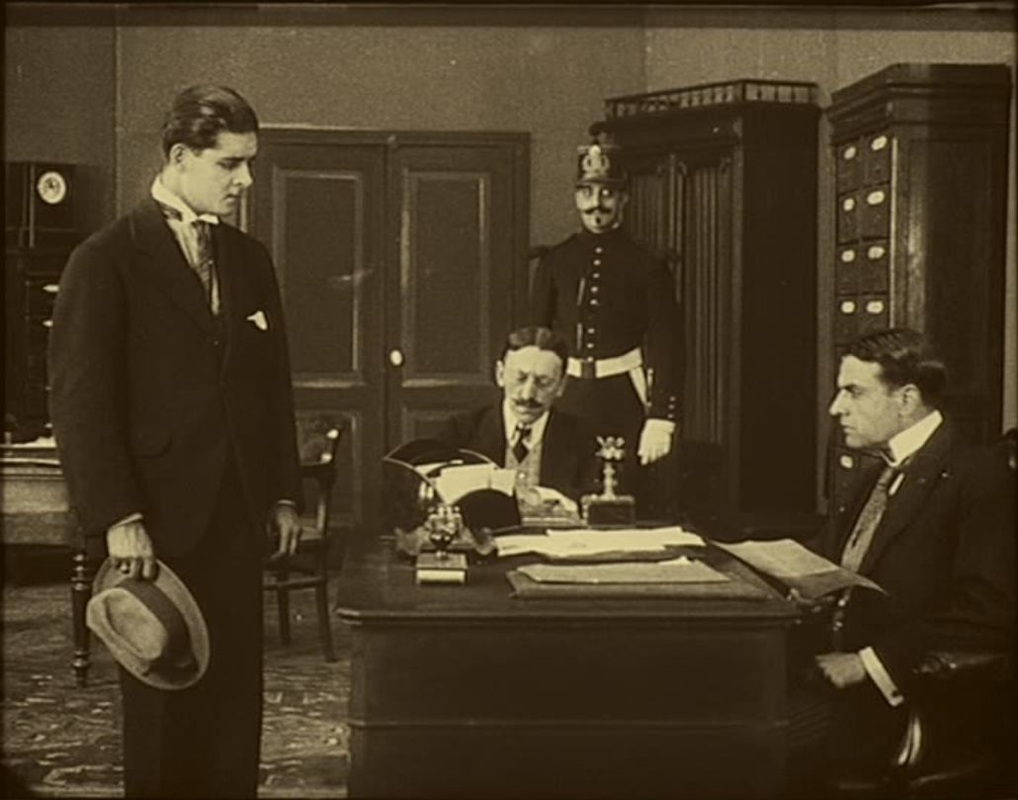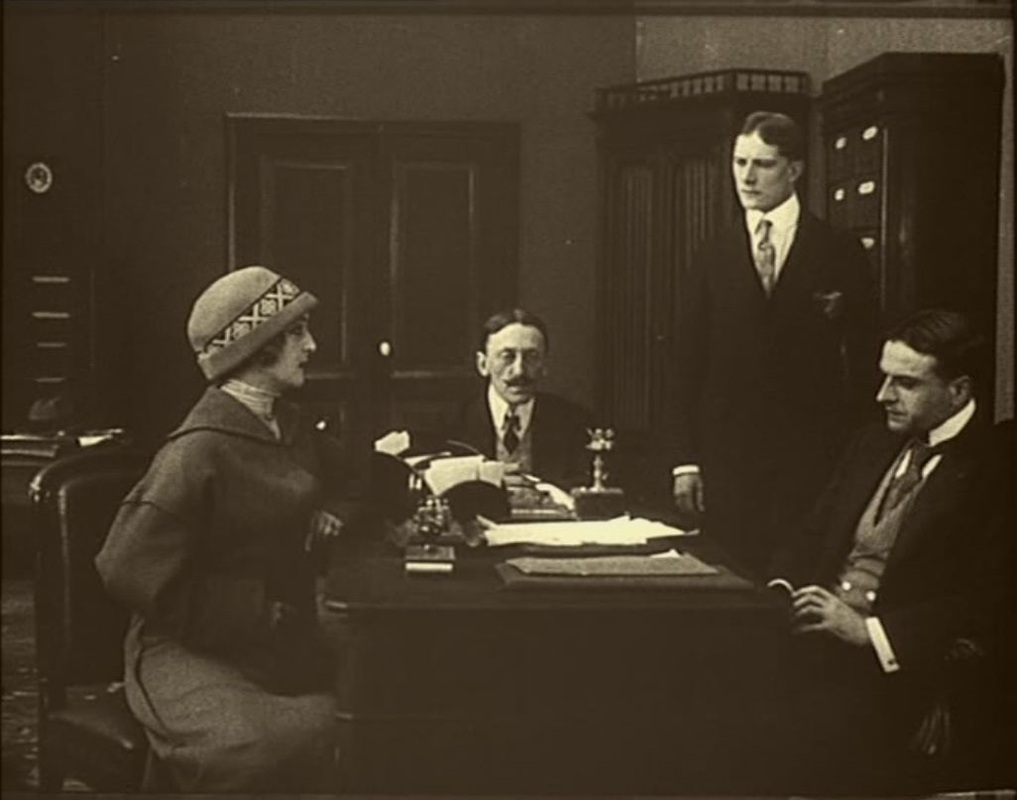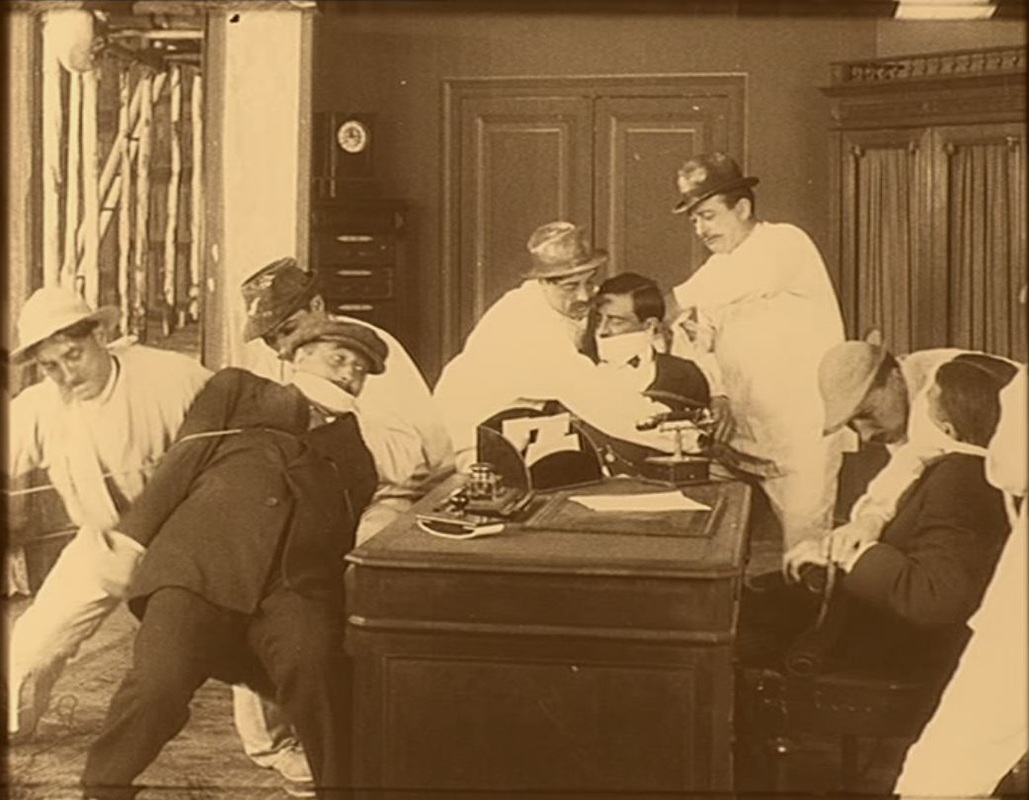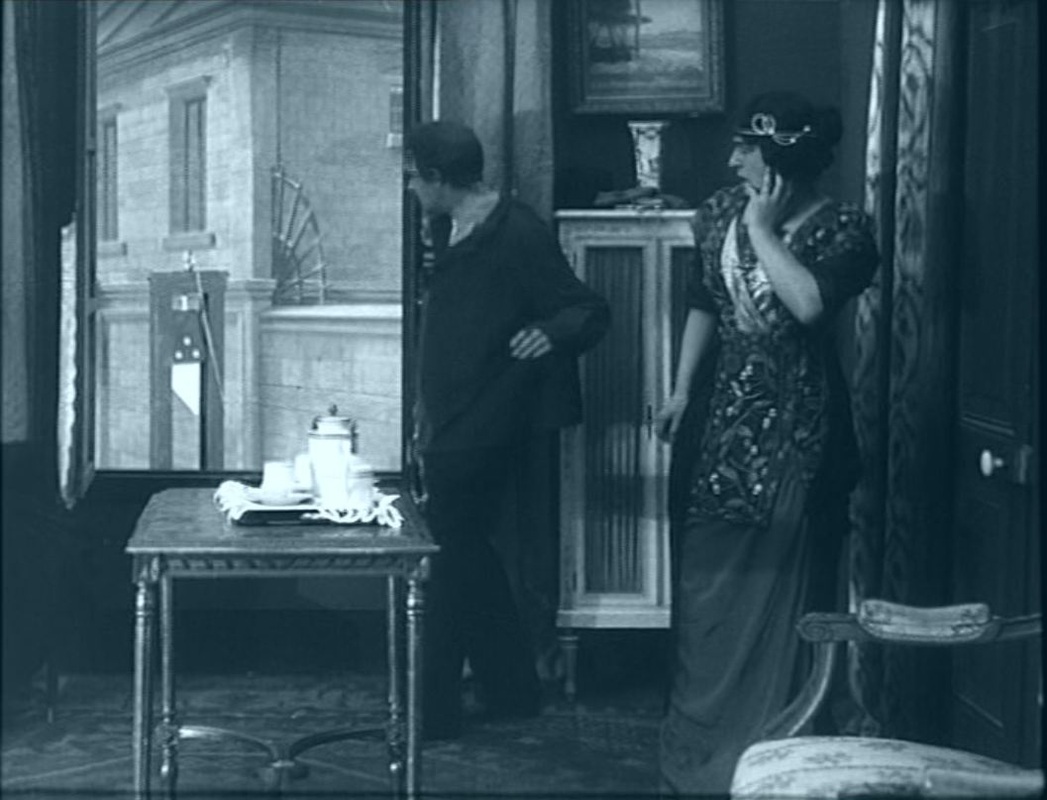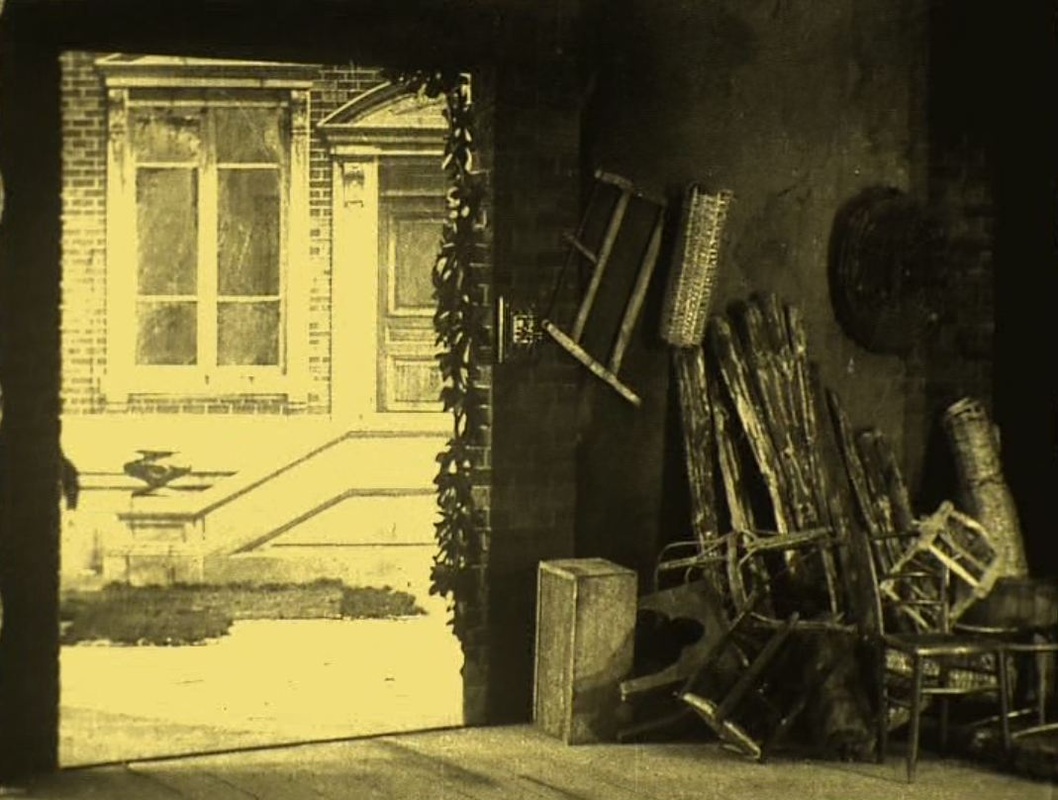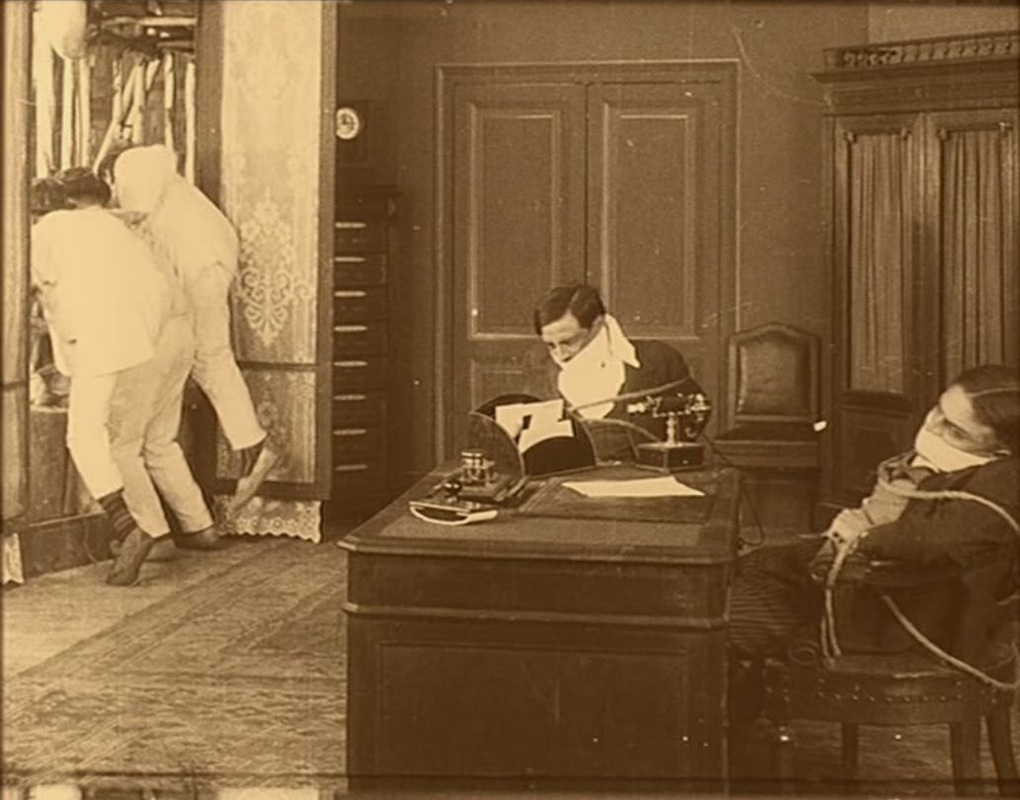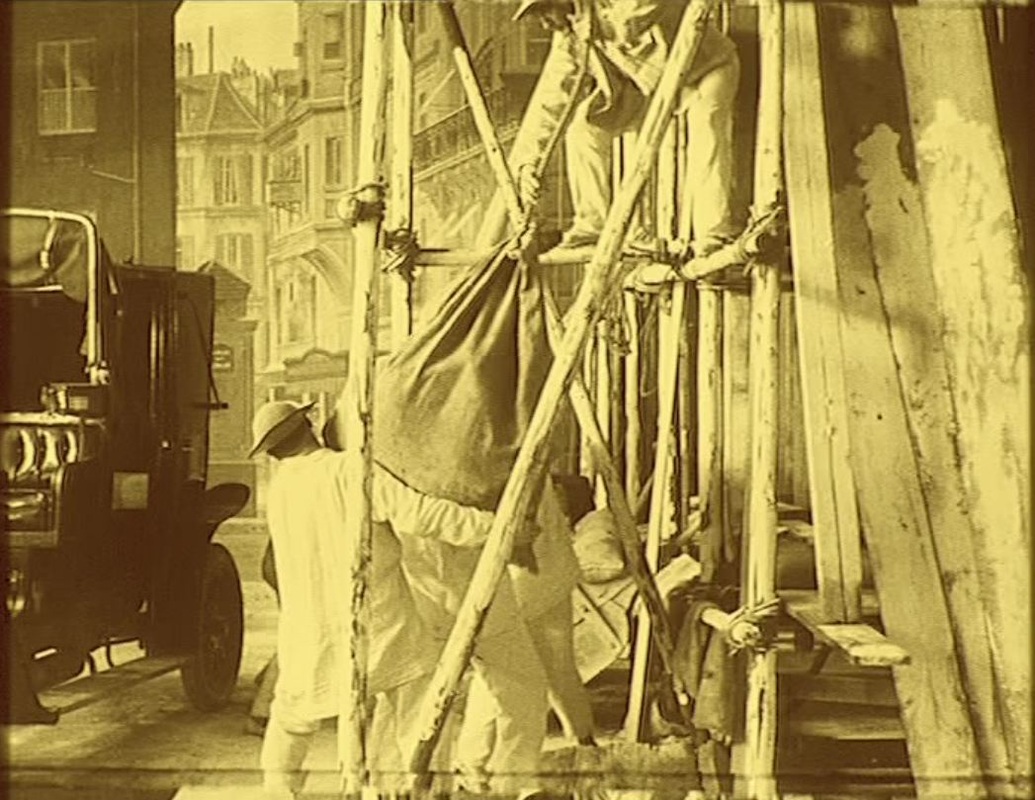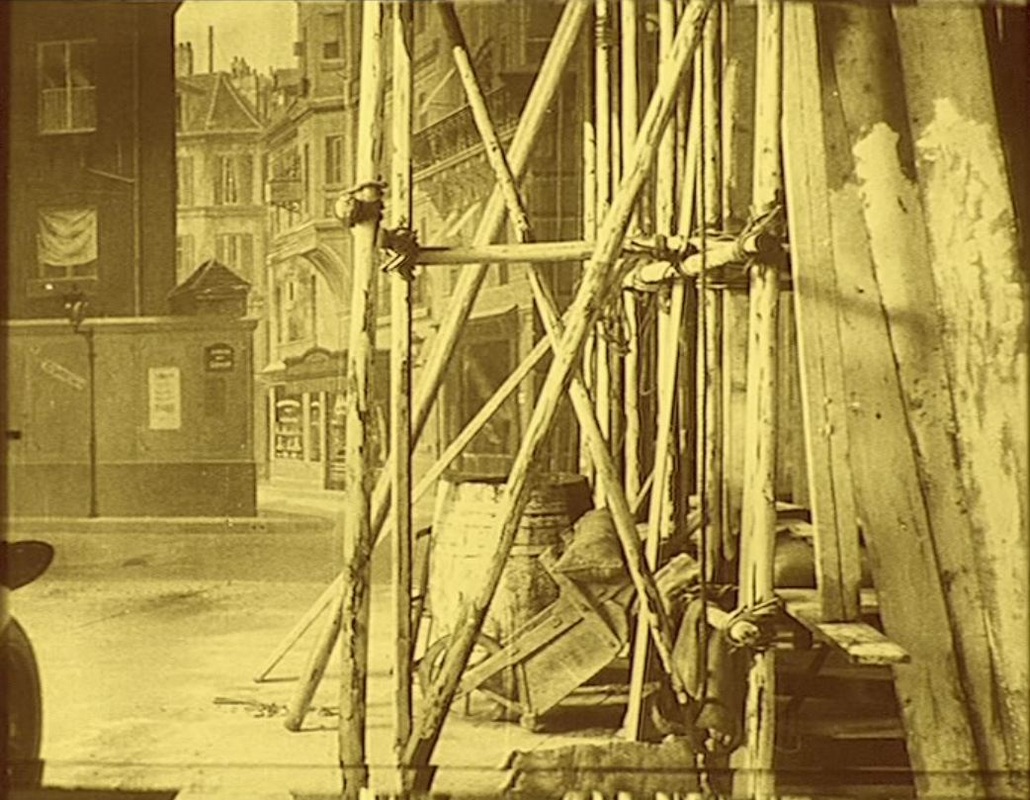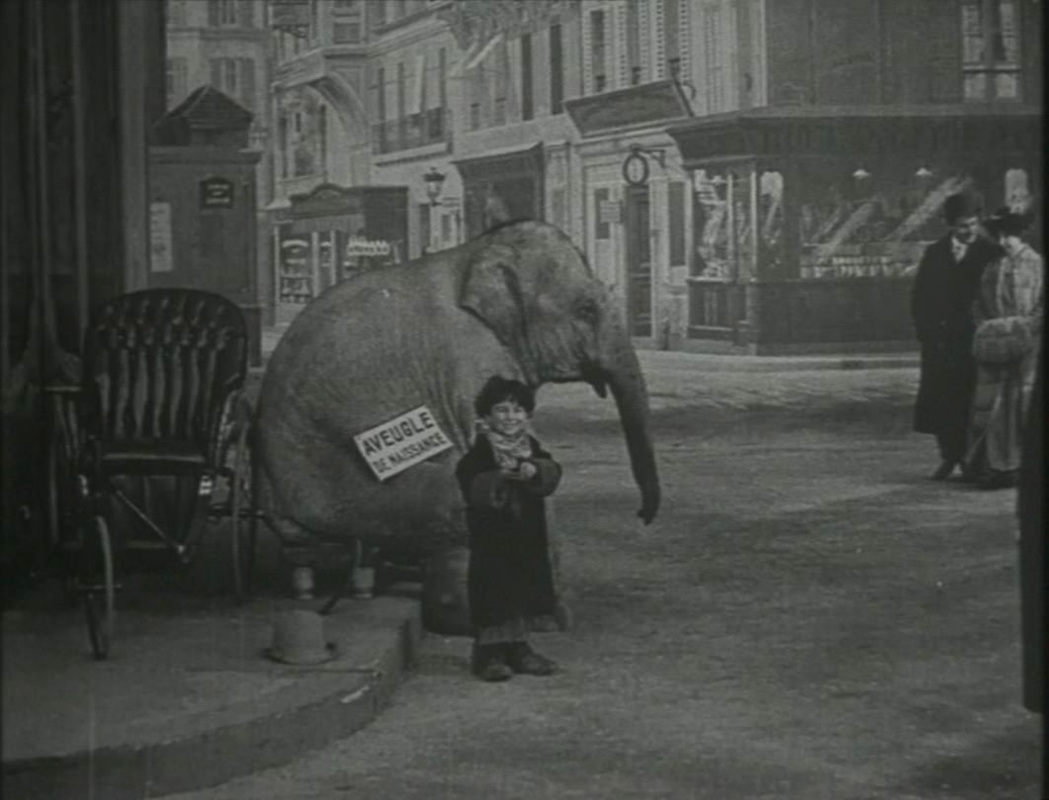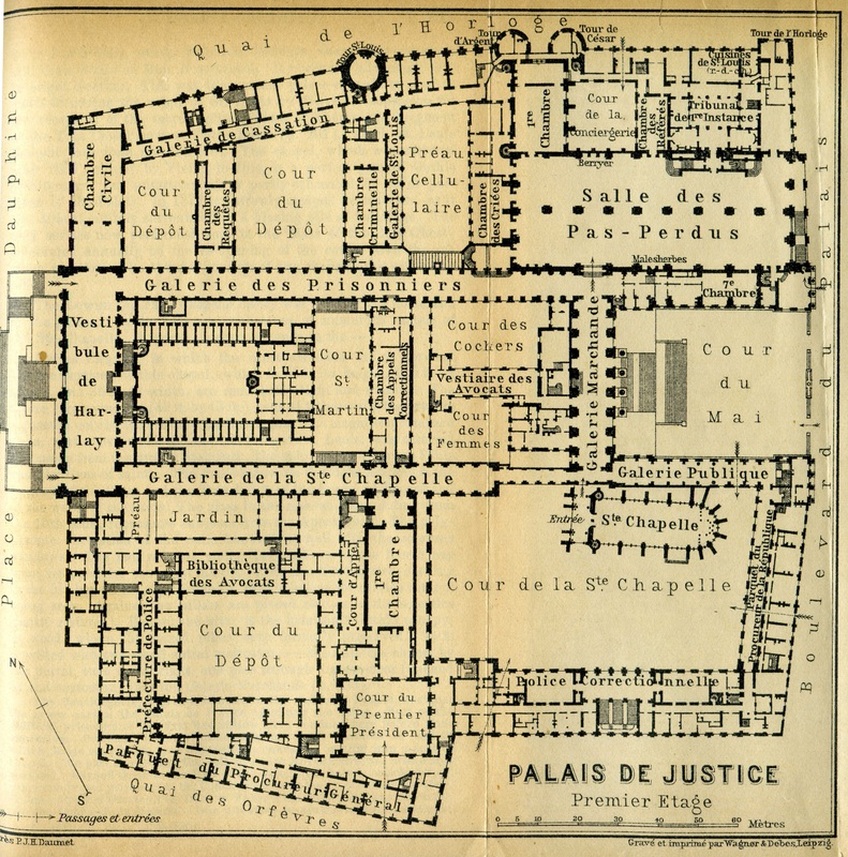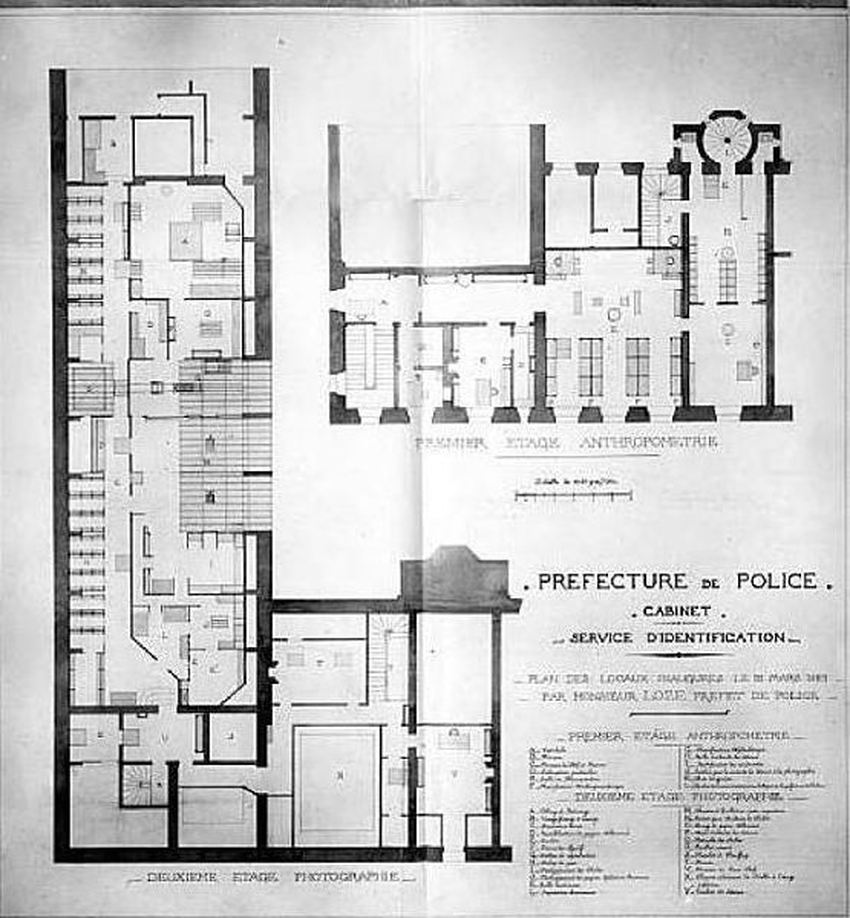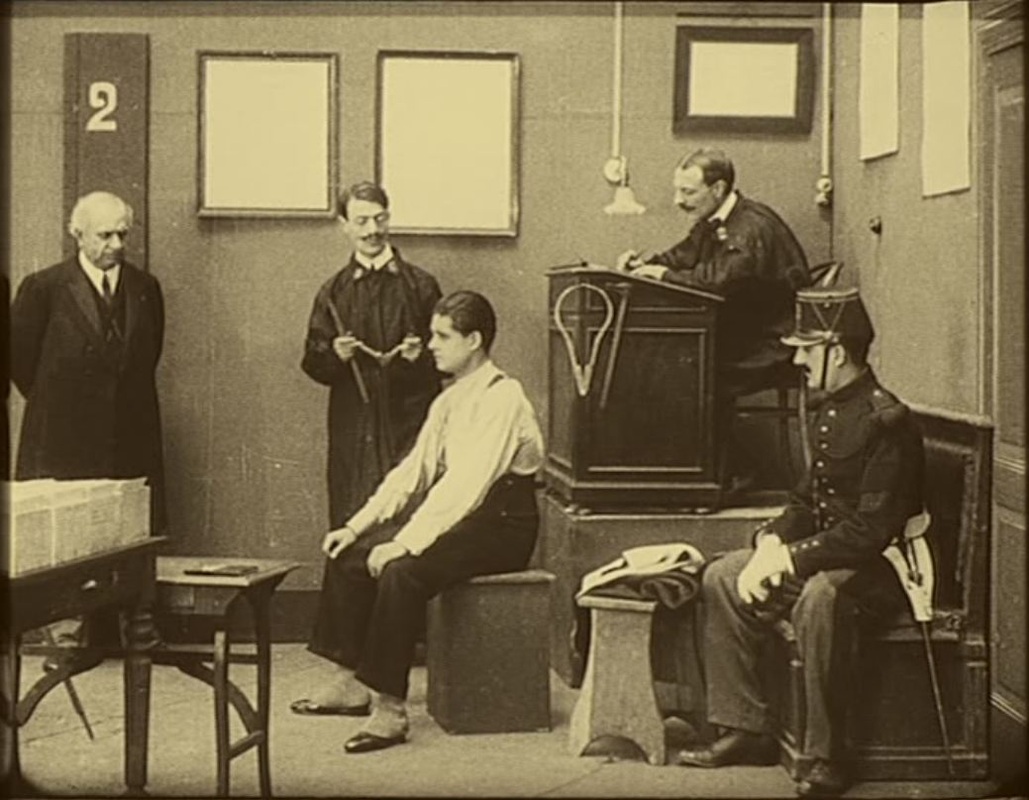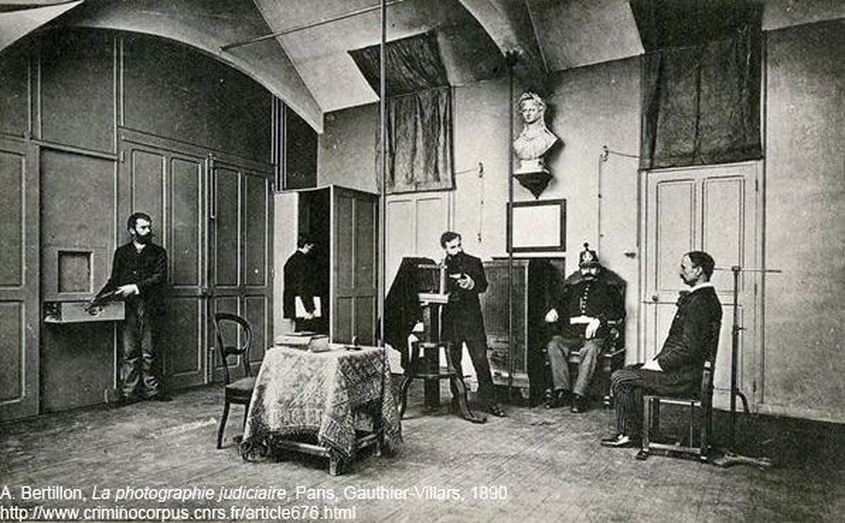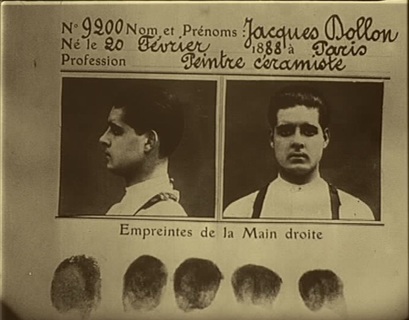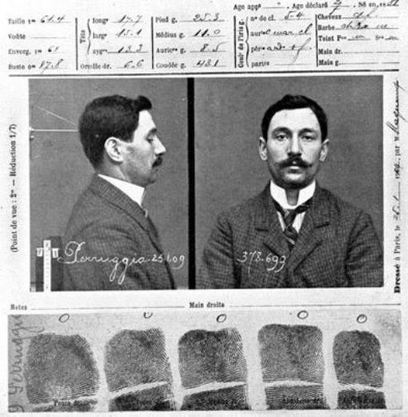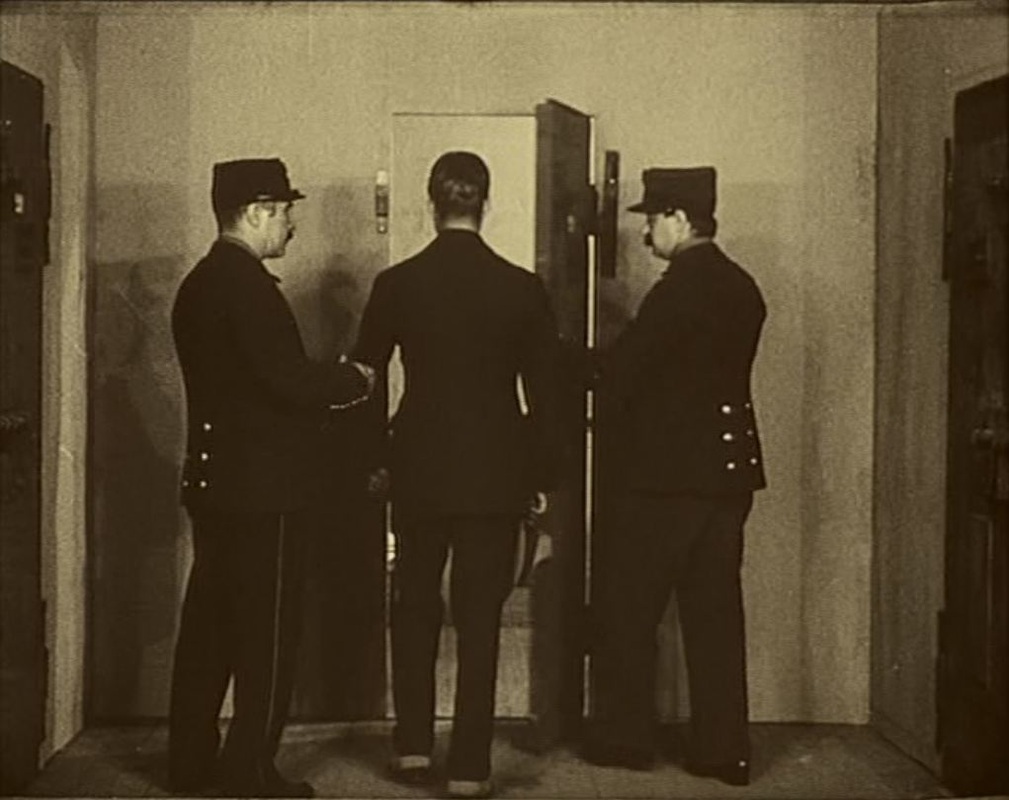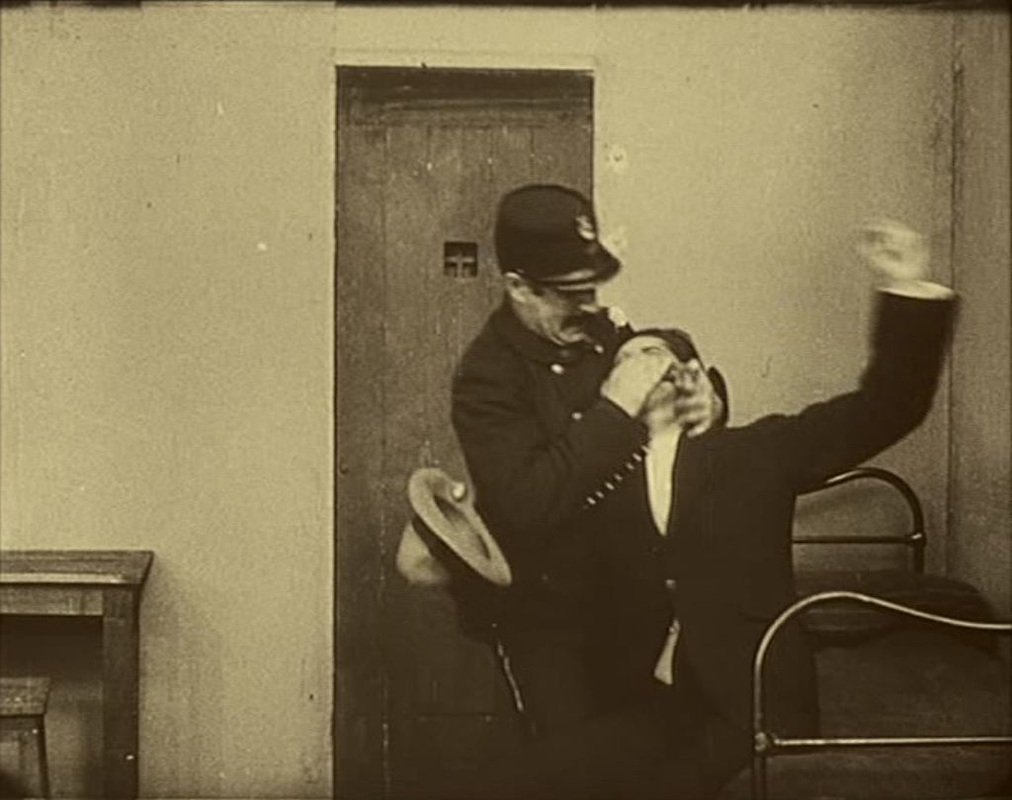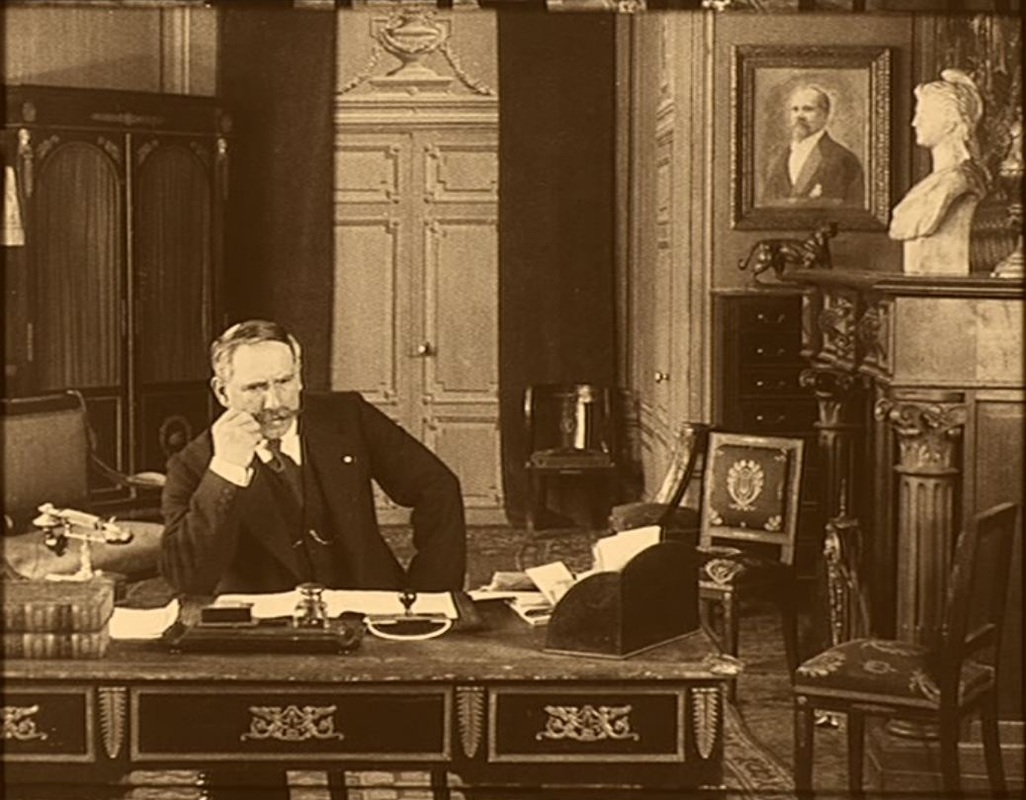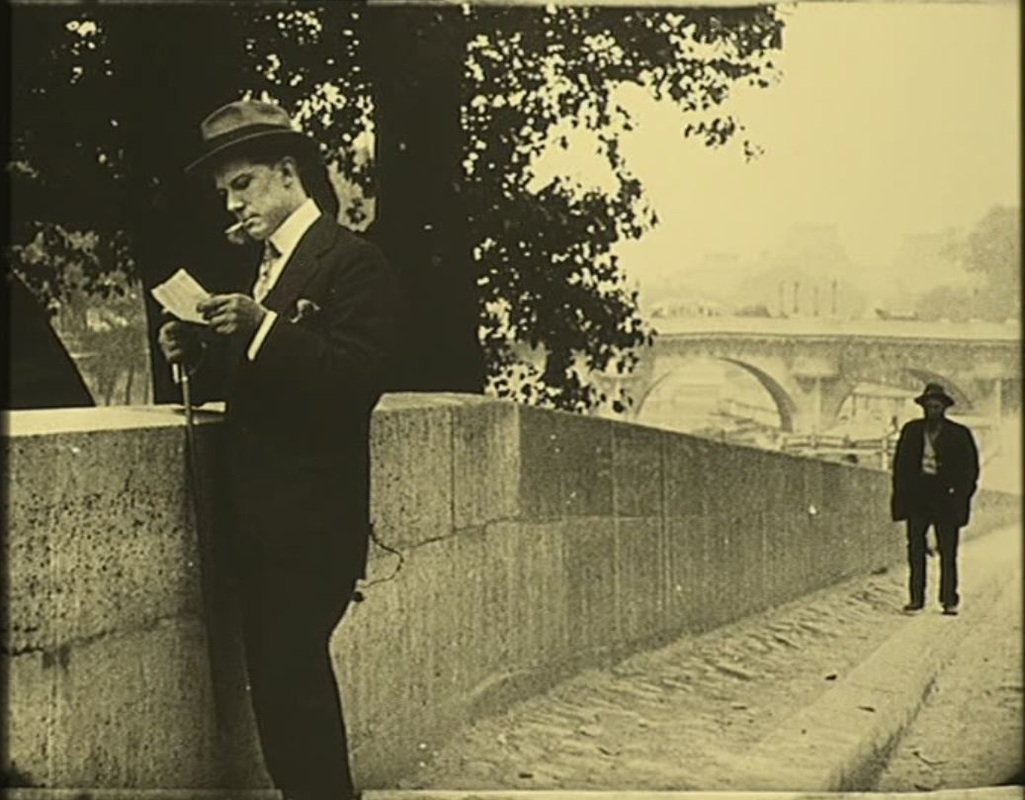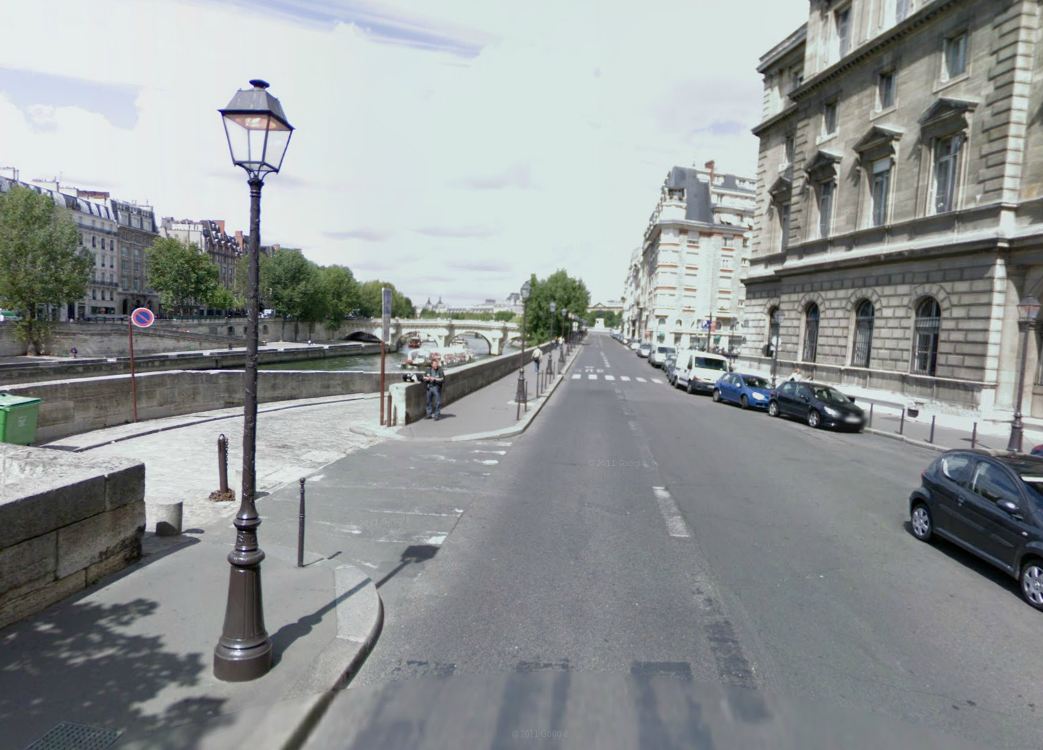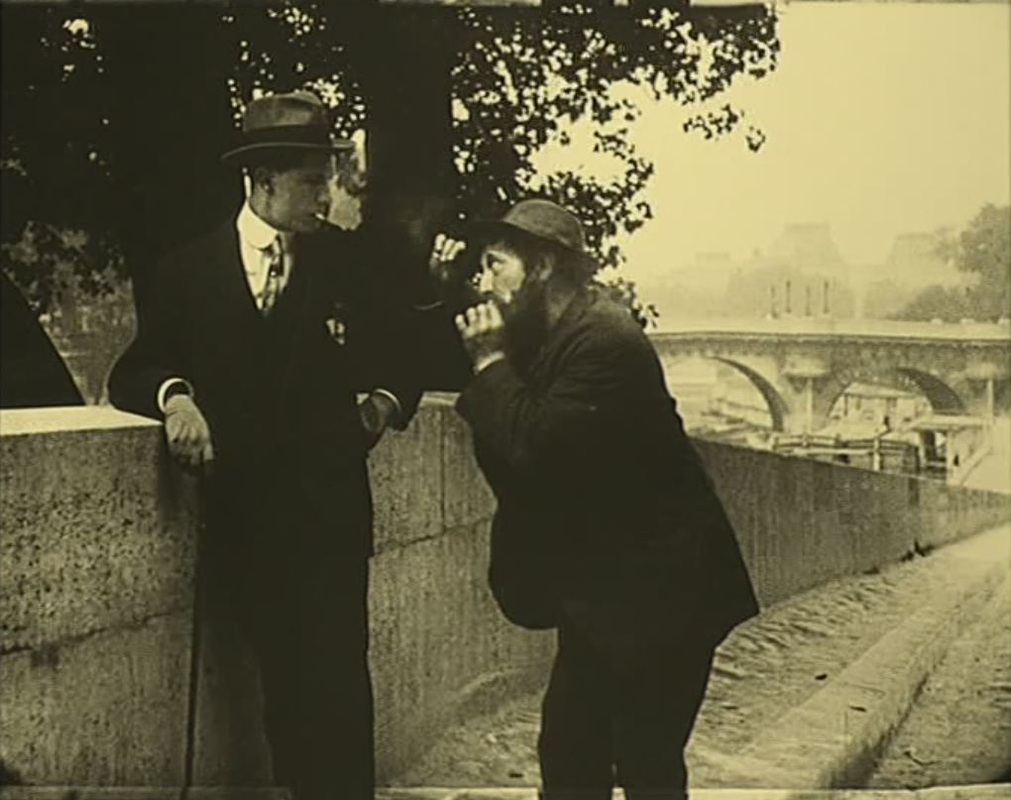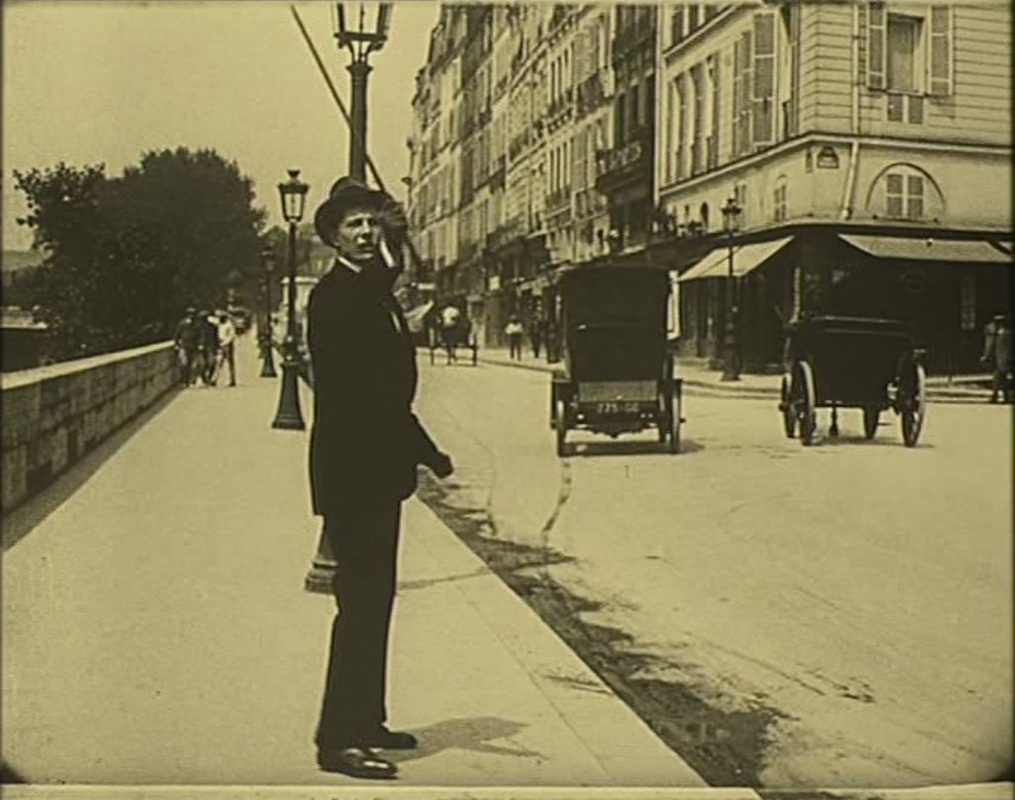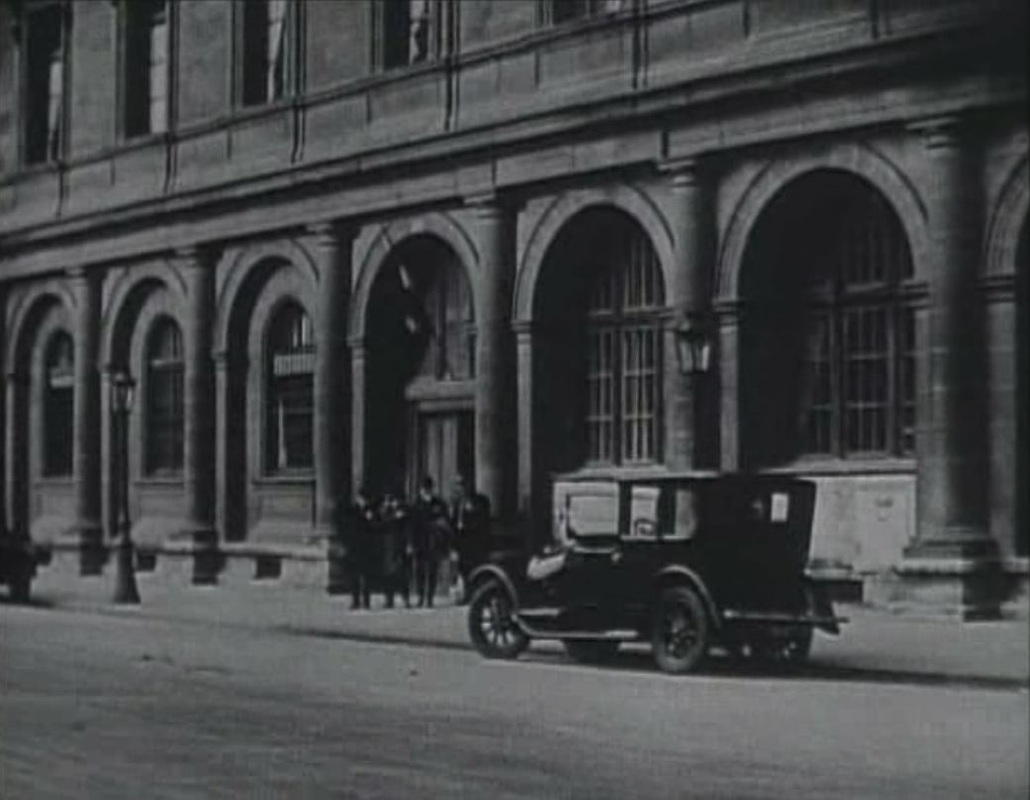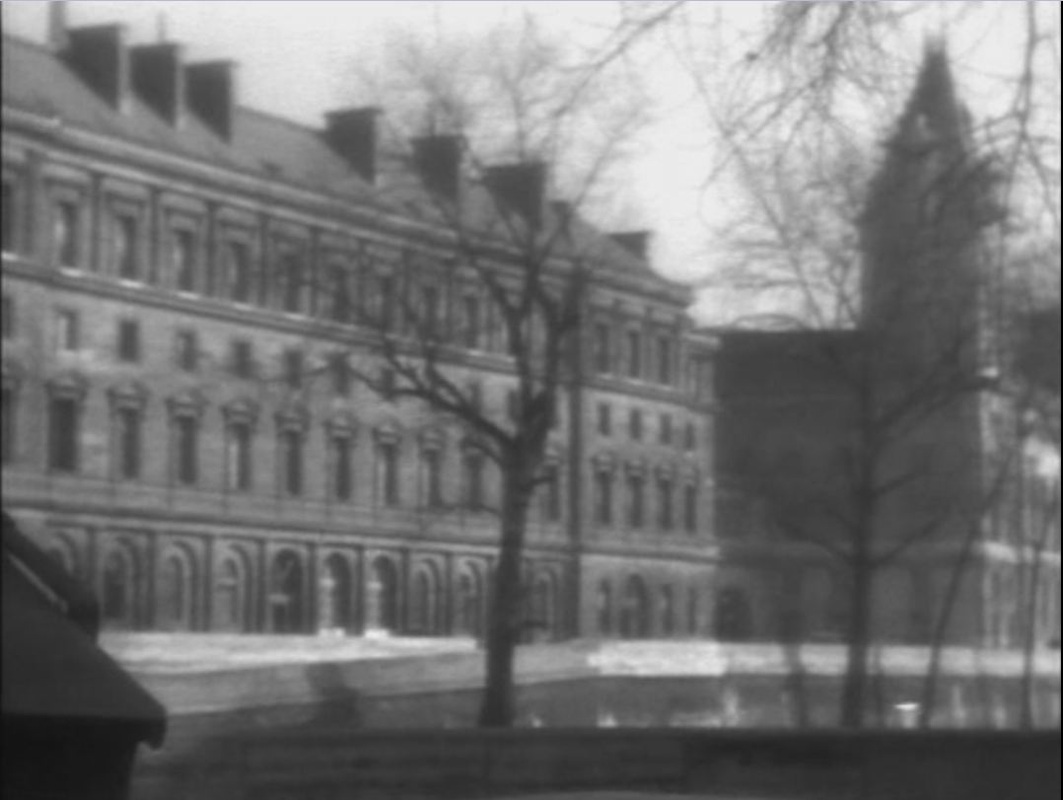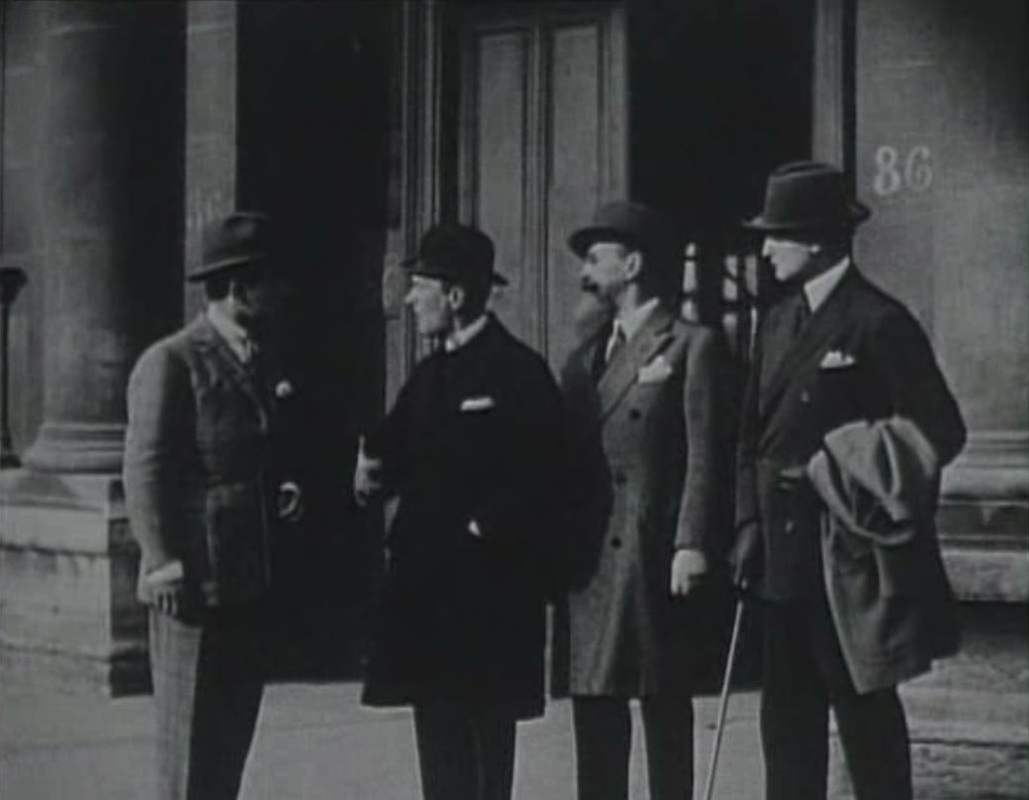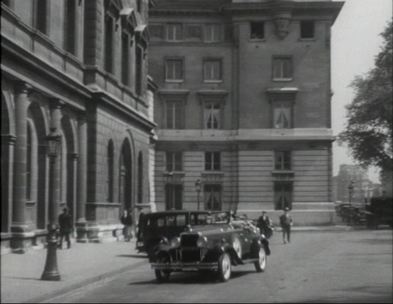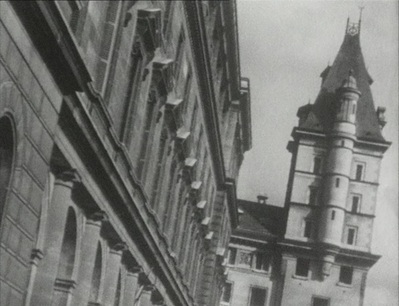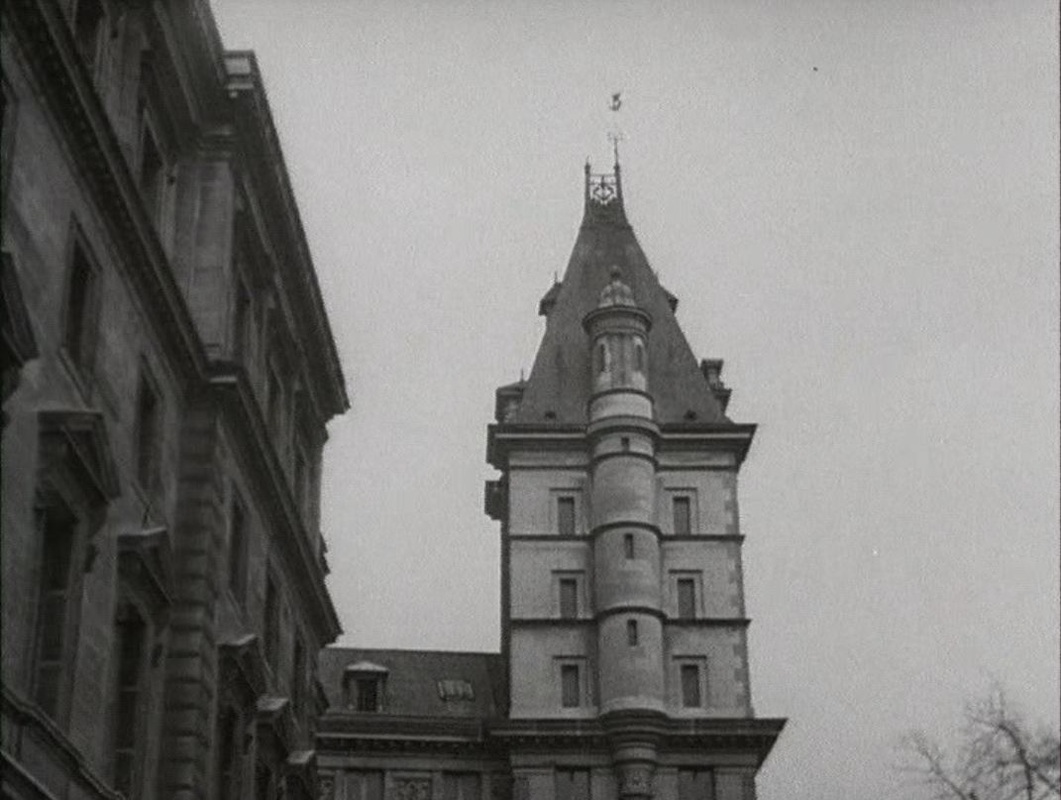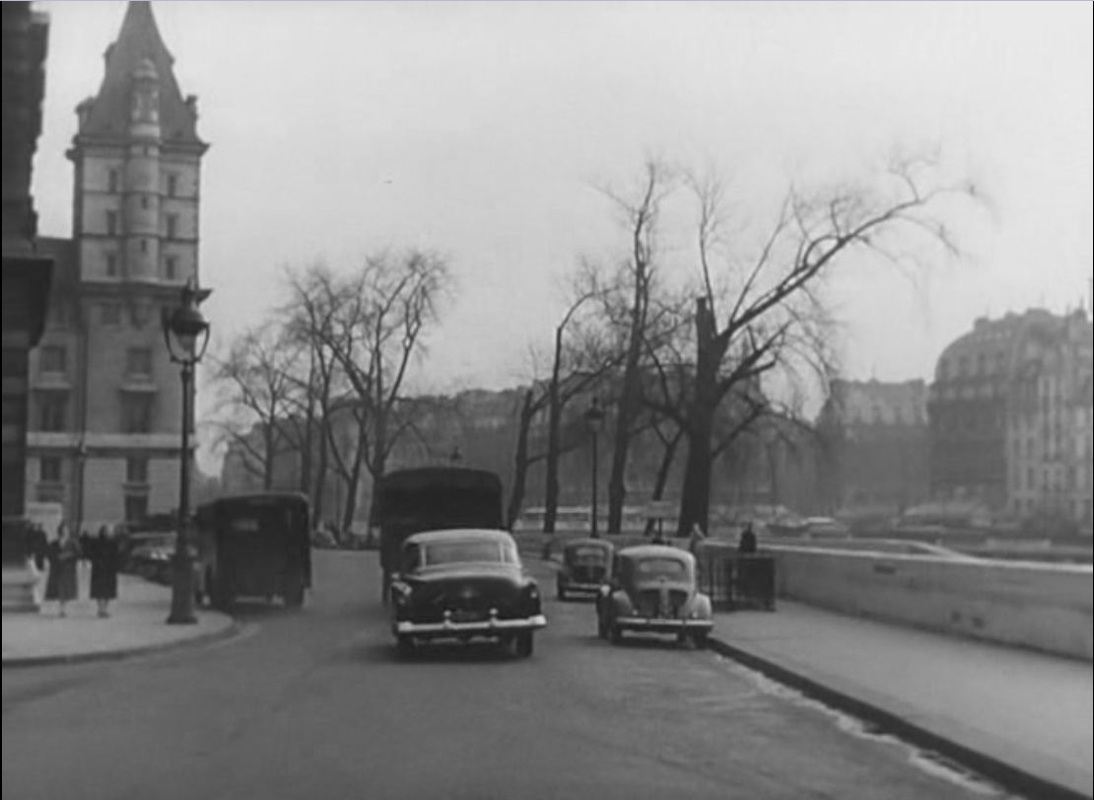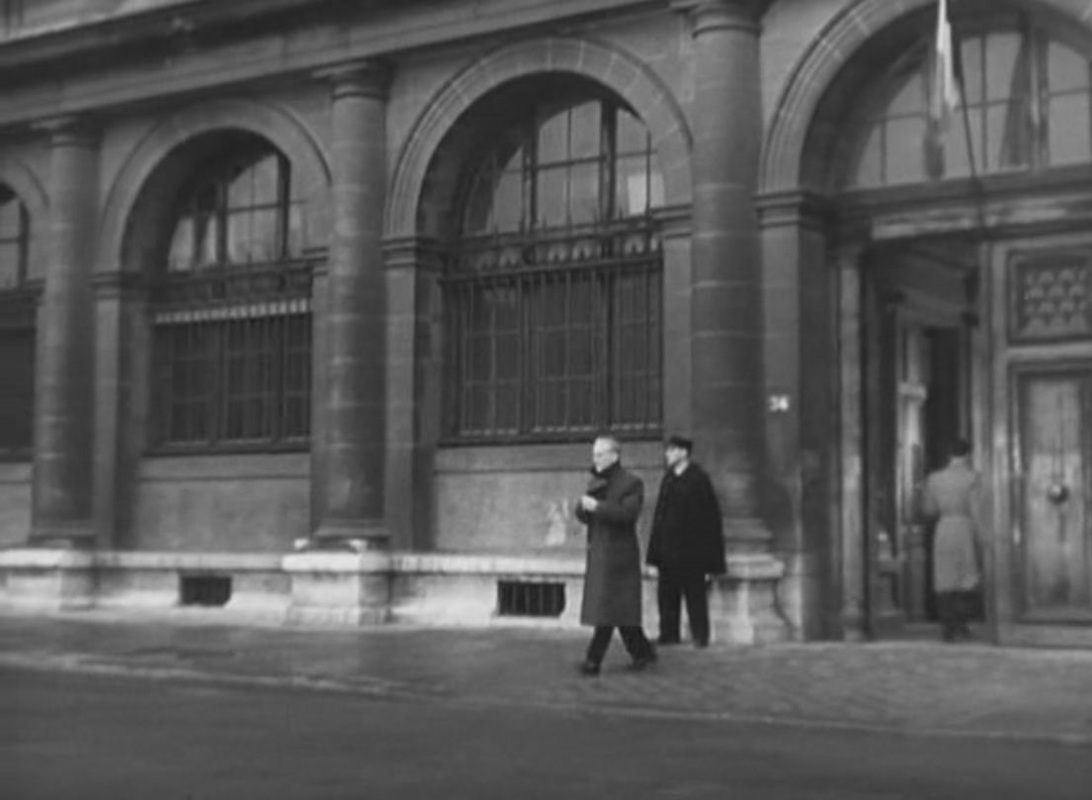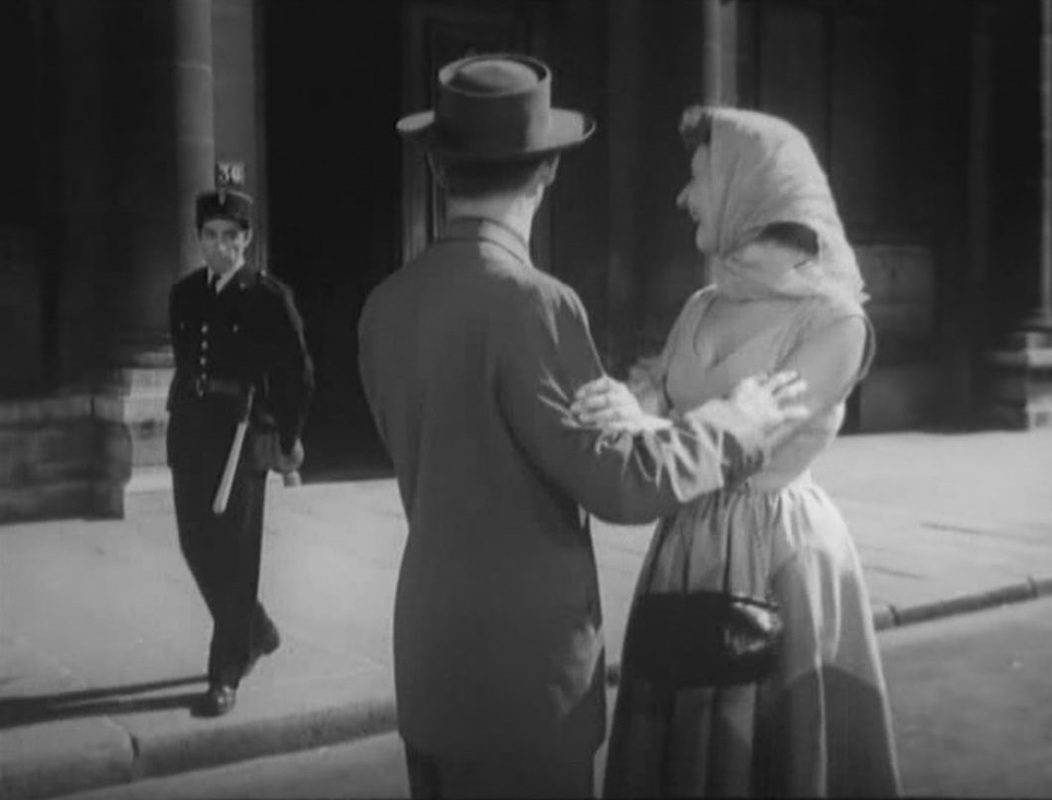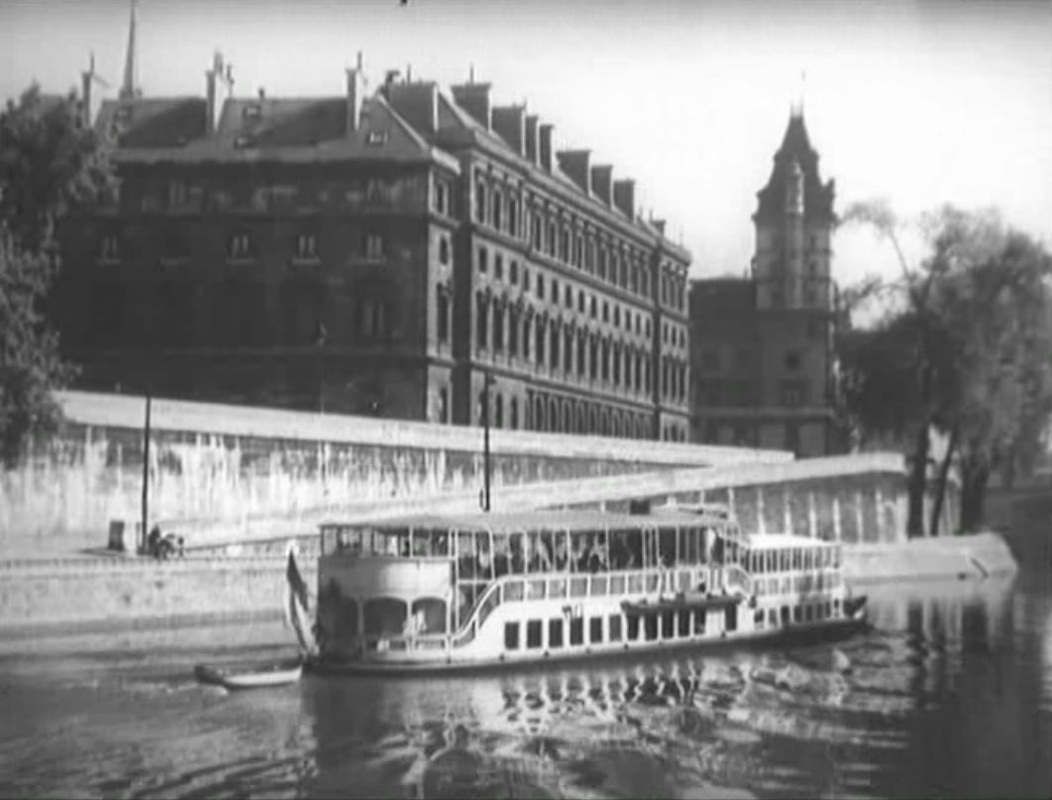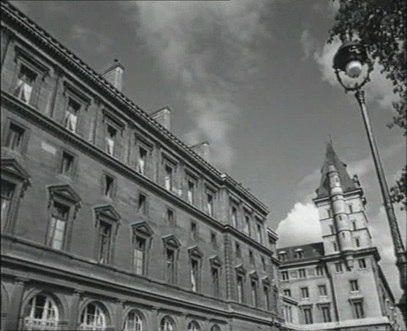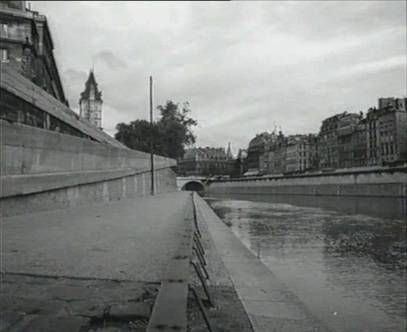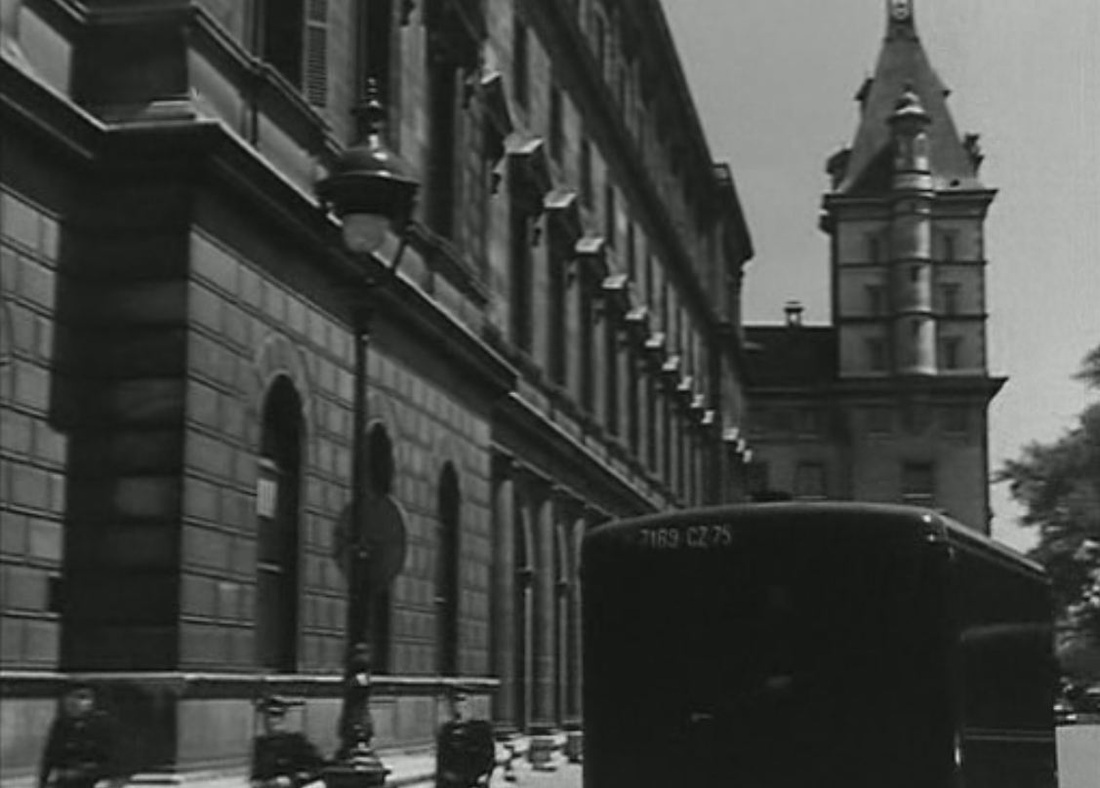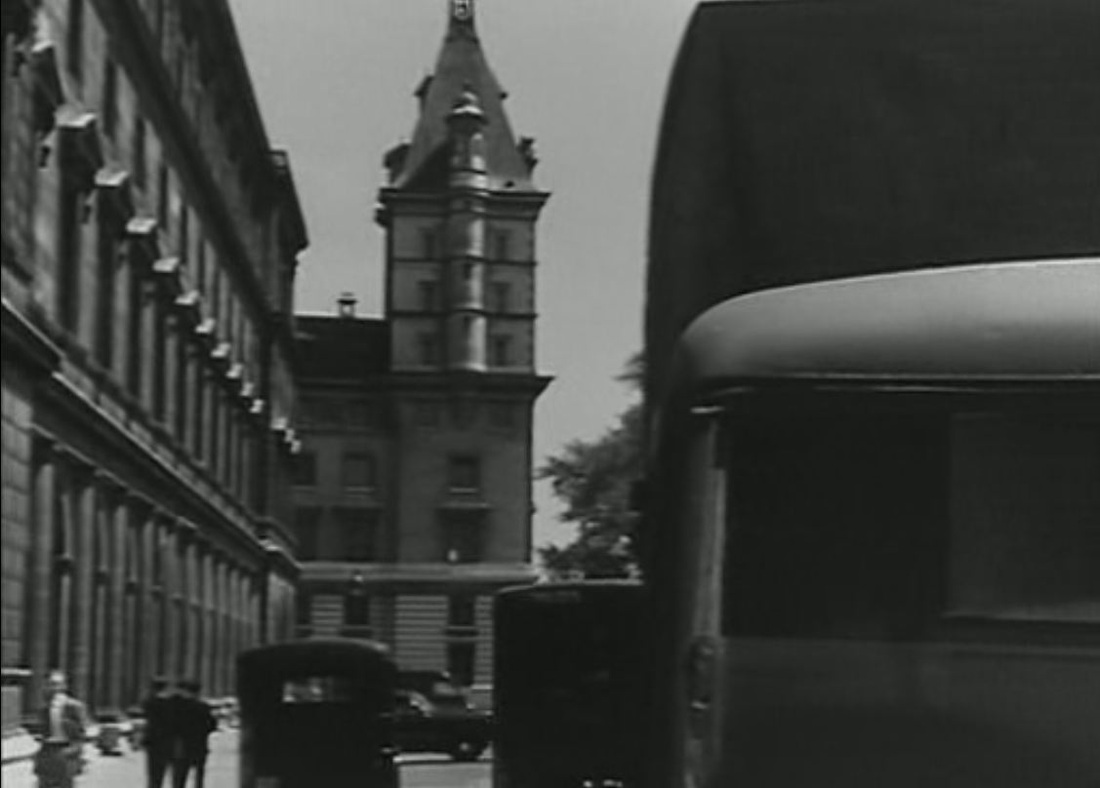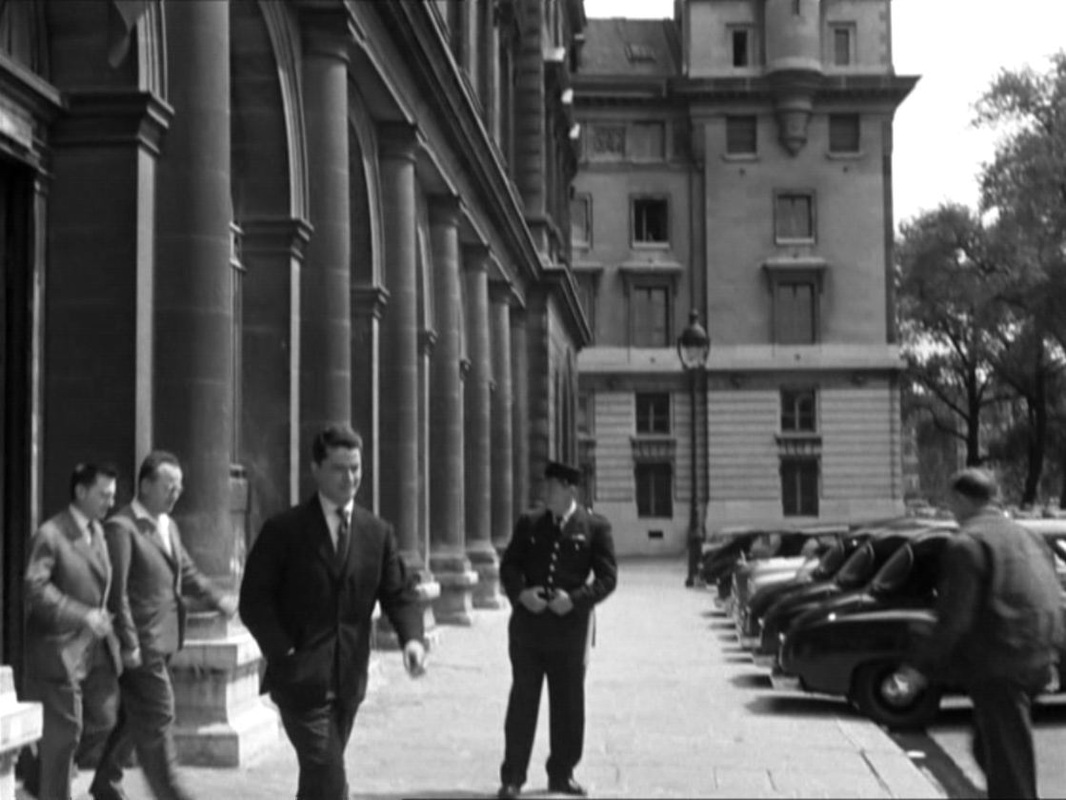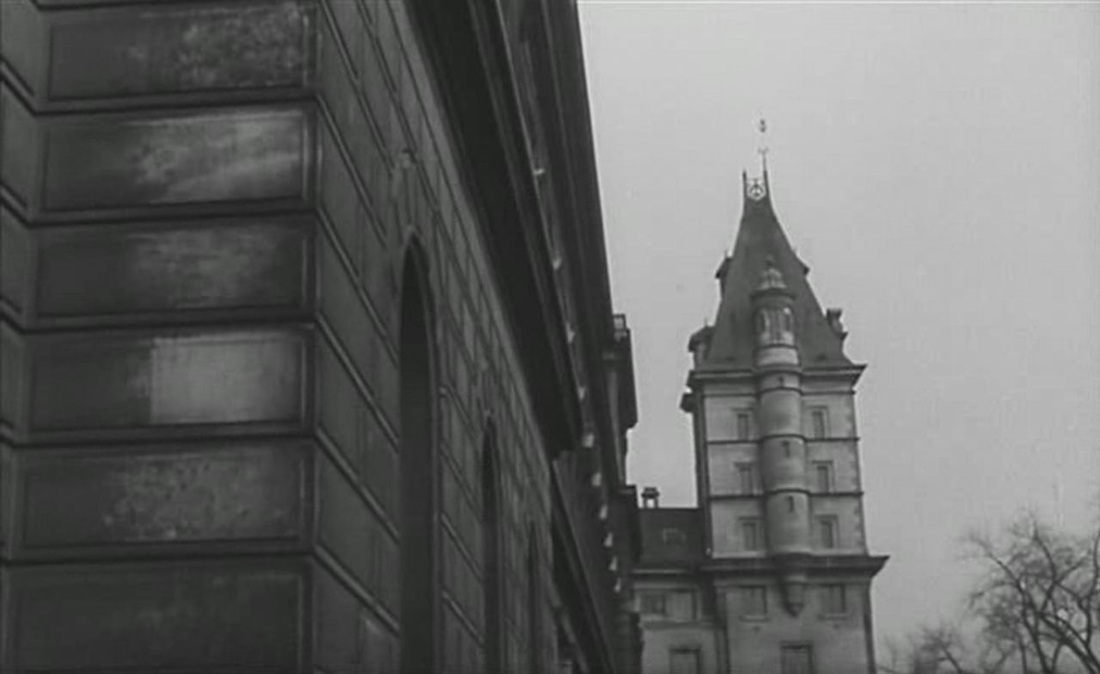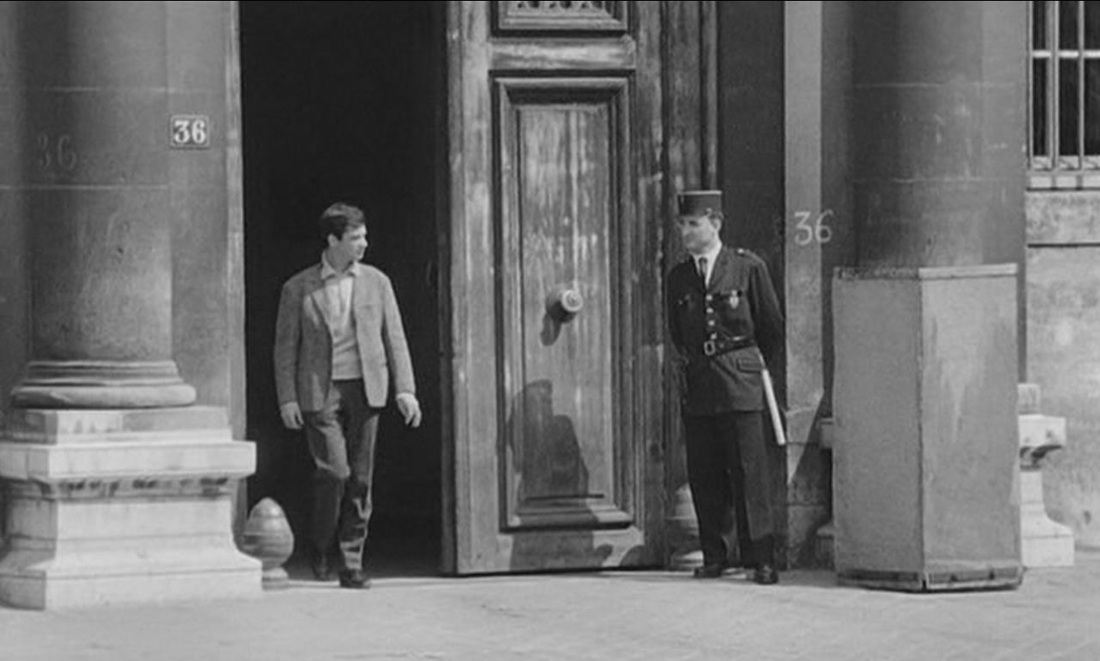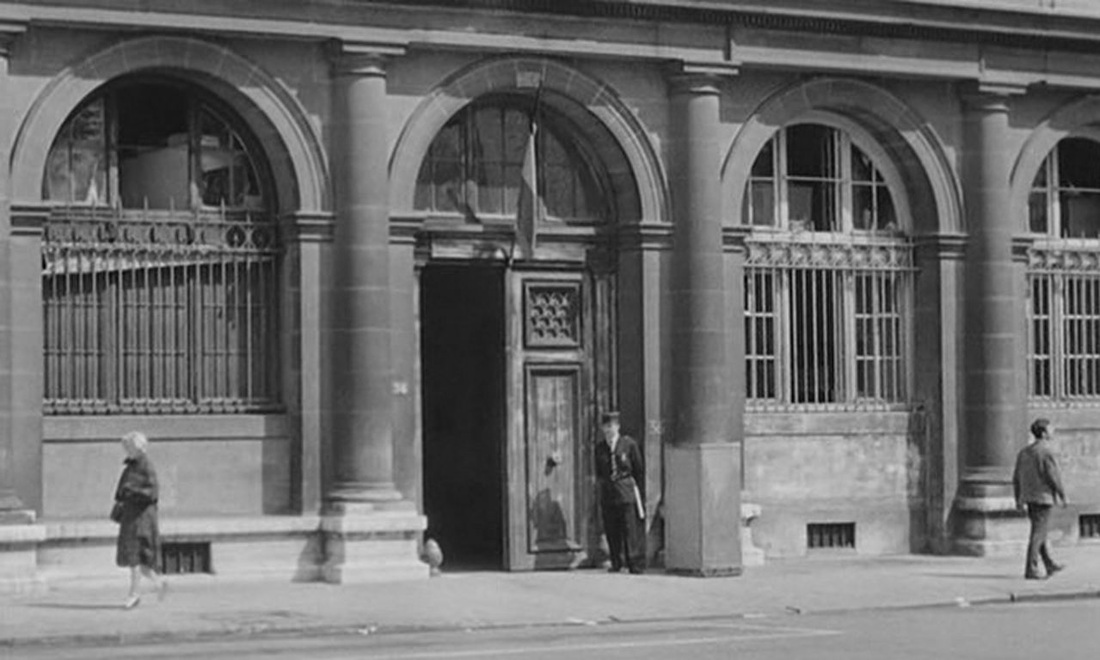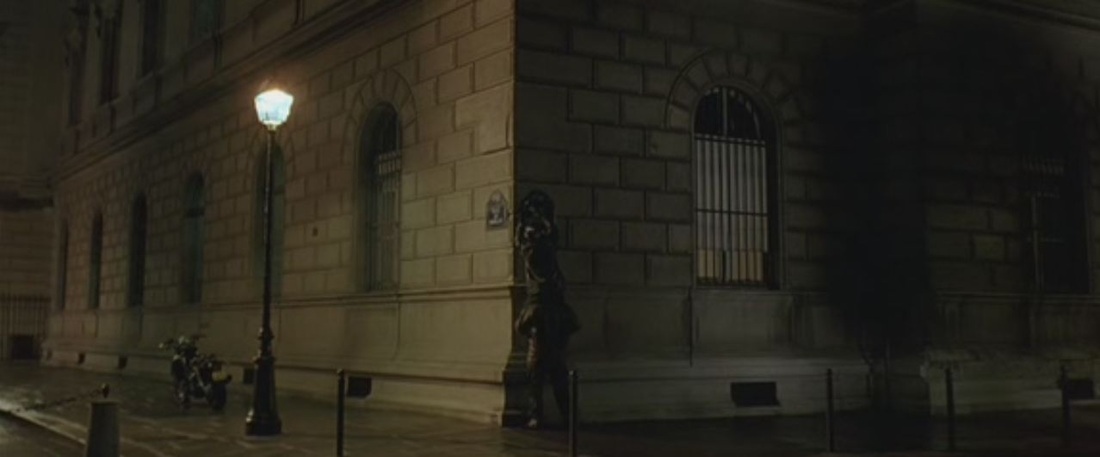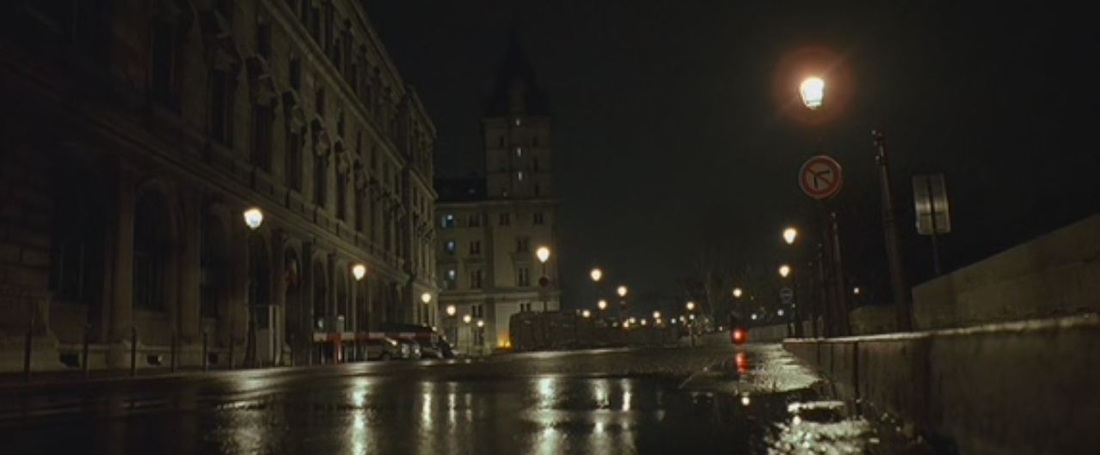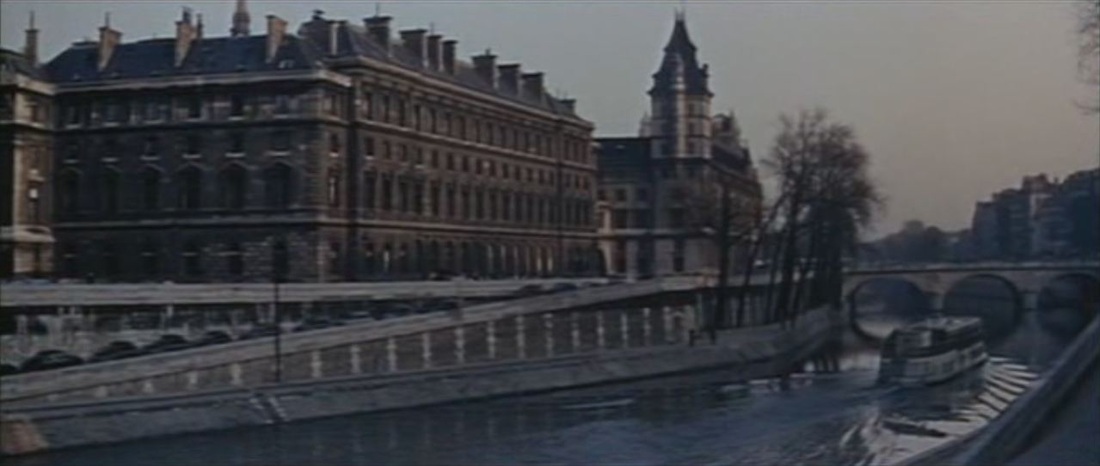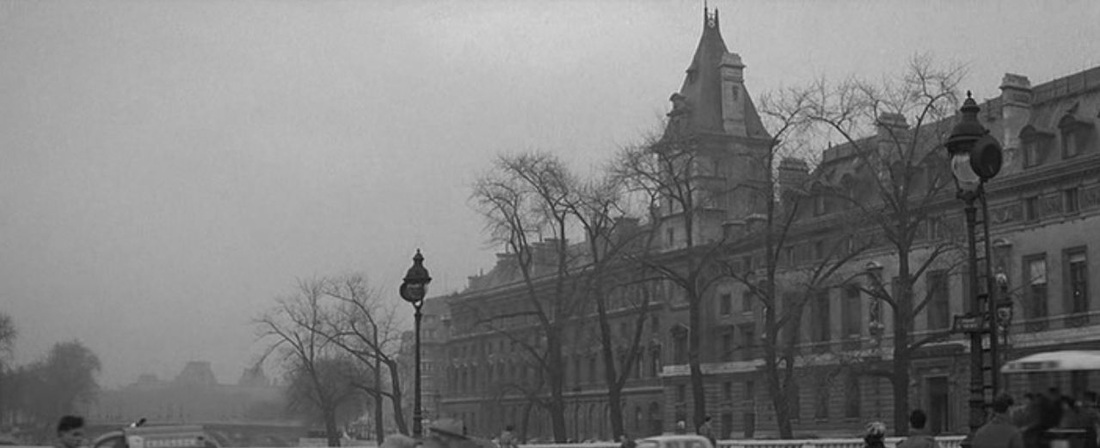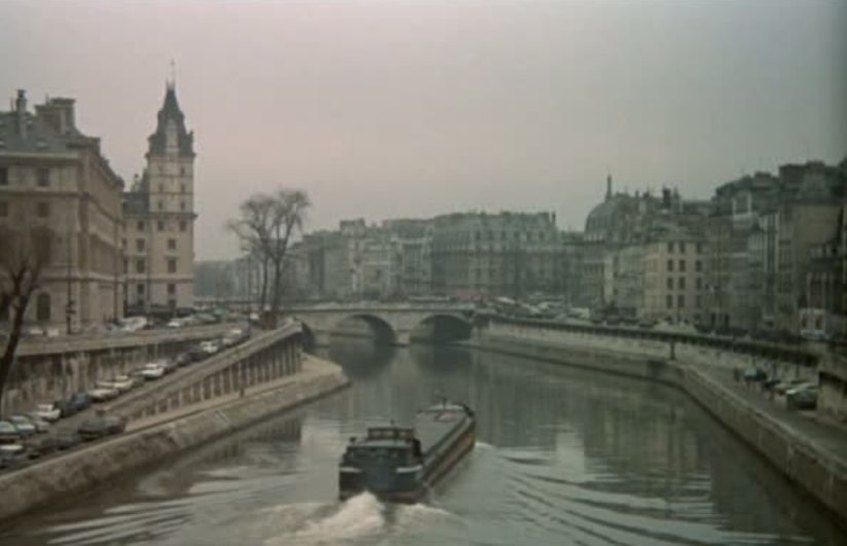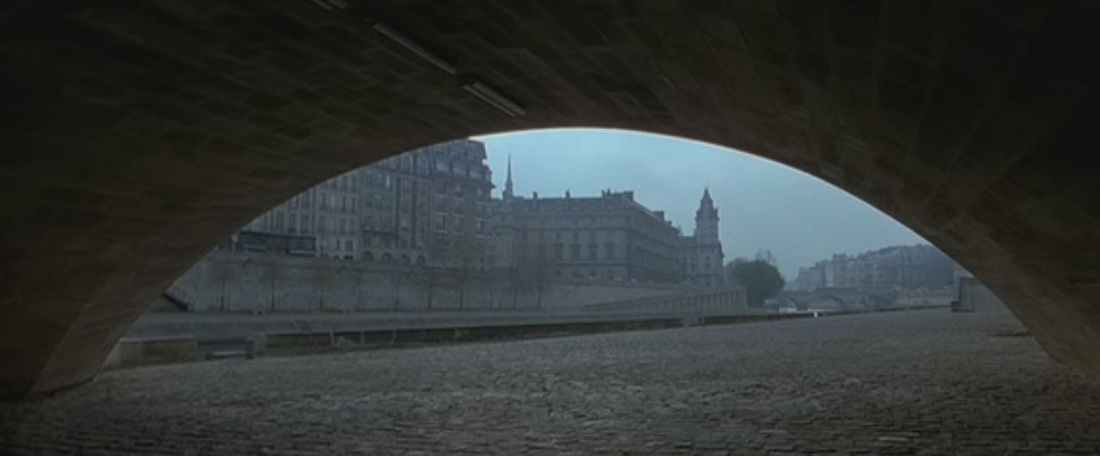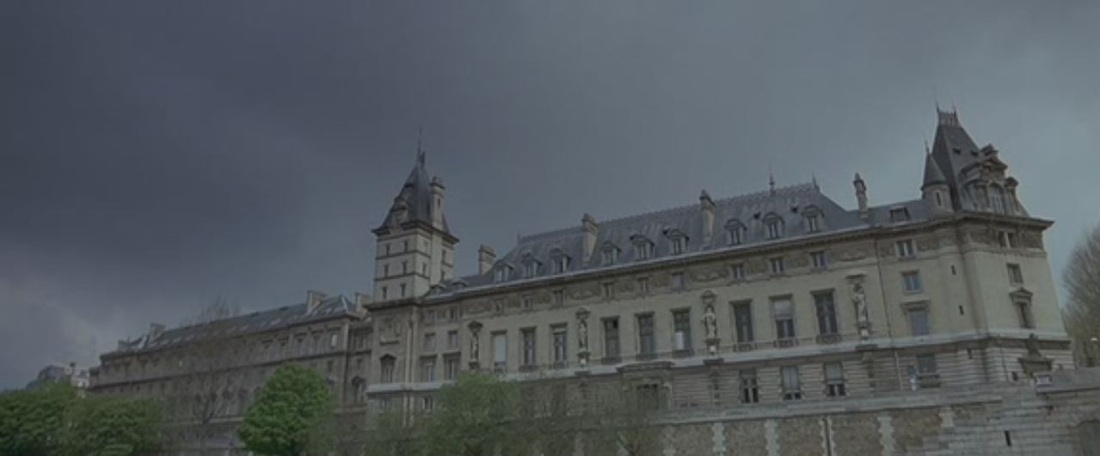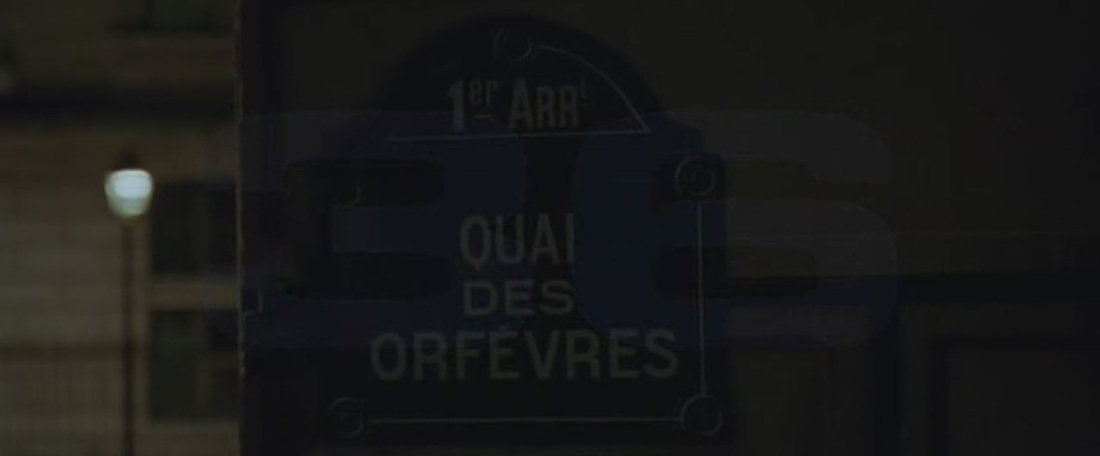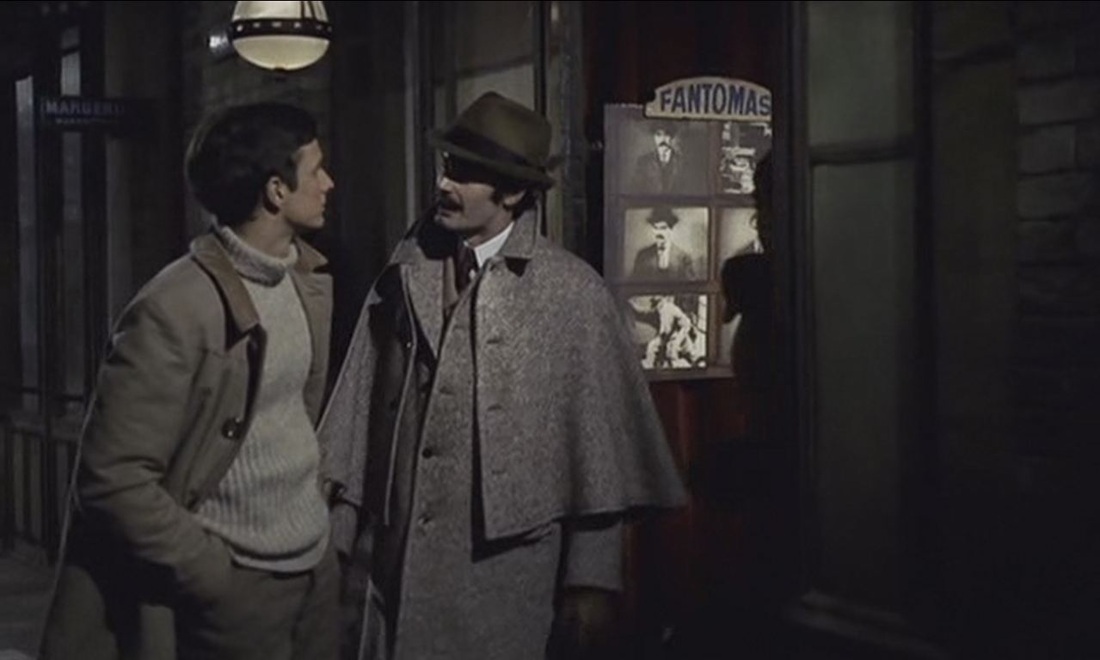Fantômas Over Paris
episode 3: Le Mort qui tue
(First screened in November 1913.)
The third film in Feuillade's Fantômas cycle has as great a variety of locations as the previous two, but confines itself entirely to Paris, not even venturing into the suburbs:
|
Four degrees of specificity inform the identifications on the map above:
|
Alongside these are the non-specific, generic places, or non-places, that serve a narrative function but have no place on a map. A good example is the room in which the film opens:
The opening prologue shows Fandor in a hospital room, recovering from the explosion in which Juve was killed, apparently. The scene is not derived from the novel, and stands as an emblematic non-place before the film embarks on its itinerary around Paris.
1/ in the studio
Five other places are shown solely as studio-constructed interiors, and three more have a brief exterior attached.
The convent in which Elisabeth Dollon finds refuge after Fantômas's failed murder attempt is, like the hospital, a generic space, appearing in a single, sixty-second shot:
The convent in which Elisabeth Dollon finds refuge after Fantômas's failed murder attempt is, like the hospital, a generic space, appearing in a single, sixty-second shot:
From the novel the film has suppressed not only the address of the convent (rue de la Glacière, 13e) but also the nuns' order (Augustinians), the convent's history since the Revolution, and a great deal of immediate plot business (including romance between Fandor and Elisabeth).
Two of the other interior-only locations are callbacks to earlier films, Juve's apartment and Princesse Danidoff's hotel suite:
Two of the other interior-only locations are callbacks to earlier films, Juve's apartment and Princesse Danidoff's hotel suite:
Whereas Juve's apartment remains unchanged across the three films in which it appears, Princesse Danidoff's hotel suite has had a make-over. Perhaps she has changed residence, though according to the novel she is still at a hotel near l'Etoile rather than in an apartment of her own (she prefers the American way of living). The film of Le Mort qui tue is uninterested in these details, and simply shows us the Princesse in a comfortable interior, address unspecified.
Two new interiors are shown without exteriors: an artist's studio and a banker's office. Jacques Dollon's Montmartre studio (rue Norvins) is an unusually large and detailed space, requiring a slow, back-and-forth panning shot to reveal it in full:
Two new interiors are shown without exteriors: an artist's studio and a banker's office. Jacques Dollon's Montmartre studio (rue Norvins) is an unusually large and detailed space, requiring a slow, back-and-forth panning shot to reveal it in full:
When the police arrive, the camera doesn't move but it has been repositioned slightly to the right, taking in the space at a different angle. This is the same angle used for a later sequence, when Dollon's sister comes to the studio, though the camera is a little further back:
As with most of Feuillade's spaces, the room's depth is fully exploited, but in this case it is not just the movement forward of bodies from the back that draws the eye. On the first occasion it is shown, before the assault on Dollon, we are given almost twenty seconds to contemplate the artist at his desk, time enough also to examine the objects around him, from the pots in the left middle ground to the various sculpted heads in relief, the paintings and the full-size human figure right at the back. The window above the seascape also calls for attention, but this roving scrutiny is slightly disquietened, just as the shot begins, by a slight movement of the curtains to the right. A dark space slowly opens up, an unreadable void in this clutter of objets d'art:
From that void emerges a terrible, featureless human figure, reducing every other object in the room to the level of mere curio:
This is Fantômas's first appearance in Le Mort qui tue. He disappears at the end of the film from the office of the banker Nanteuil (Nanteuil is Fantômas). This location is given no address and no exterior view, though the novel situates it on the rue de Clichy, 9e. It appears in two sequences, with only very slight adjustment in the framing from one to the other:
On the second occasion, the last sequence of the film, the space is examined more closely, with a first movement in towards the left corner, then a close up of the panelling by the door:
The last shot reveals that the décor was not as it seemed, as Fantômas escapes through the cncealed door behind him:
Three interior-centred places in the film are given brief exterior shots, filling out the sense of location without necessarily situating it exactly. The simplest is the empty apartment to which first Thomery is brought (to be murdered) and then - in a basket - Fandor:
The address is given as the rue Lecourbe, 15e, and an exterior is shown:
The rue Lecourbe is a very long street, as you can see on the map above, and it is quite a distance from the Cité Elgé studios. It wouldn't have been necessary actually to go as far for this generic view of a cheap apartment building, when there were many buildings like this in Belleville. If they did go to the rue Lecourbe to find this building, it is no longer standing, though a few of that type survive:
The place to which Thomery is taken to be strangled is in ironic contrast with the place from which he came. In location, type and décor his home is the antithesis of the rue Lecourbe apartment where his body is found. The address is the avenue de Valois, overlooking the parc Monceau. On the map below it is the little street just above the avenue Velasquez, east of the park:
We see Thomery's home first at a lavish reception given to celebrate his engagement to Princesse Danidoff. This is a fine example of the play of gazes through which we explore Feuilladian spaces. Thomery is directing the Princesse's attention to the back of the room, while most eyes are turned towards them, towards the front. Among those we see looking is Fantômas in a new persona, the banker Nanteuil:
We see two other parts of this place, a boudoir adjacent to the room above, and Thomery's study:
In the boudoir Fantômas robs the Princesse of her pearls and passes them through the window down to an associate waiting outside:
This glimpse of a wall and window is unlikely to lead to an identification, and as with the rue Lecourbe I doubt if the named place was the actual location, with walls and windows like this available in the streets around the Cité Elgé. Here, for example, at 47 rue de la Villette, a rare survival from this period of the Cité Elgé, are a wall and window very like those above:
(Actually I think this is the building we see in the film, passing for Thomery's residence.)
The other innocent brought to the rue Lecourbe is Fandor, whose home we never see, throughout the five-film Fantômas cycle. He is to be found, rather, in the offices of 'La Capitale', the newspaper for which he works:
The other innocent brought to the rue Lecourbe is Fandor, whose home we never see, throughout the five-film Fantômas cycle. He is to be found, rather, in the offices of 'La Capitale', the newspaper for which he works:
We return to this basic, generic space four times, with as sole variation a closer framing on the second occasion. The wandering eye might find itself drawn by the familiar cabinet towards the back, which we have seen several times already, in Juve's study. We shall see it there again, towards the end of Le Mort qui tue:
(If Fandor doesn't notice that Juve has the cabinet from the office at La Capitale, it is because he is too absorbed by his correspondence, or too astonished at the sight of Juve in disguise.)
The book situates the newspaper's offices on the rue Montmartre. The film does not give an address, but when on one occasion Fandor leaves to get a taxi and is seen in the next shot on the avenue de l'Opéra, 1e, we get some indication of where the offices are:
The book situates the newspaper's offices on the rue Montmartre. The film does not give an address, but when on one occasion Fandor leaves to get a taxi and is seen in the next shot on the avenue de l'Opéra, 1e, we get some indication of where the offices are:
This fifteen-second shot is in itself attractive, but it also illustrates two important things about Feuillade's relation to place in these films. Firstly, though he is filming on the avenue de l'Opéra, his camera is pointed down towards the place du Théâtre français and the hôtel du Louvre, rather than up towards the Opéra itself. He is clearly not the slightest bit interested in showing views of such famous landmarks, unlike many filmmakers before and after who have found the countershot of the above irresistible, beginning with the frères Lumière and Georges Demenÿ in 1896:
The point is succinctly made at the beginning of L'Effet d'un rayon de soleil sur Paris (Jean Gourguet & Georges Péclet 1929), in a title that reads: 'To situate a film in Paris, it is best to show first the place de l'Opéra. Here is the inevitable Opéra':
2/ Local
The second point of note in Feuillade's shot of the avenue de l'Opéra is that, to film a man taking a taxi after leaving his office, all Feuillade and crew had to do was to leave the Gaumont offices at 57 rue Saint Roch and walk across the street.
That Feuillade wasn't alone in considering the avenue de l'Opéra to be Gaumont territory is clear from the films by Alice Guy and Léonce Perret illustrated above. In fact, in Oscar au bain, Oscar and the woman he has just picked up get a taxi from the same stand as does Fandor (just left of the 'R.' of 'R. Ventadour' on the map above):
At least four places connected to Feuillade and Gaumont serve as locations in the Fantômas films. Feuillade's villa in Fantômas is the most personal connection, one that Feuillade pursued in Judex. In Fantômas we also see the Gaumont Palace, rue Caulaincourt, and we have just seen him filming on the street near the Gaumont offices, rue Saint Roch. I haven't yet seen the actual office building in a Gaumont film, but I'm sure it will appear one day. Finally, there are the various parts of the Cité Elgé, where the studio is, of course, but there are also the streets within the complex and immediately around it.
This territory stretches to the parc des Buttes Chaumont, just to the north, which we find as the location for the rendezvous between Lady Beltham and Thomery:
This territory stretches to the parc des Buttes Chaumont, just to the north, which we find as the location for the rendezvous between Lady Beltham and Thomery:
They meet at the Pavillon du Chemin de Fer, one of three restaurants in the park itself (and still serving today, see here):
The following film, Fantômas contre Fantômas, opens with Fandor at the terrace of this same restaurant, not so much a coincidence in the plot as a convenience for Feuillade and company, the plotters:
In Le Mort qui tue Lady Beltham and Thomery take a taxi on the rue Botzaris, a street running along the south edge of the park:
Here are four earlier films using this favourite Gaumont location:
Later, it is the site of an abduction in Les Vampires:
The rendezvous location in Le Mort qui tue is not named by the film, but we can imagine that at least some in the audience were, like the Gaumont filmmakers, habitués of the parc des Buttes Chaumont and would recognise the restaurant:
One other place in Le Mort qui tue uses elements local to the Cité Elgé, but this time they are meant to pass for somewhere else in Paris, on the other side of the city. After the death of her brother Elisabeth Dollon takes refuge in a family-run guesthouse in Auteuil (on the rue Raffet, according to the novel). We see three parts of the interior: the reception area, the corridor outside Elisabeth's bedroom, and the bedroom itself.
The corridor is generic, with minimal detail; Elisabeth's room has some pieces of furniture and distinctive modern wallpaper - which reappears in the next film, Fantômas contre Fantômas, in the décor of a banlieue hotel:
We might already have caught a glimpse of this wallpaper in Lady Beltham's villa (second version), in Juve contre Fantômas, just visible through the door in the room adjacent to the first-floor salon, that is if our eye had not been fixed on the striking wallpaper and stained-glass windows in the salon (or if we hadn't been transfixed by the figure of Fantômas slipping past behind the policemen):
As for the décor of Lady Beltham's salon, we cannot fail to notice when its leaf-motif wallpaper reappears in the salon at Auteuil:
Though we might not straightway recognise Lady Beltham's favourite table, the one that had followed her from the salon in her villa (first version) to the apartment she had rented near La Santé prison and then to the bedroom in her villa (second version):
(Actually I think that these are not all the same table, though they are all in the same style, perhaps part of the one set.)
Georges Sadoul remarks in passing that the furnishings for these films all came from the same place: 'the sequences in Fantômas alternate between the natural landscape of Paris with its suburbs and living rooms full of Dufayel furniture' (Dictionnaire des films). The Dufayel department store was a vast establishment situated in the Goutte d'Or district of Paris (see here). From the little I have seen, the period furniture could all have come from the 'galerie des meubles de style' or the 'galerie de la tapisserie':
Georges Sadoul remarks in passing that the furnishings for these films all came from the same place: 'the sequences in Fantômas alternate between the natural landscape of Paris with its suburbs and living rooms full of Dufayel furniture' (Dictionnaire des films). The Dufayel department store was a vast establishment situated in the Goutte d'Or district of Paris (see here). From the little I have seen, the period furniture could all have come from the 'galerie des meubles de style' or the 'galerie de la tapisserie':
But it would take a thorough examination of the shop's catalogues c. 1913 to know whether they supplied Gaumont with the films' more modern-style furnishings. (That will be interesting research for another time.)
Of the exterior of the guesthouse we have one recurring view of the gate, garden and house beyond, two views inside the grounds and one view of the street further along:
Of the exterior of the guesthouse we have one recurring view of the gate, garden and house beyond, two views inside the grounds and one view of the street further along:
The film says this is Auteuil, in the 16th arrondissement, but gives no exact address. Actually this in the 19th arrondissement: the house and garden are part of the Cité Elgé. I don't know which part exactly, but I recognise the gate and garden from Henri Fescourt's Jeux d'enfants, a drama shot entirely in the Cité Elgé, also in 1913:
Jeux d'enfants also gives a reverse view of the garden, showing industrial buildings opposite:
I have no match to the street view that closes the 'Auteuil' episode in Le Mort qui tue, but I can't imagine that this is anything but another street in the vicinity of the Gaumont factory and studios:
There is one other place in the Auteuil episode. Elisabeth writes a letter to Fandor asking him to come to the guesthouse, and she goes to post the letter herself:
Again this is not Auteuil but somewhere more local, though not quite in Cité Elgé territory. The pharmacy in the background, with a conveniently visible street number, points us to those few streets in Paris where the numbers reach beyond three hundred. The closest of these to the Cité Elgé is the rue des Pyrénées, where there is still a pharmacy at number 336:
This is not far from the Gaumont base: straight down the rue de la Villette, left into the the rue de Belleville and right into the rue des Pyrénées. On this map the letterbox is somewhere just beneath the 's' of 'des', in 'Rue des Pyrénées', in the middle of the place des Grandes Rigoles:
3/ central
The cover of the first book had made it clear. Fantômas bestrode Paris, but the place where his impact was most immediately and most strongly felt was the heart of France's legal structure, the Palais de Justice on the île de la Cité, the city's centre:
The poster for the film, in adapting Gino Starace's artwork for the book, lessened the threat so that Fantômas was not crushing justice, crushing underfoot the medieval towers of the Palais de Justice, but only passing over it, sublimely ignoring it.
The topographic centre of Le Mort qui tue is not the Cité Elgé, where most of it was filmed. It is not Montmartre, where Dollon was drugged and framed for murder, nor Auteuil, where Fantômas tried to murder Dollon's sister, nor Vaugirard, where he murdered Thomery. The centre of the film, the central film in the cycle, is the centre of Paris:
The topographic centre of Le Mort qui tue is not the Cité Elgé, where most of it was filmed. It is not Montmartre, where Dollon was drugged and framed for murder, nor Auteuil, where Fantômas tried to murder Dollon's sister, nor Vaugirard, where he murdered Thomery. The centre of the film, the central film in the cycle, is the centre of Paris:
As the posters suggest, the most important place on the île de la Cité, for Paris as for the film, is the Palais de Justice. Before going there, however, we are brought into the heart of Paris's crimimal underworld, the dilapidated building where la Mére Toulouche conducts her business as a receiver of stolen goods:
In the novel la Mère Toulouche's shop is on the quai de l'Horloge, the north side of the île de la Cité, 'between the Pont Neuf and the rue de Harlay'. With studio-constructed interiors, the film more or less matches the novel - a wall overlooking the river is just visible through the open door, for example. The only old image I can find is this, an engraving from the 1870s, but the buildings look just the same today:
As well as the ground-floor shop we see two other levels of the building, the cellar and the attic:
Both of these spaces makes a connection with other parts of the île de la Cité, and to important turns in the narrative. From the garret window Fandor is observed exploring the rooftops of the nearby Palais de Justice:
From the cellar a door leads to a sewer running under the Palais de Justice and into the Seine:
Both of the places connected to from la Mère Toulouche's building are real locations, not studio constructions. The roof of the Palais de Justice is immediately recognisable from the medieval turrets of the Conciergerie:
This announces the more famous vertiginous view in Les Vampires, taken exactly across the river from the Conciergerie and looking in the same direction - on the left side is the dome of the Institut de France, which can just be seen at the edge of the view below:
Feuillade is not the first to include panoramas over Paris from high central buildings. Here, in a Capellani film for Pathé from 1906, is a view from the top of Notre Dame, looking across to where a Vampire would be standing nine years later:
The sewer is harder to localise than the rooftops, but it seems to correspond to an outlet immediately below the Palais de Justice (with both places covered by the same permission to film, perhaps). Two sequences take place there. The first, a single thirty-second shot, shows Fantômas and his accomplice Nibet with the corpse of Jacques Dollon. Only later is it fully clear what they are doing - removing the skin from Dollon's hand so that Fantômas can use his fingerprints. In the second sequence Fandor discovers the traces of this operation:
To these slightly different framings is added a closer view, as Nibet creeps up on Fandor to stab him:
There are few clues here, but I would suggest that this is a view from the quai de l'Horloge towards the quai de la Mégisserie, near the pont au Change:
The openings on the river wall opposite (now bricked up) look similar, and the building above could well be the Théâtre du Châtelet, but I haven't yet found any surviving signs on the quai de l'Horloge's river wall of an opening from which Feuillade could have filmed. If there is such an opening it seems always to be below the water level whenever a photograph is taken, or hidden by a passing barge:
There is, however, some non-photographic evidence for the existence of this opening. Hoffbauer's Paris à travers les âges (1875-82), shows the quai de l'Horloge at different periods. For the 1870s his illustration shows no opening beneath the Conciergerie (see here), but for earlier in the nineteenth century he shows several:
Further corroboration comes from Corot, who painted the quai in 1830 and showed the same openings:
If these openings had been blocked up by 1913, then Feuillade cannot have filmed the quai de la Mégisserie from there, and my identification is wrong. For the moment a doubt persists, especially given that a title in the Gaumont restoration specifies that the sewer ran into the Seine the other way, under the quai des Orfèvres, not under the quai de l'Horloge. I don't think the film is as concerned as I am with topographical exactitude. All we need to know is that Fandor is on the île de la Cité, in a sewer running into the Seine, and that the episode ends with him pushed into the river:
The dominant location in Le Mort qui tue is the Palais de Justice. Including visits to its roof and the sewer running beneath it, the film goes there six times, and we see seven different parts of the buildings associated with the Palais de Justice, inside and out, including views of Fandor descending a chimney from the roof to the sewer:
Supplementing the rooftop and sewer views, there are two ground-level exteriors, both on the rue de Harlay:
The rest of the Palais de Justice locations are interiors, beginning with the office of the juge d'instruction, the prosecuting judge, where Jacques Dollon is brought after his arrest, and where his sister Elisabeth requests to see him:
This décor is reused, unaltered, in the following film, Fantômas contre Fantômas, firstly when Juve is arrested on suspicion of being Fantômas, and then when Fantômas's gang, agreeing that Juve may be Fantômas, kidnap him:
This last incident incorporates a striking anomaly in Feuillade's rendition of Paris. Almost every exterior in the Fantômas cycle (and also later in Les Vampires) is shot in real locations. The principal exceptions are the view of the guillotine in Fantômas and the destruction of the Neuilly villa in Juve contre Fantômas, in each case for obvious reasons:
A further exception is the kidnapping of Juve in
Fantômas contre Fantômas. After he has been passed through the window of the Palais de Justice, Juve is lowered down in a sack, via scaffolding, to a waiting automobile:
The street outside is not the quai des Orfèvres, nor any other part of the île de la Cité, but a studio confection of a street in front of a painted backdrop:
These confections are more common in comedies, where elements of the scene may end up destroyed, or where, as below, the actors are better directed in a studio:
(You may have noticed that Feuillade uses the same backdrop in
Fantômas contre Fantômas and in this Bout de Zan film.)
As generic décor, it is unsurprising that the street in Fantômas contre Fantômas does not represent accurately the vicinity of the Palais de Justice. On the other hand, the ruse whereby Fantômas's gang manages to kidnap Juve is historically accurate. A title in the restored Gaumont version refers to 'the construction of a new wing along the quai des Orfèvres' which has filled the Palais de Justice with builders. An extension was indeed being built, occupying the bottom right-hand corner of the plan below:
As generic décor, it is unsurprising that the street in Fantômas contre Fantômas does not represent accurately the vicinity of the Palais de Justice. On the other hand, the ruse whereby Fantômas's gang manages to kidnap Juve is historically accurate. A title in the restored Gaumont version refers to 'the construction of a new wing along the quai des Orfèvres' which has filled the Palais de Justice with builders. An extension was indeed being built, occupying the bottom right-hand corner of the plan below:
I'm not sure where exactly the juge d'instruction's office would be on this plan, but it would certainly be on the south side, somewhere near the Parquet du Prosécuteur Général, so near the building works.
The most interesting part of the Palais de Justice represented in Le Mort qui tue is the service d'anthropométrie, founded by Bertillon in 1889. The address was 36 quai des Orfèvres, though I can't match the plan above with this plan of the anthropométrie service, reproduced by Martine Kaluszynski:
The most interesting part of the Palais de Justice represented in Le Mort qui tue is the service d'anthropométrie, founded by Bertillon in 1889. The address was 36 quai des Orfèvres, though I can't match the plan above with this plan of the anthropométrie service, reproduced by Martine Kaluszynski:
Bertillon himself figures in the novel of Le Mort qui tue, but in the film the specialist who takes Dollon's measurements and later identifies his fingerprints is not named. The locale shown is confected in the studio, of course, and corresponds only approximately to the actual premises of the service, at least as seen in the 1890 photograph below:
The fingerprint-fiche confected for Dollon is also approximate, but compares well with the genuine article, e.g. the fiche for Vincenzo Peruggia, who stole the Mona Lisa in 1911:
The other area of the Palais de Justice shown is the Dépôt, with the cell in which Dollon is murdered:
I have discussed here (towards the end of the piece) the recurrent use of this generic décor in Feuillade's films. It is again a part of the following film, when Juve is imprisoned there.
Fantômas contre Fantômas shows one further part of the Palais de Justice, the office of the head of the Sûreté, contrasting in its luxury with all other parts of the Palais de Justice shown in these two Fantômas films:
Fantômas contre Fantômas shows one further part of the Palais de Justice, the office of the head of the Sûreté, contrasting in its luxury with all other parts of the Palais de Justice shown in these two Fantômas films:
(The portrait is of Raymond Poincaré, elected President in 1913.)
The last two scenes of Le Mort qui tue take place in Juve's apartment and Nanteuil's office, both interiors already discussed above. The last exterior comes just before, on the quai des Orfèvres. Fandor has just been to the Sûreté seeking information about the murder of Thomery, and is approached outside by Juve (in disguise):
The last two scenes of Le Mort qui tue take place in Juve's apartment and Nanteuil's office, both interiors already discussed above. The last exterior comes just before, on the quai des Orfèvres. Fandor has just been to the Sûreté seeking information about the murder of Thomery, and is approached outside by Juve (in disguise):
Across the street, offscreen, is the entrance at 36 quai des Orfèvres, an address later famous as that of the Police judiciaire, and often shown on film:
If Feuillade had pointed his camera east rather than west we might have had a first screen glimpse of that iconic tower. Since the building was only completed in 1914, it might still have been clad in scaffolding, but certainly it wouldn't have looked like the scaffolded Palais de Justice we have seen in Feuillade's next Fantômas film, Fantômas contre Fantômas.
References
Maps are from Baedeker's Handbook For Paris (1904) and the Nouveau Plan de Paris (Paris: Hachette, 1917)
The postcards used as illustrations were found on collector sites such as CPArama and delcampe.net.
- Marc Gaillard, Quais et ponts de Paris (Paris: CEP/Moniteur, 1982)
- Martine Kaluszynski, 'Alphonse Bertillon et l'anthropométrie judiciaire', in Pierre Piazza (ed.), Aux origines de la police scientifique: Alphonse Bertillon, précurseur de la science du crime (Paris: Karthala 2011)
- Alain Masson, 'Le Paris de Louis Feuillade', at the Forum des Images
Maps are from Baedeker's Handbook For Paris (1904) and the Nouveau Plan de Paris (Paris: Hachette, 1917)
The postcards used as illustrations were found on collector sites such as CPArama and delcampe.net.
